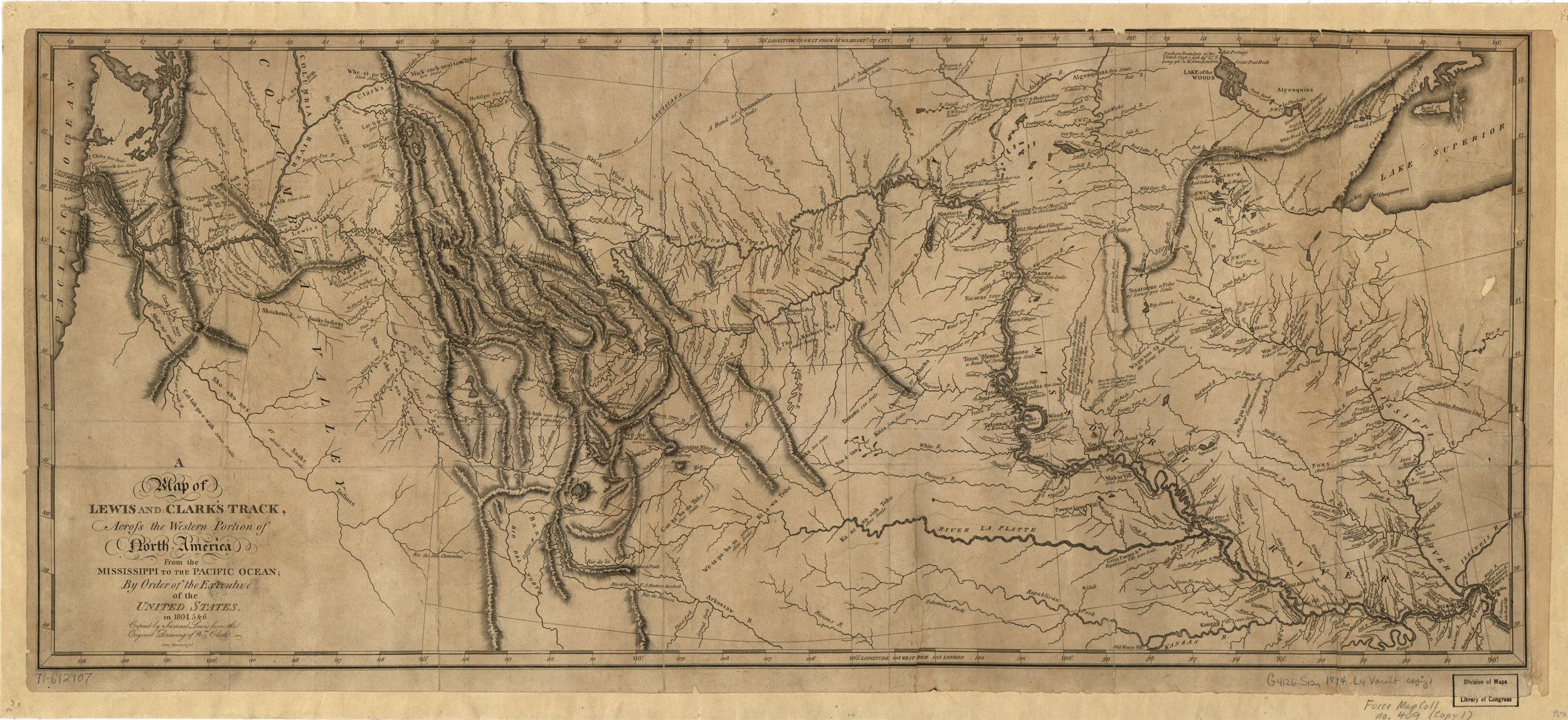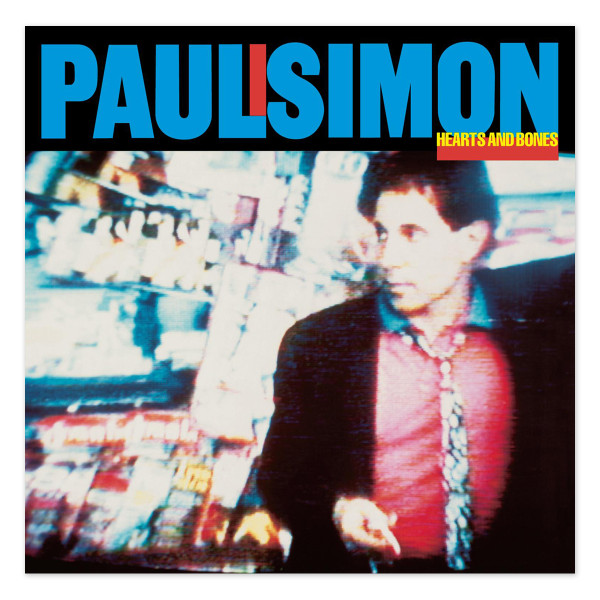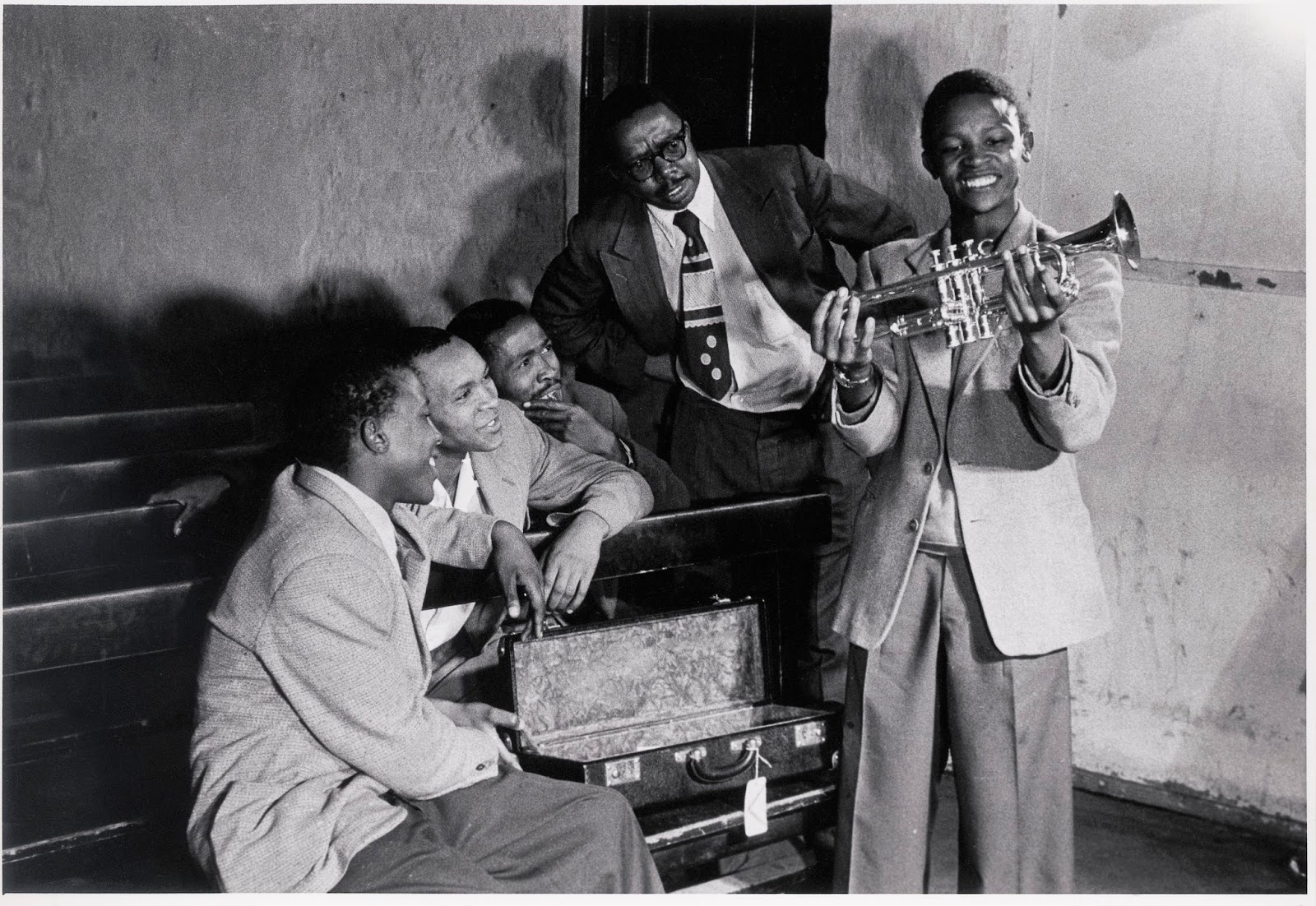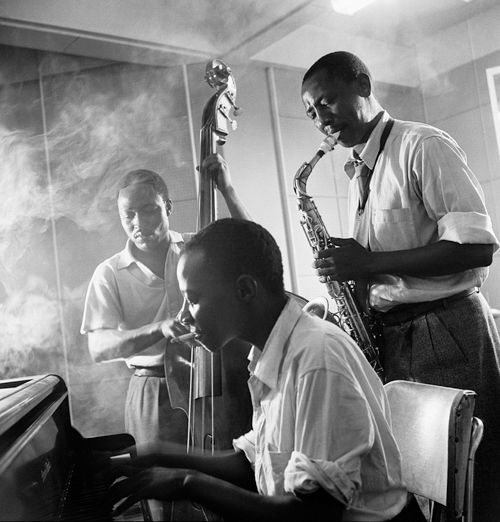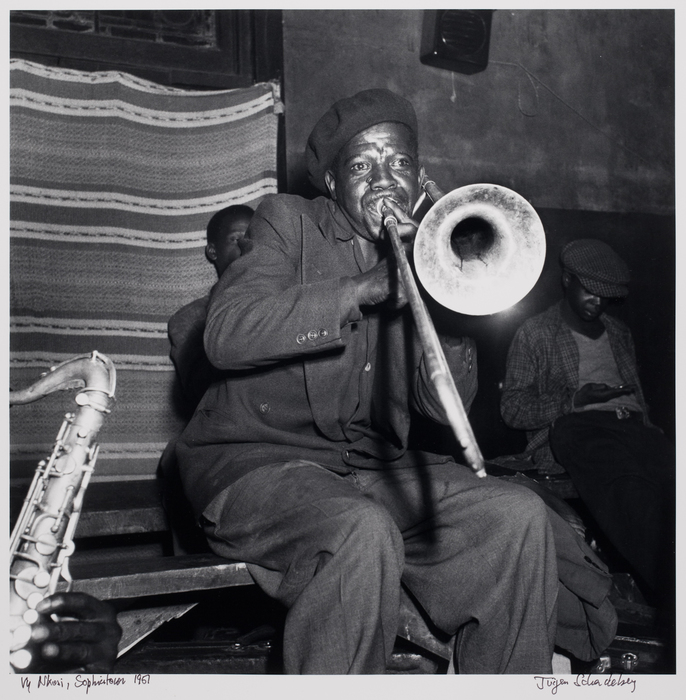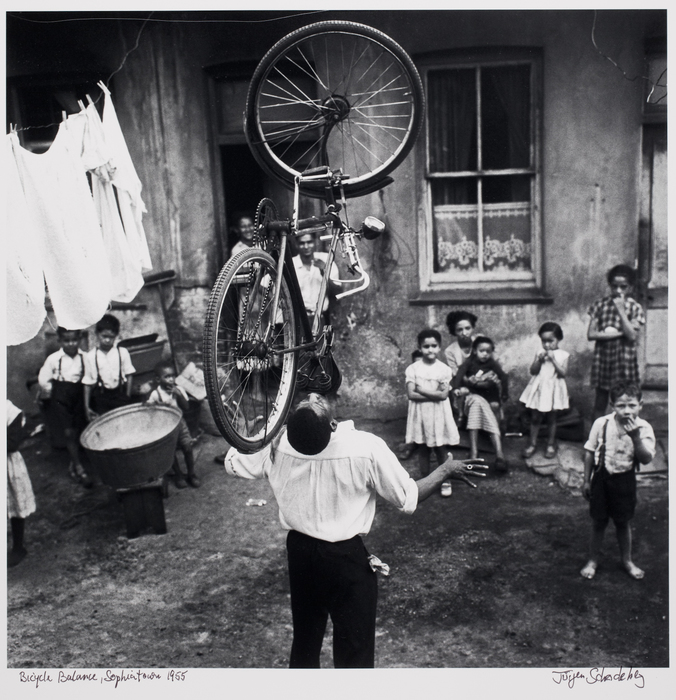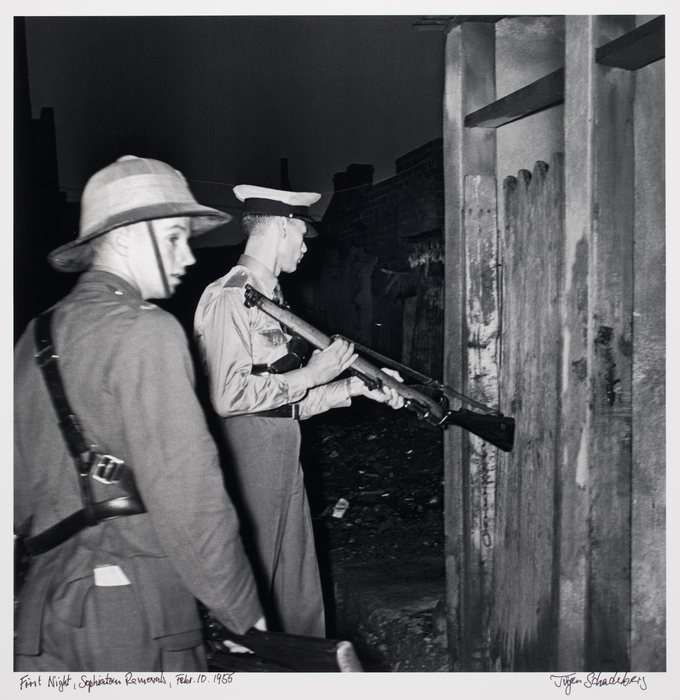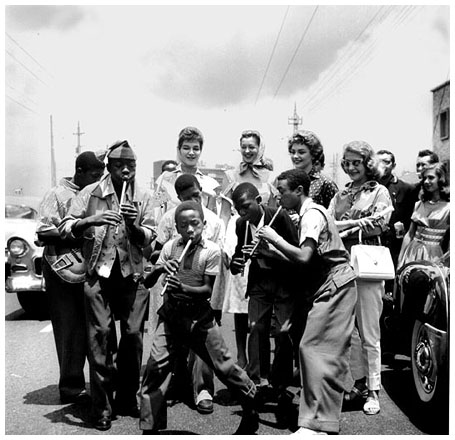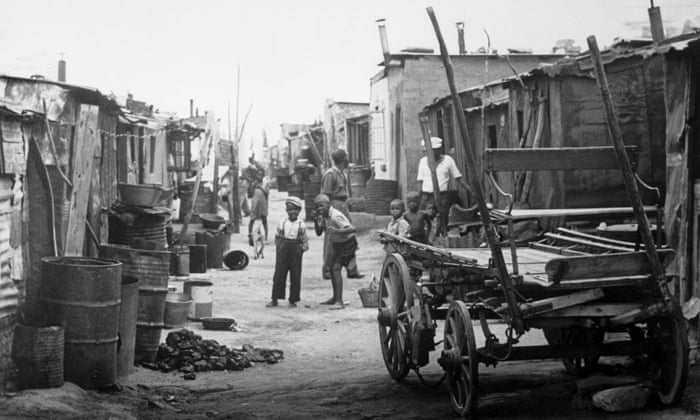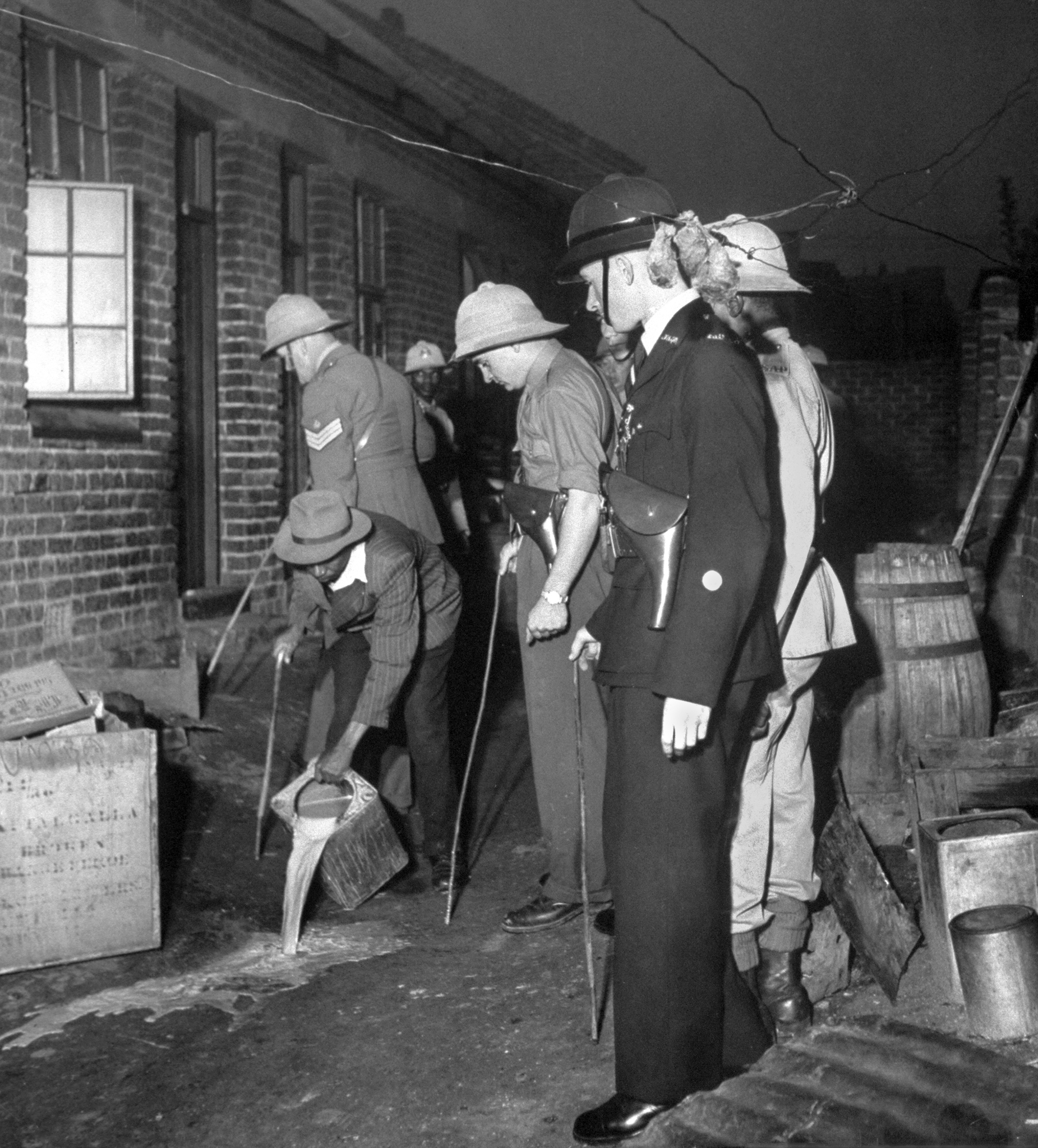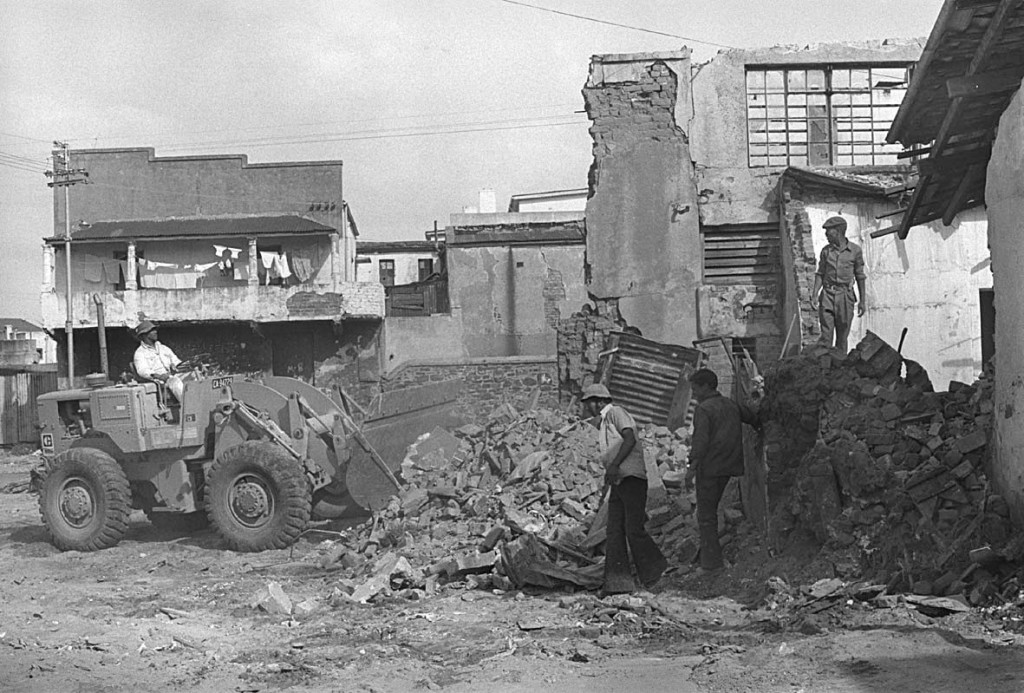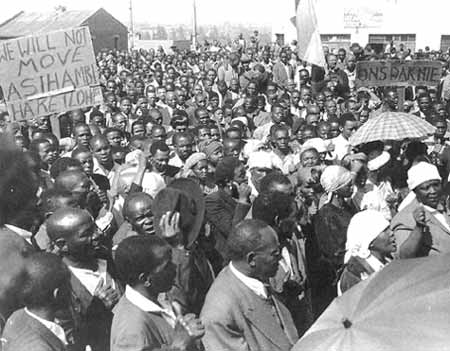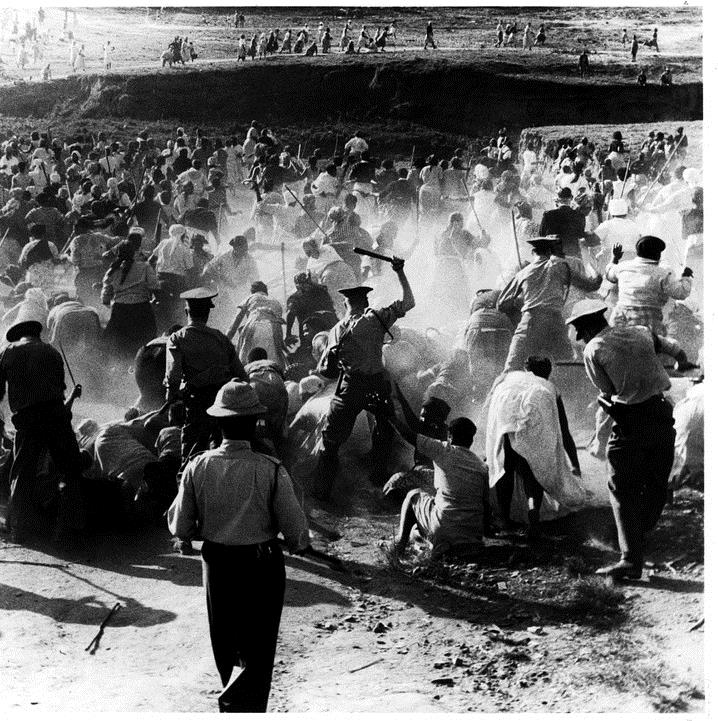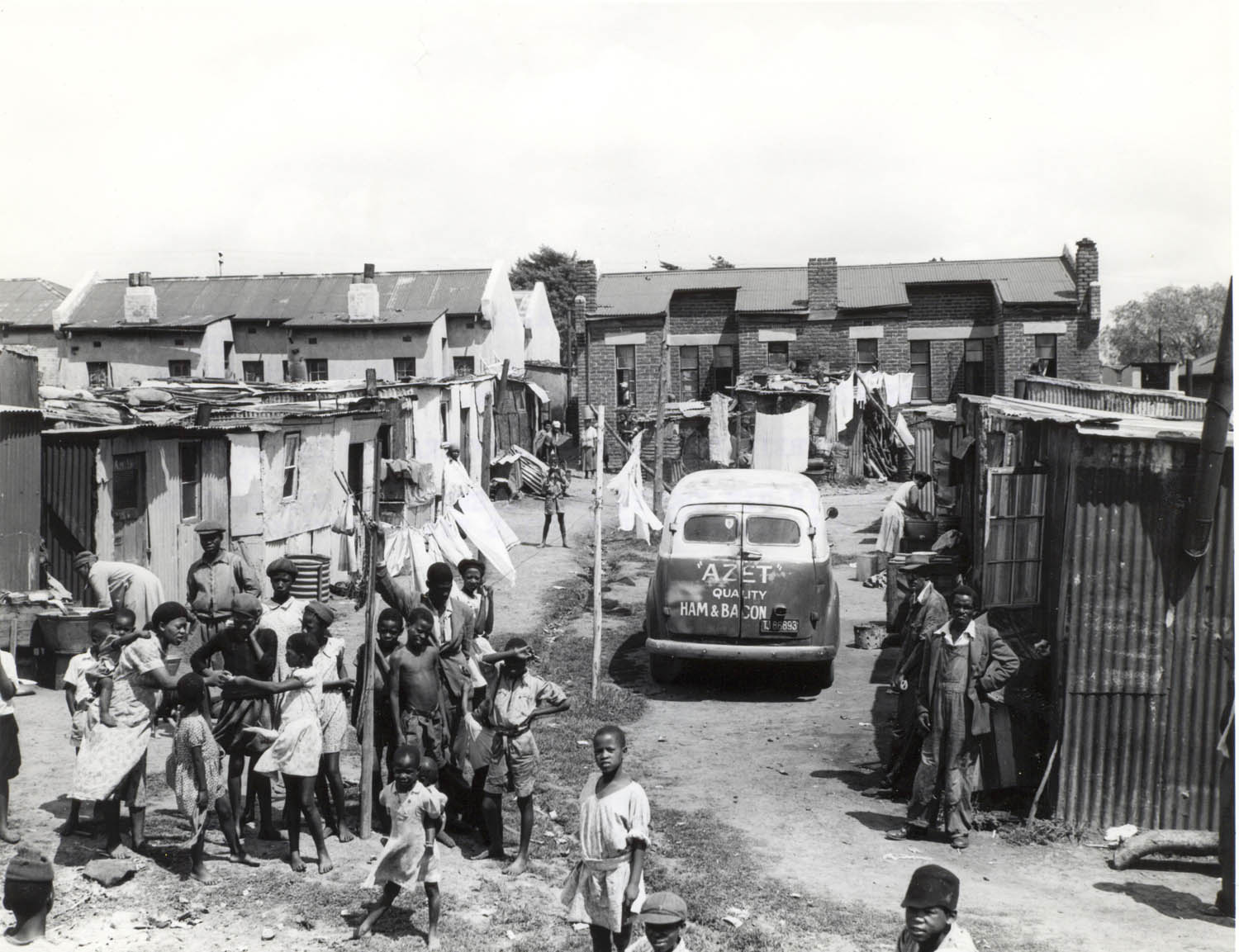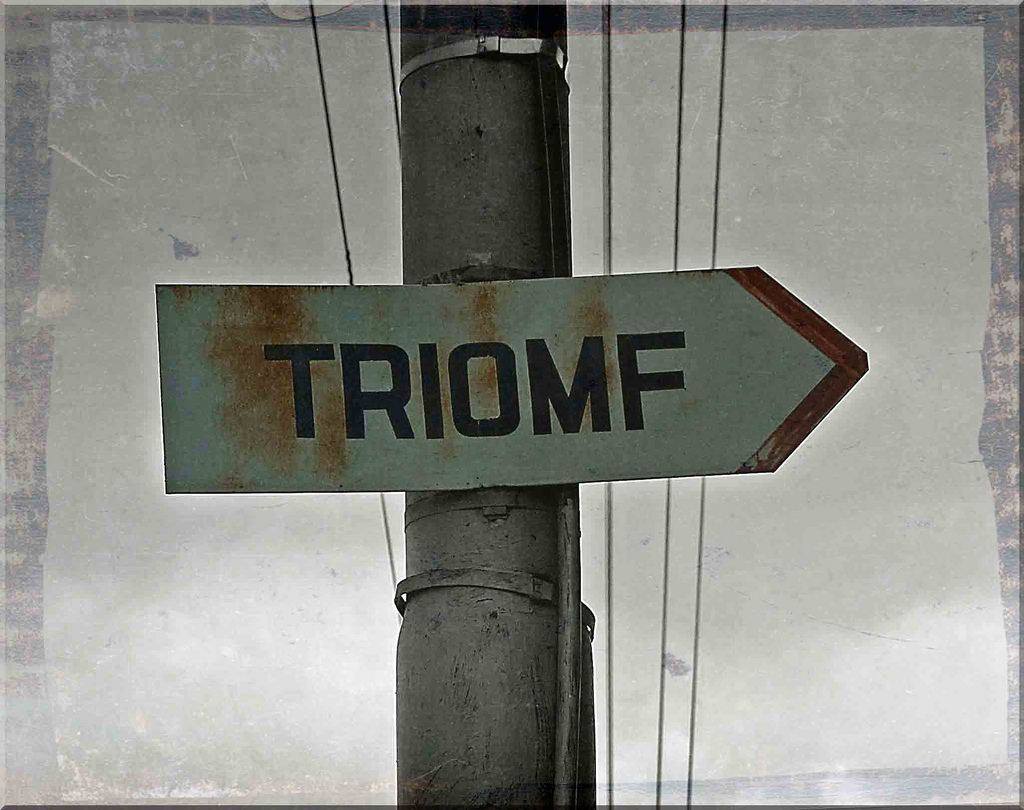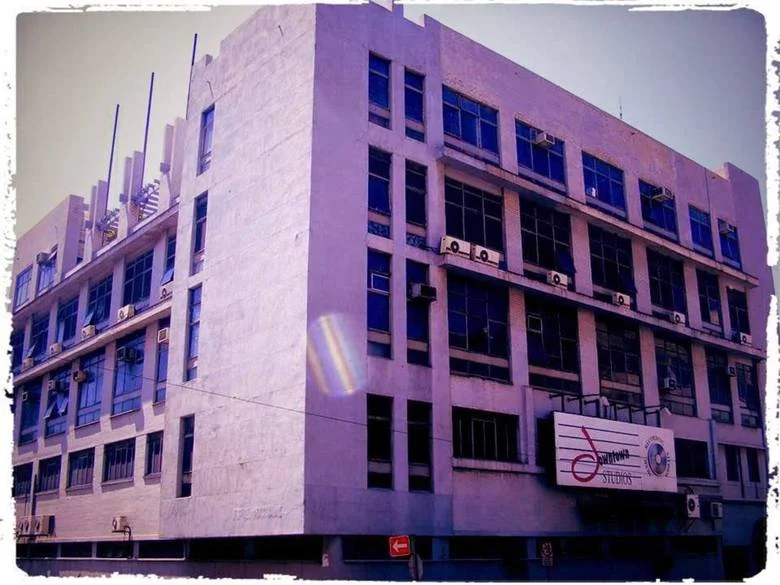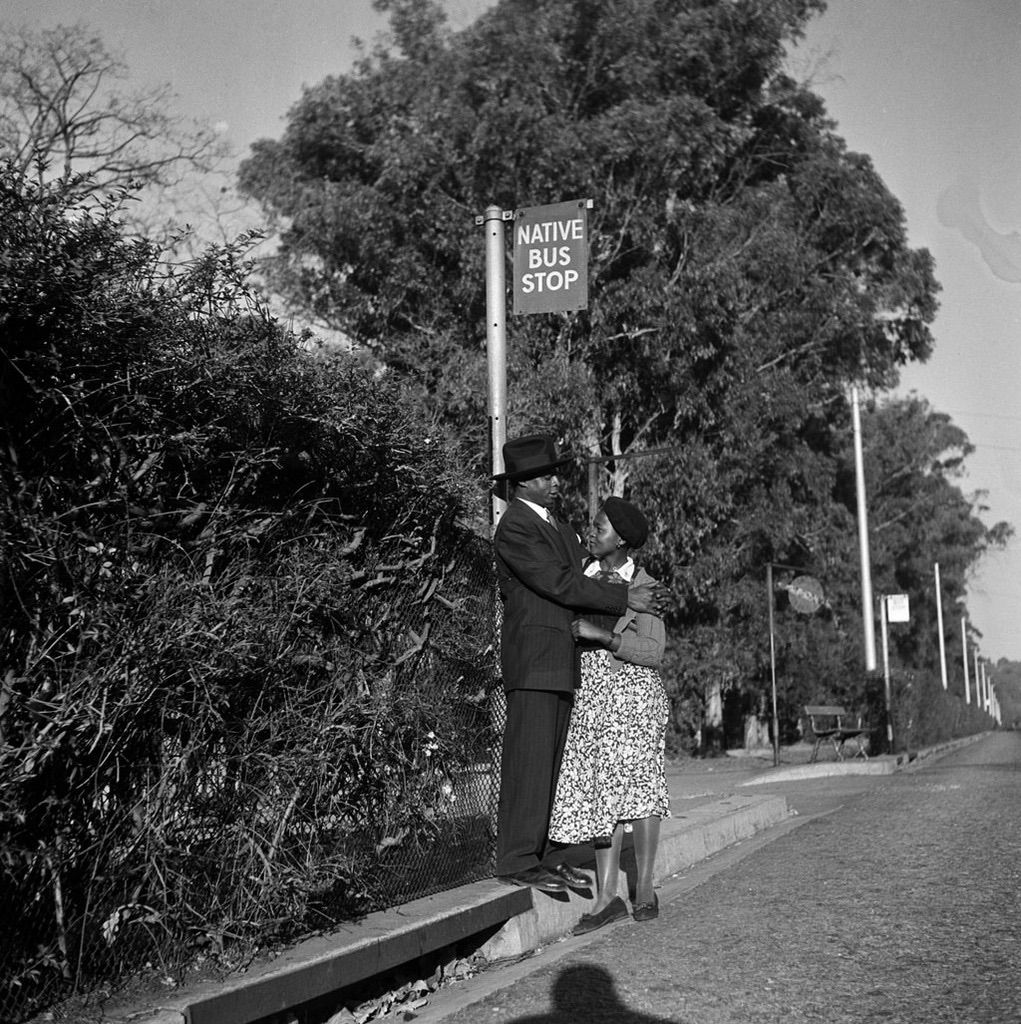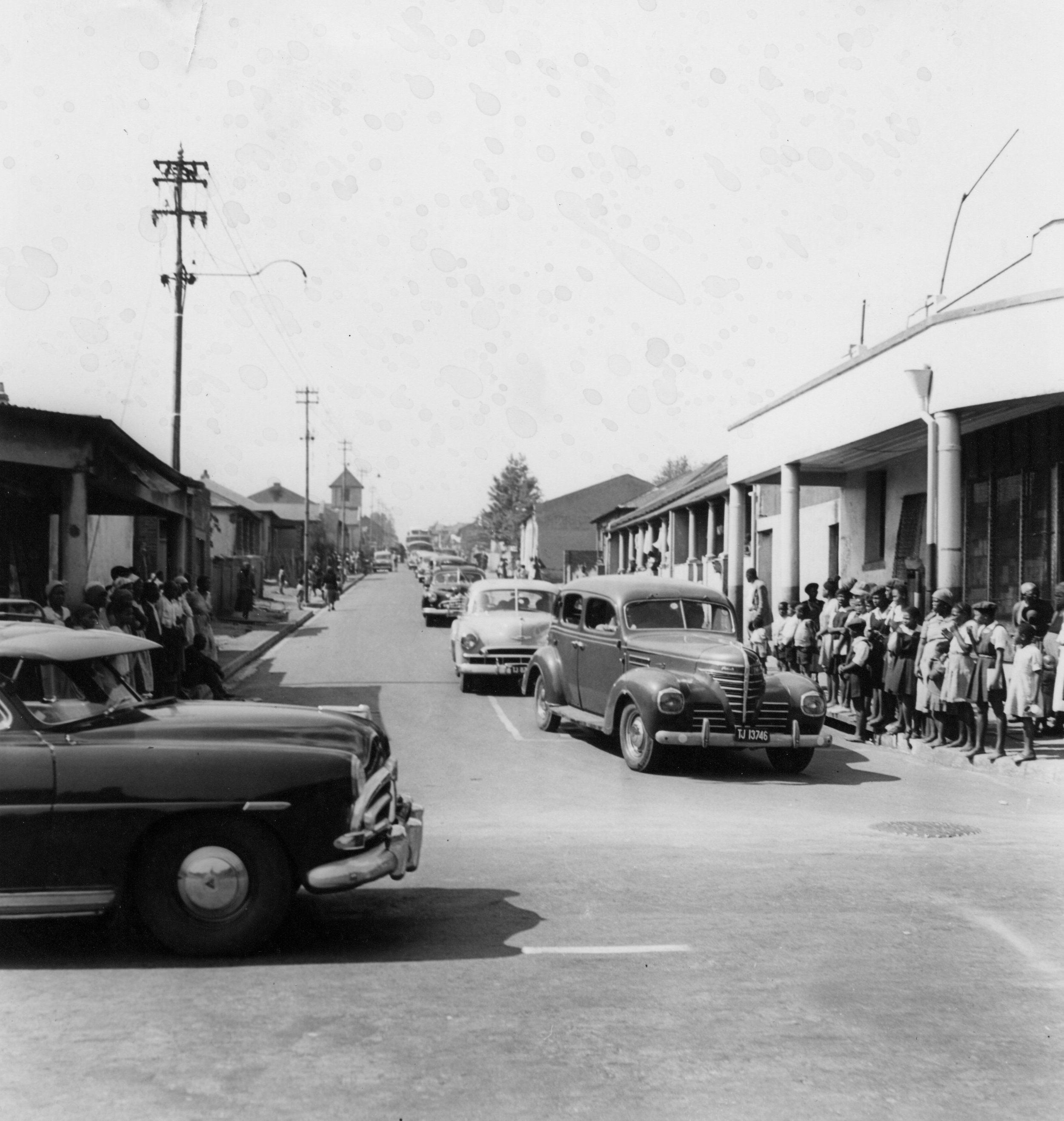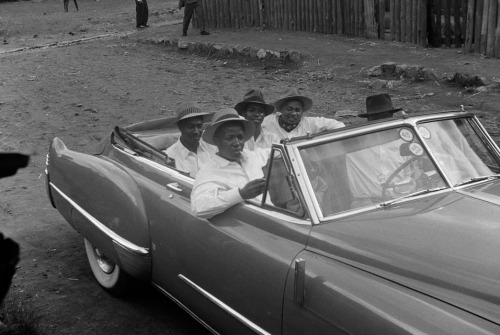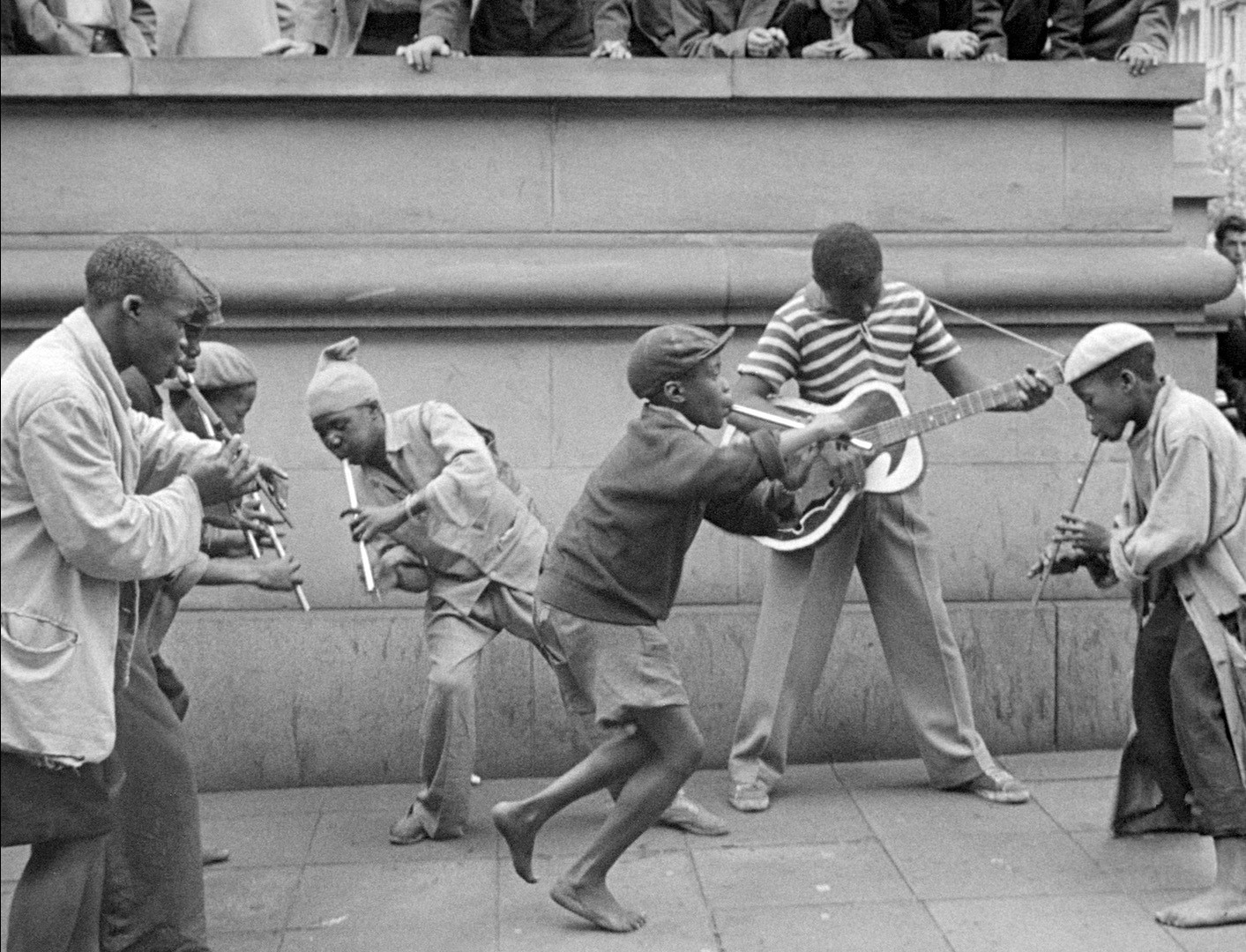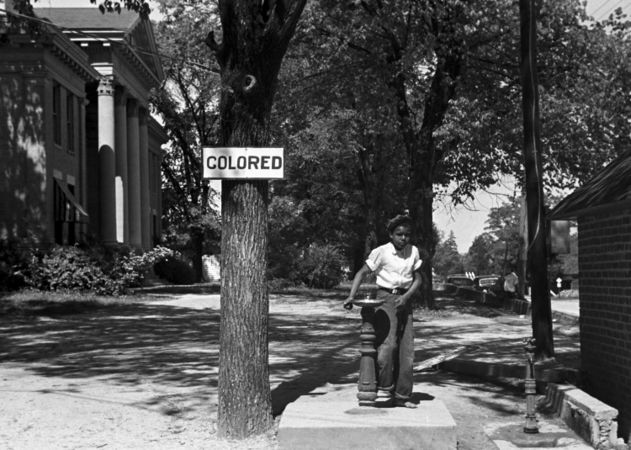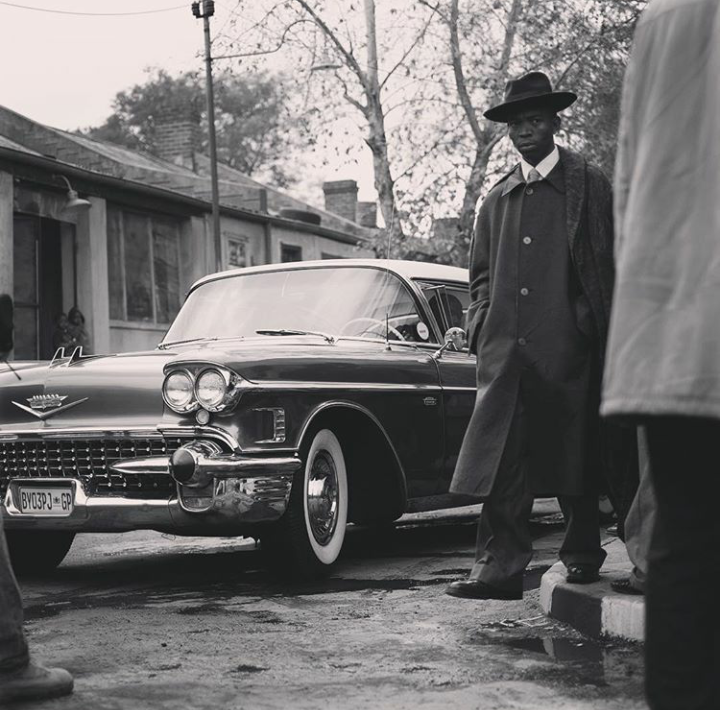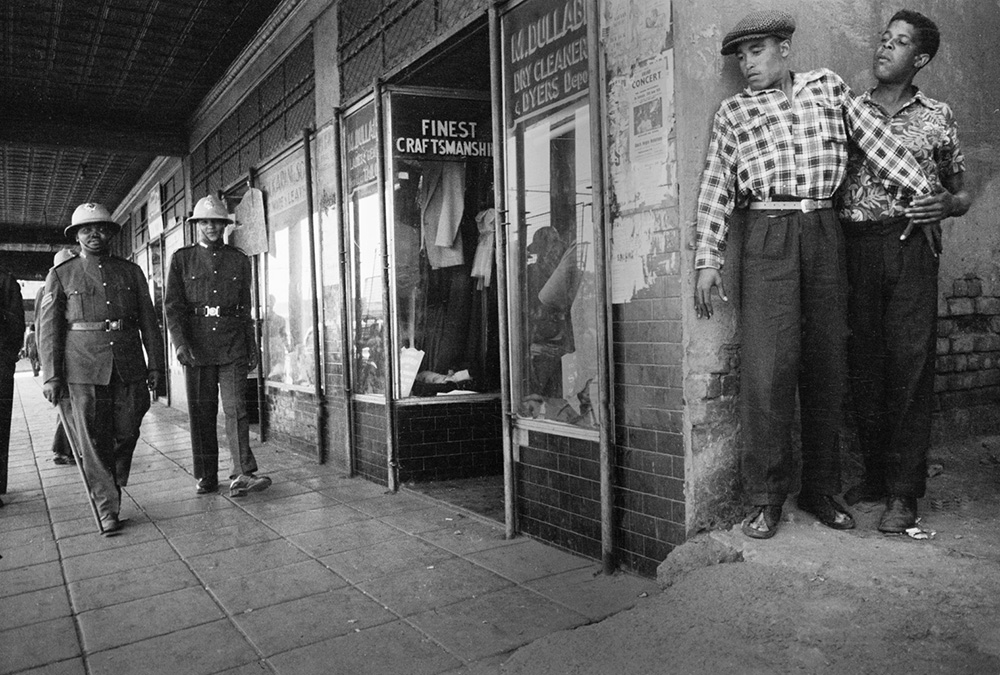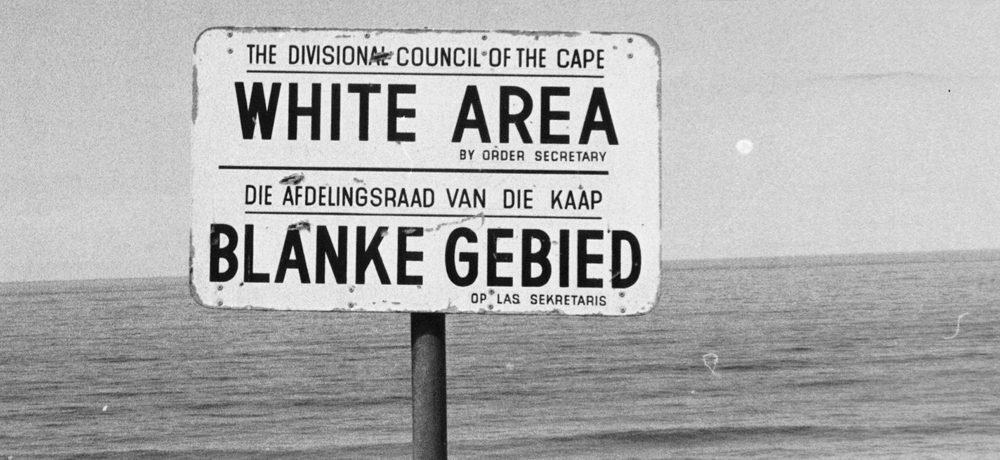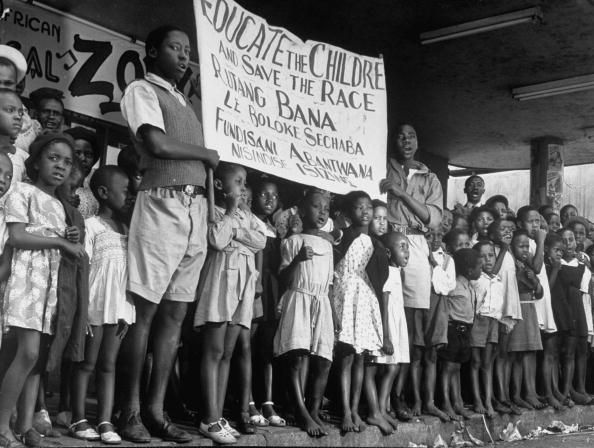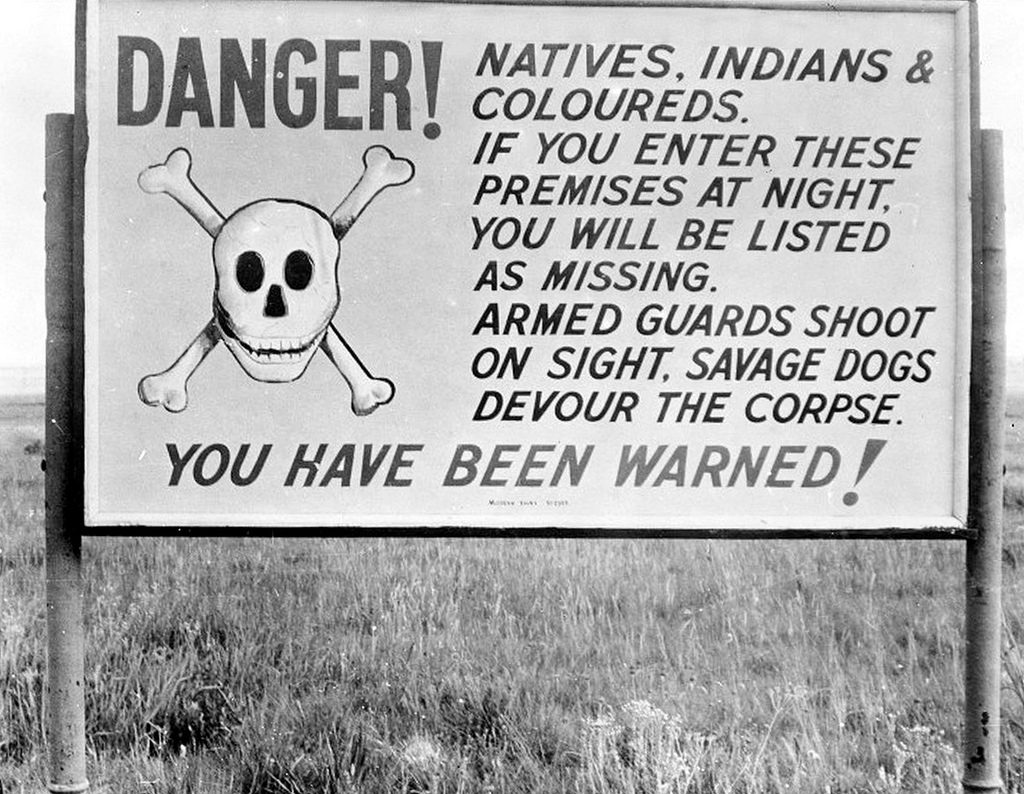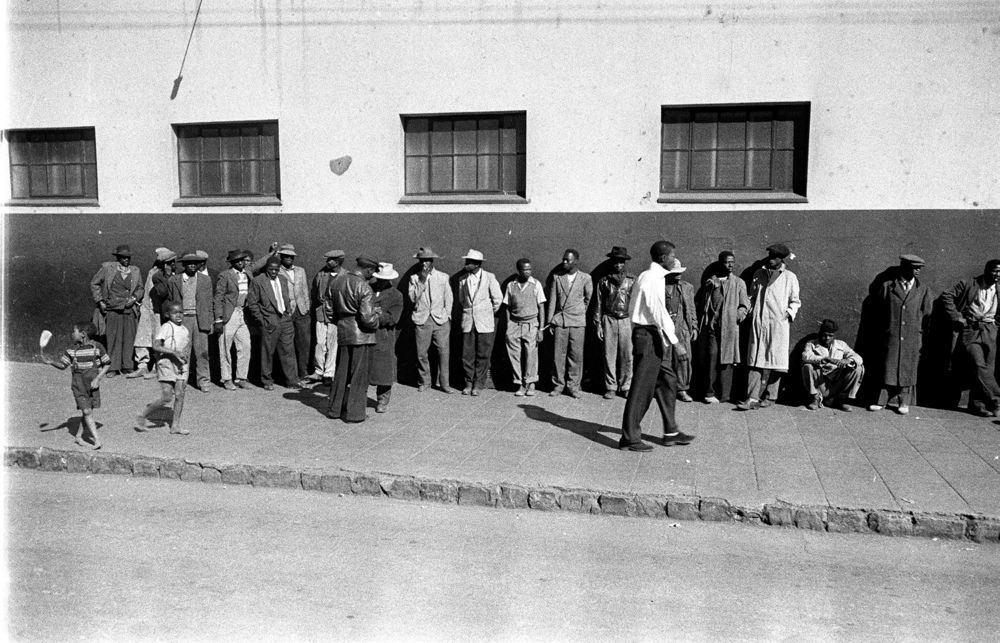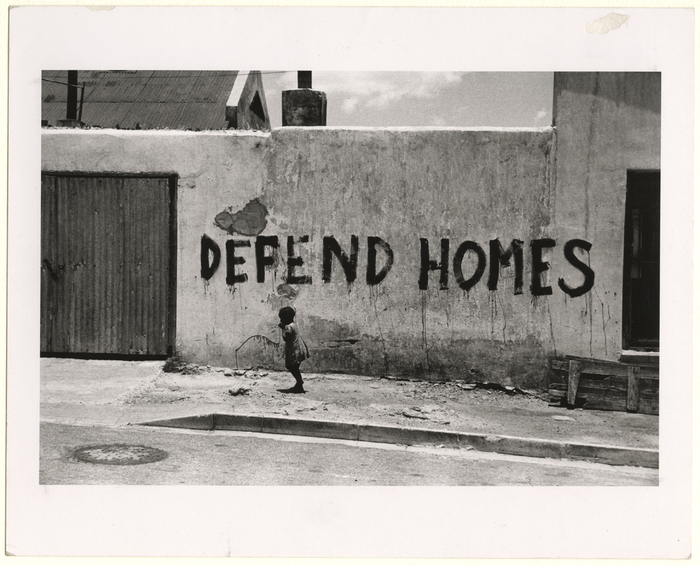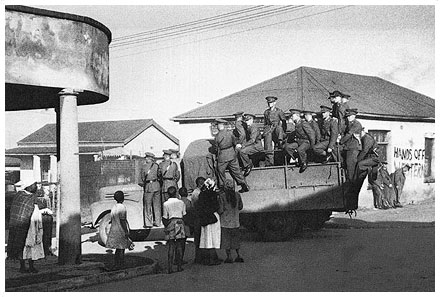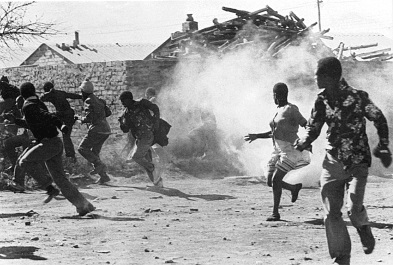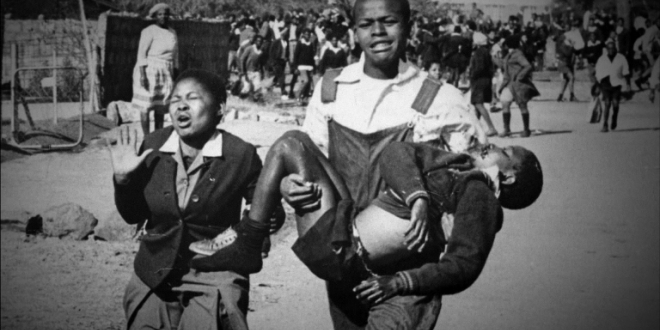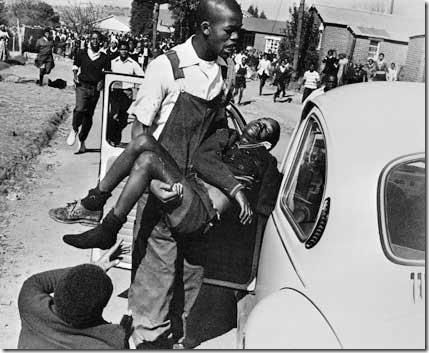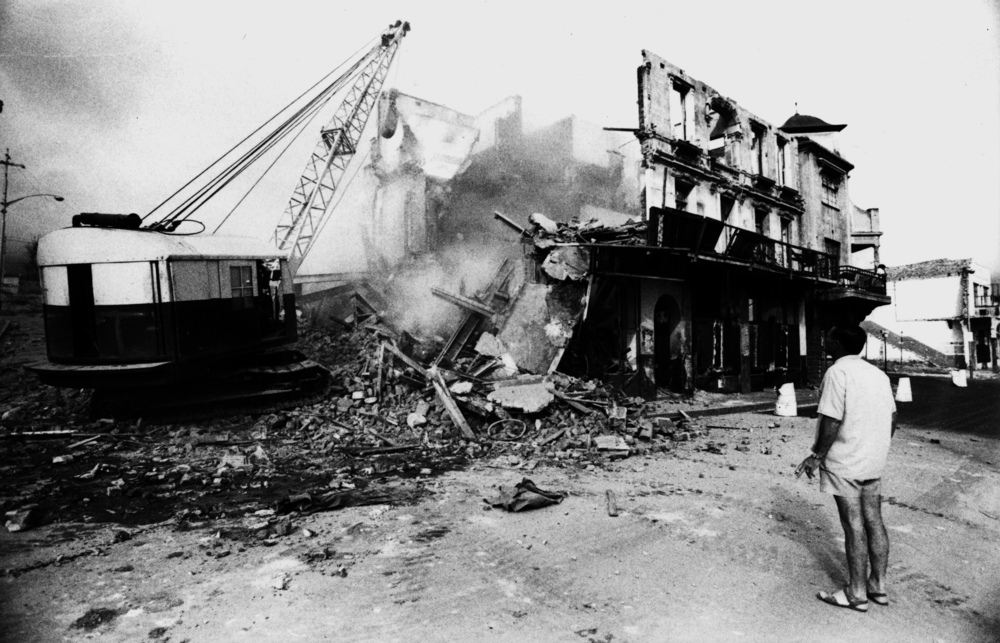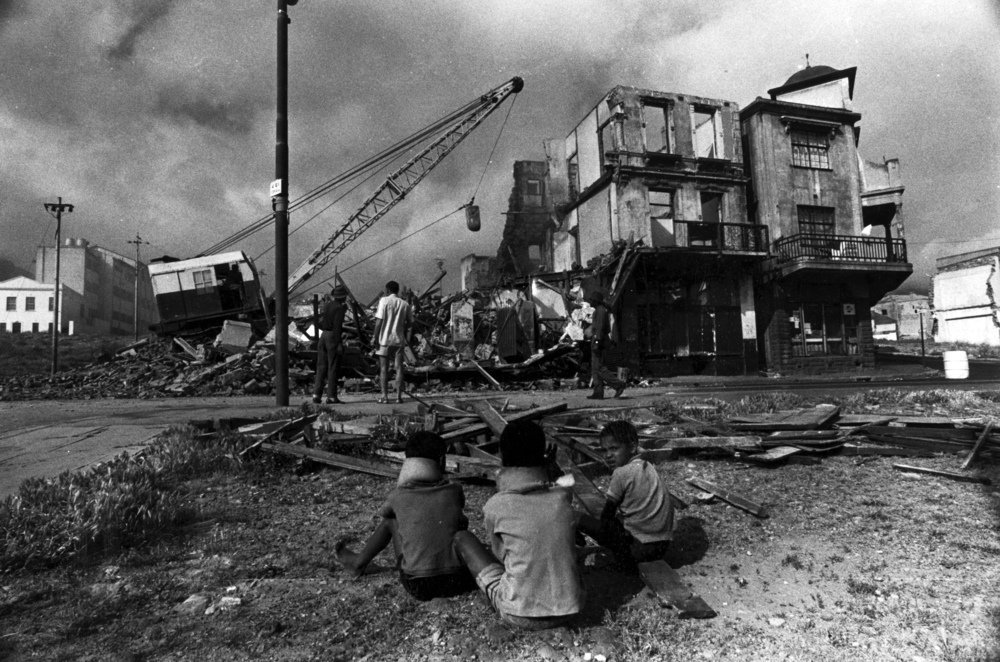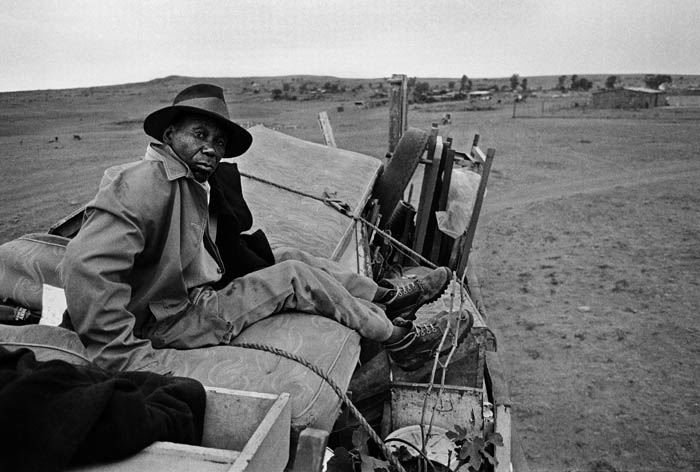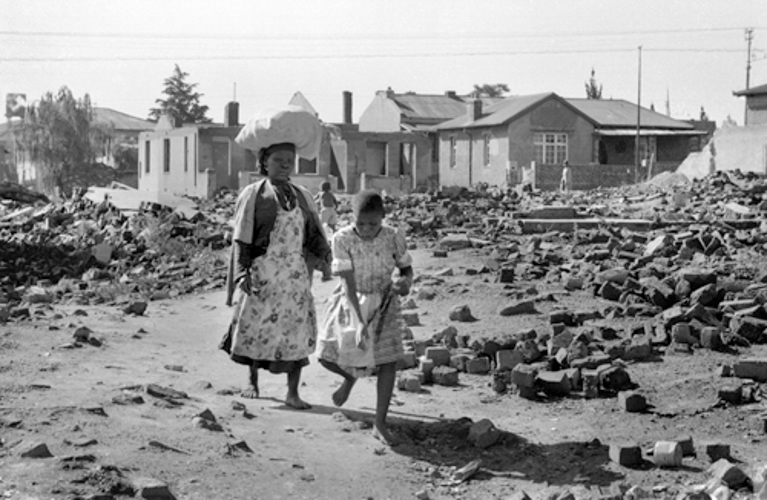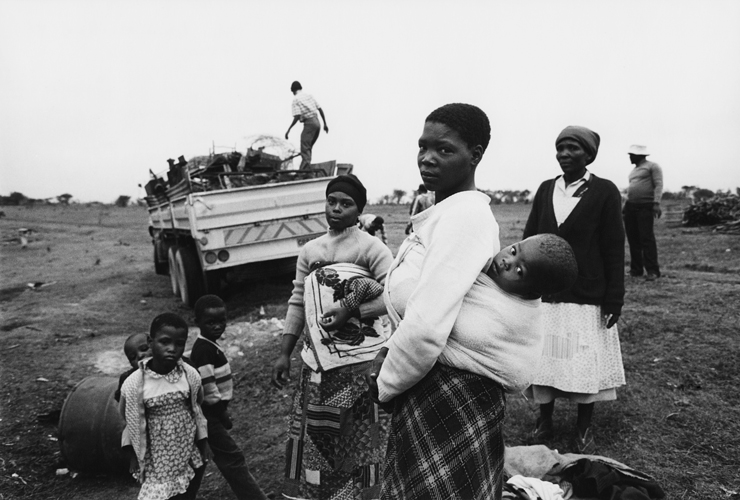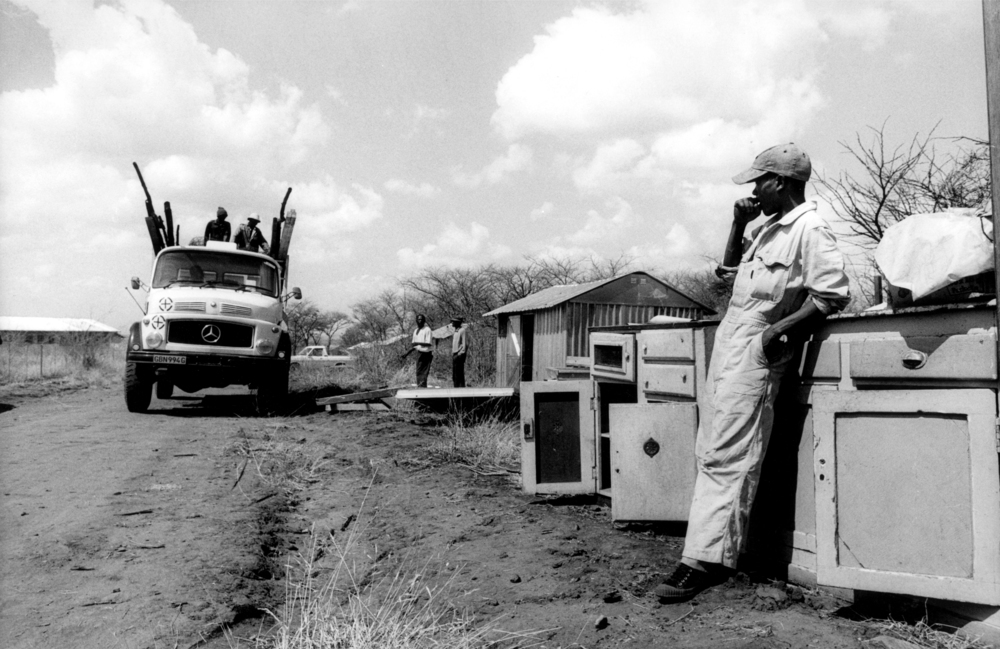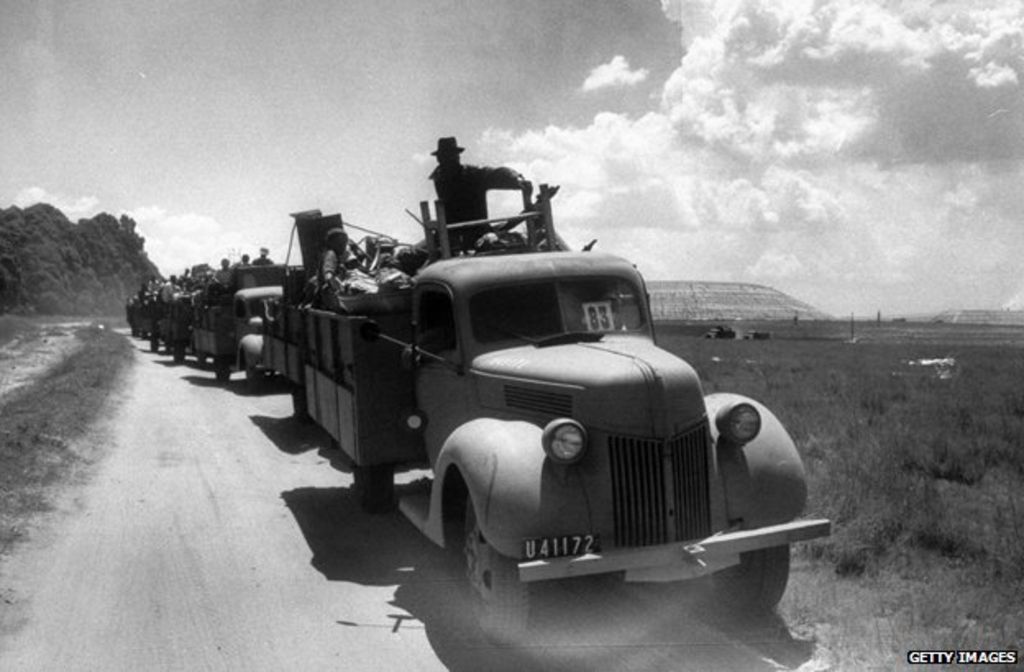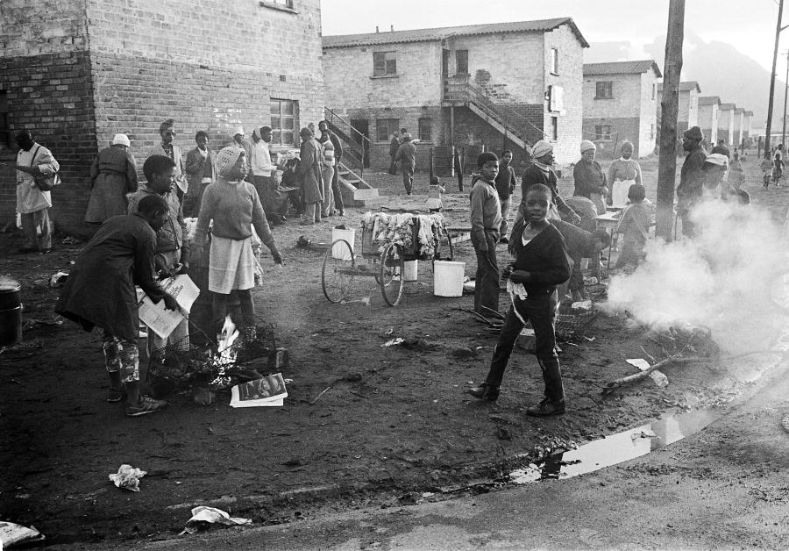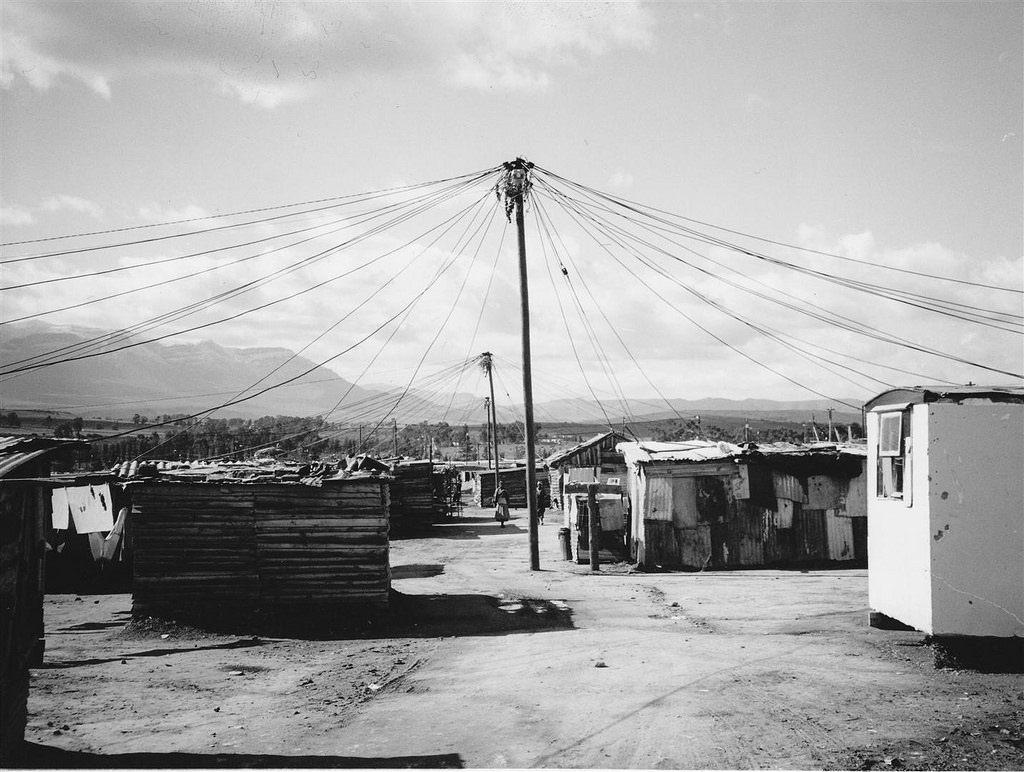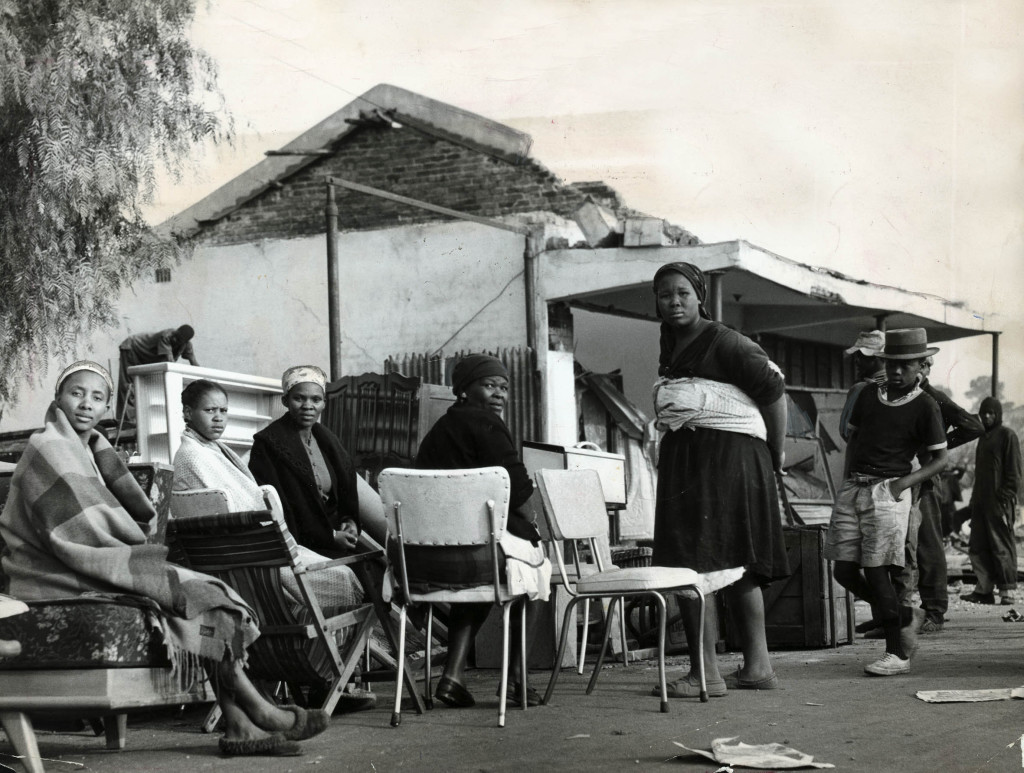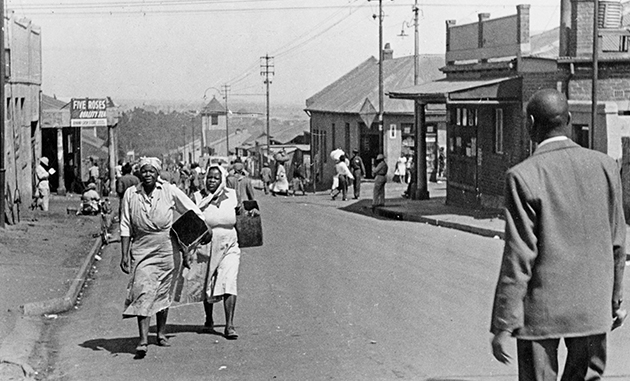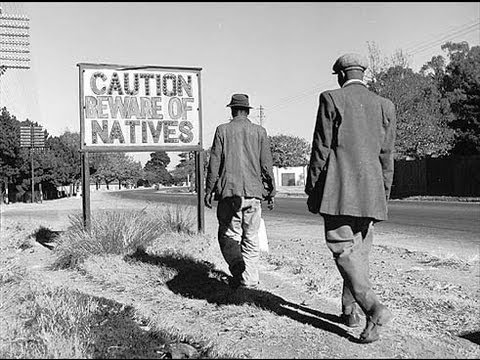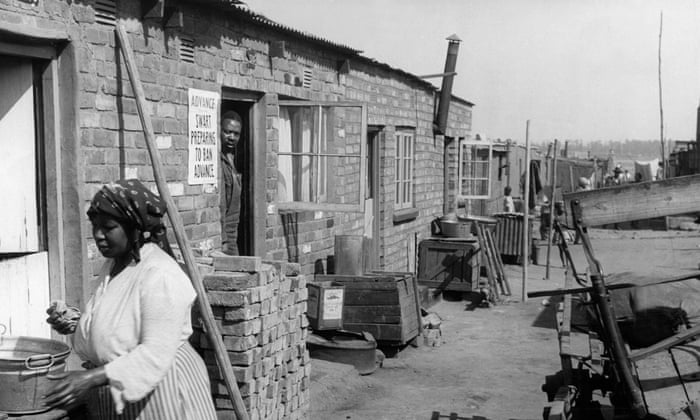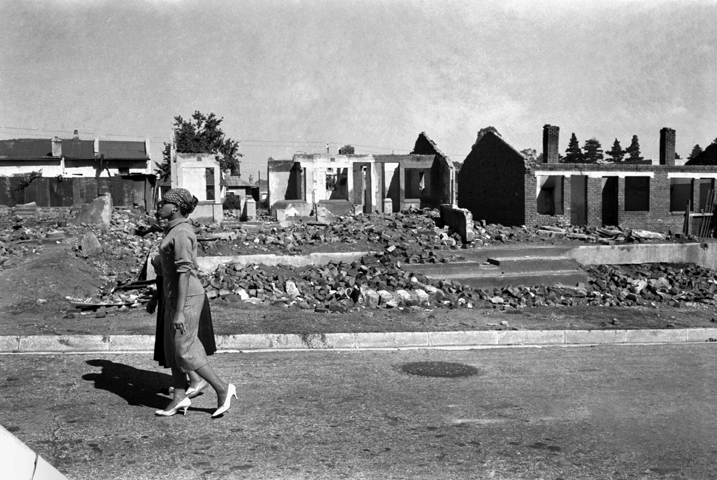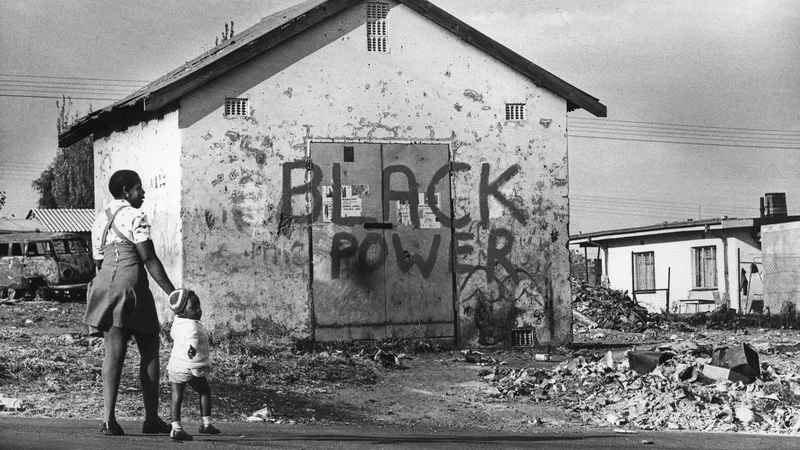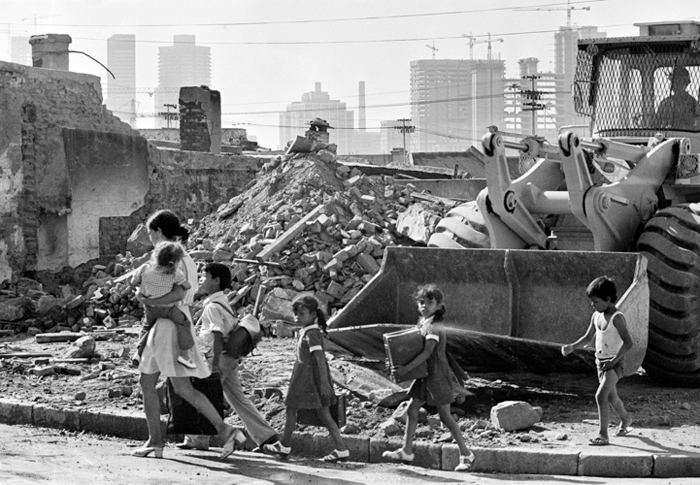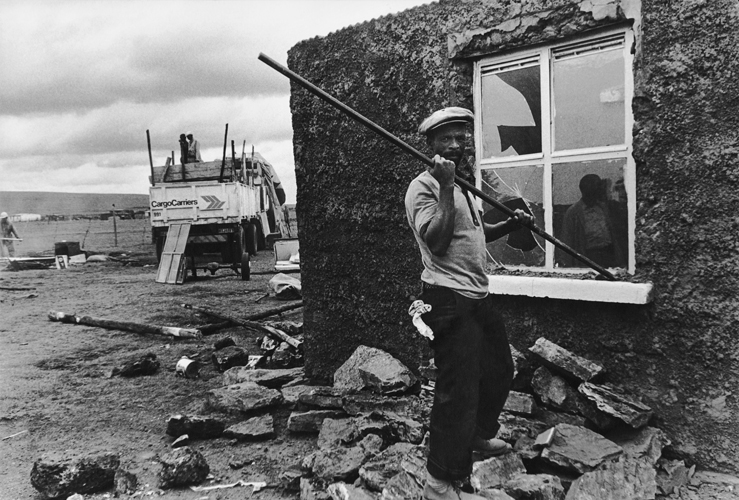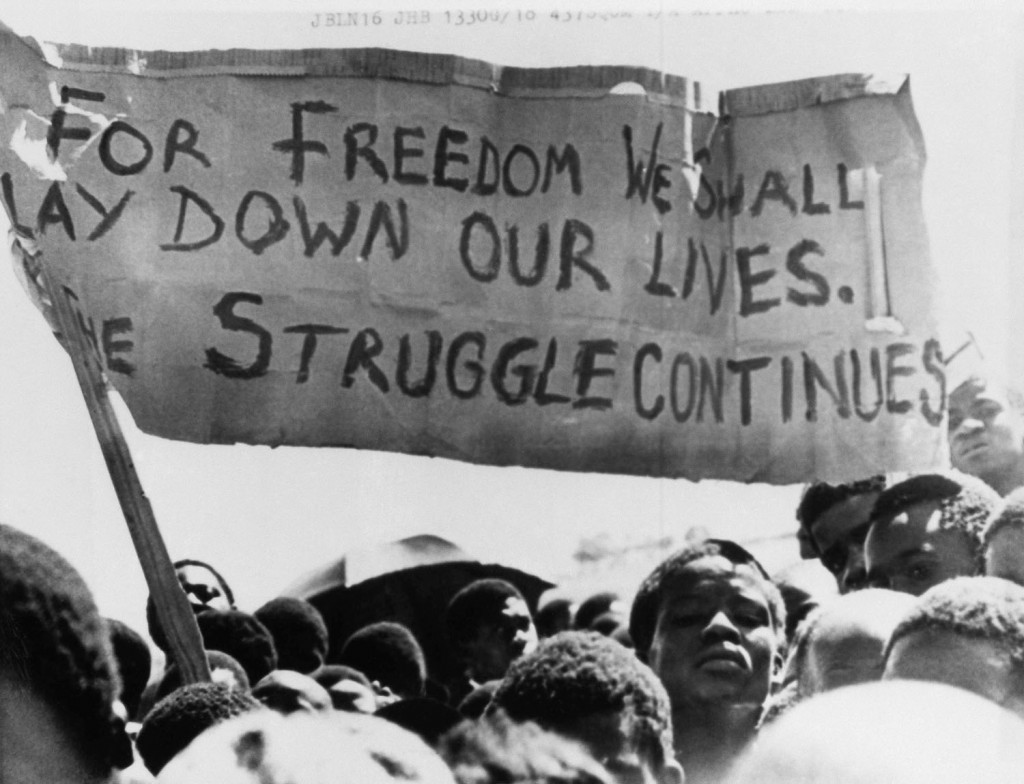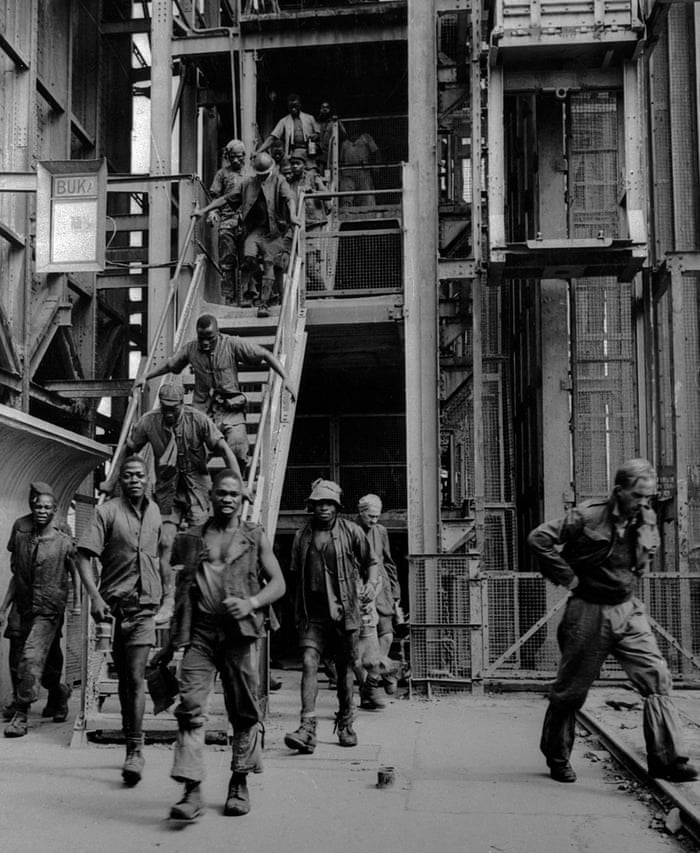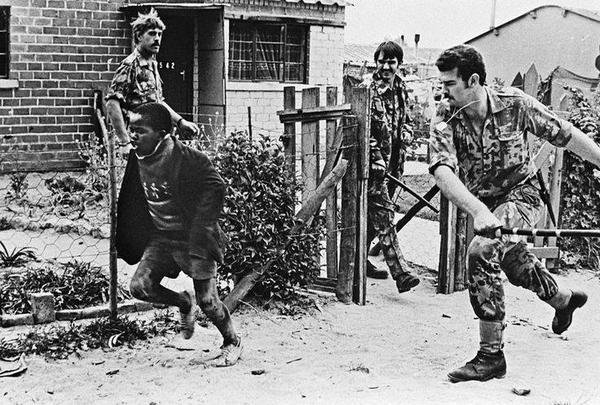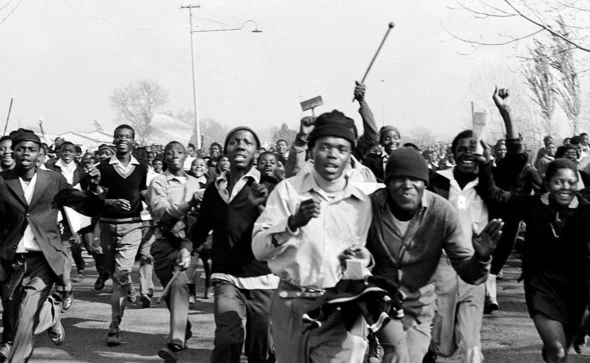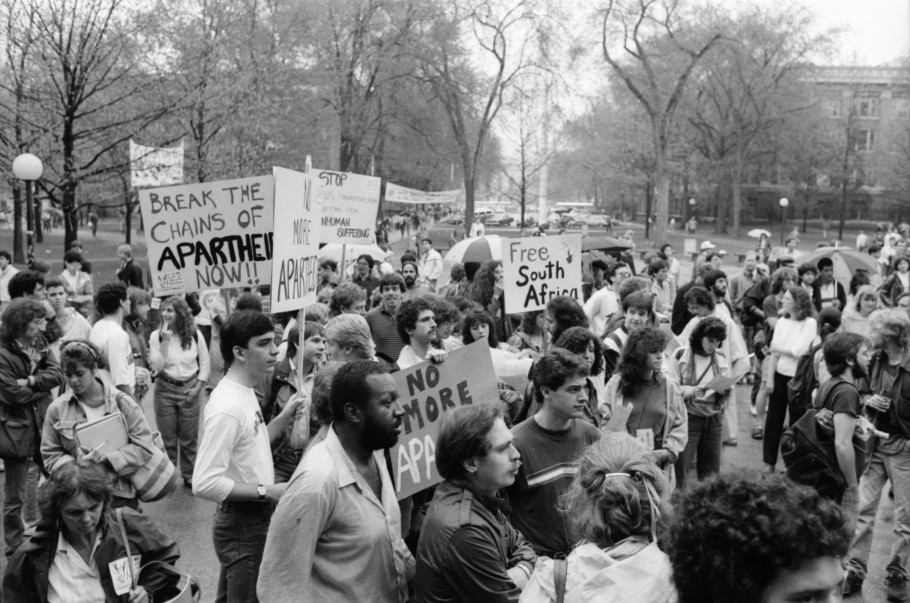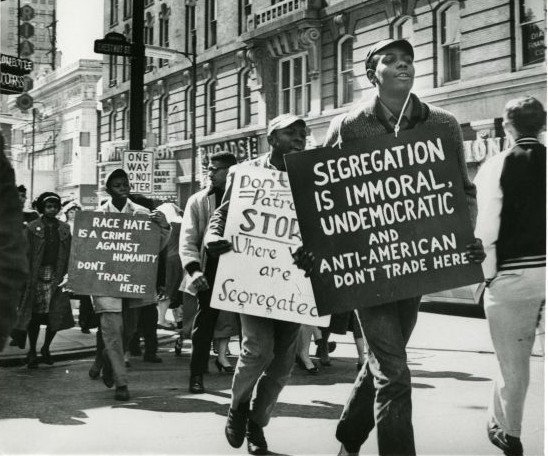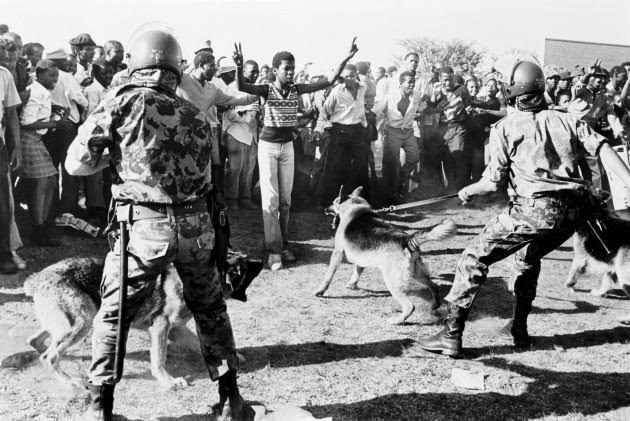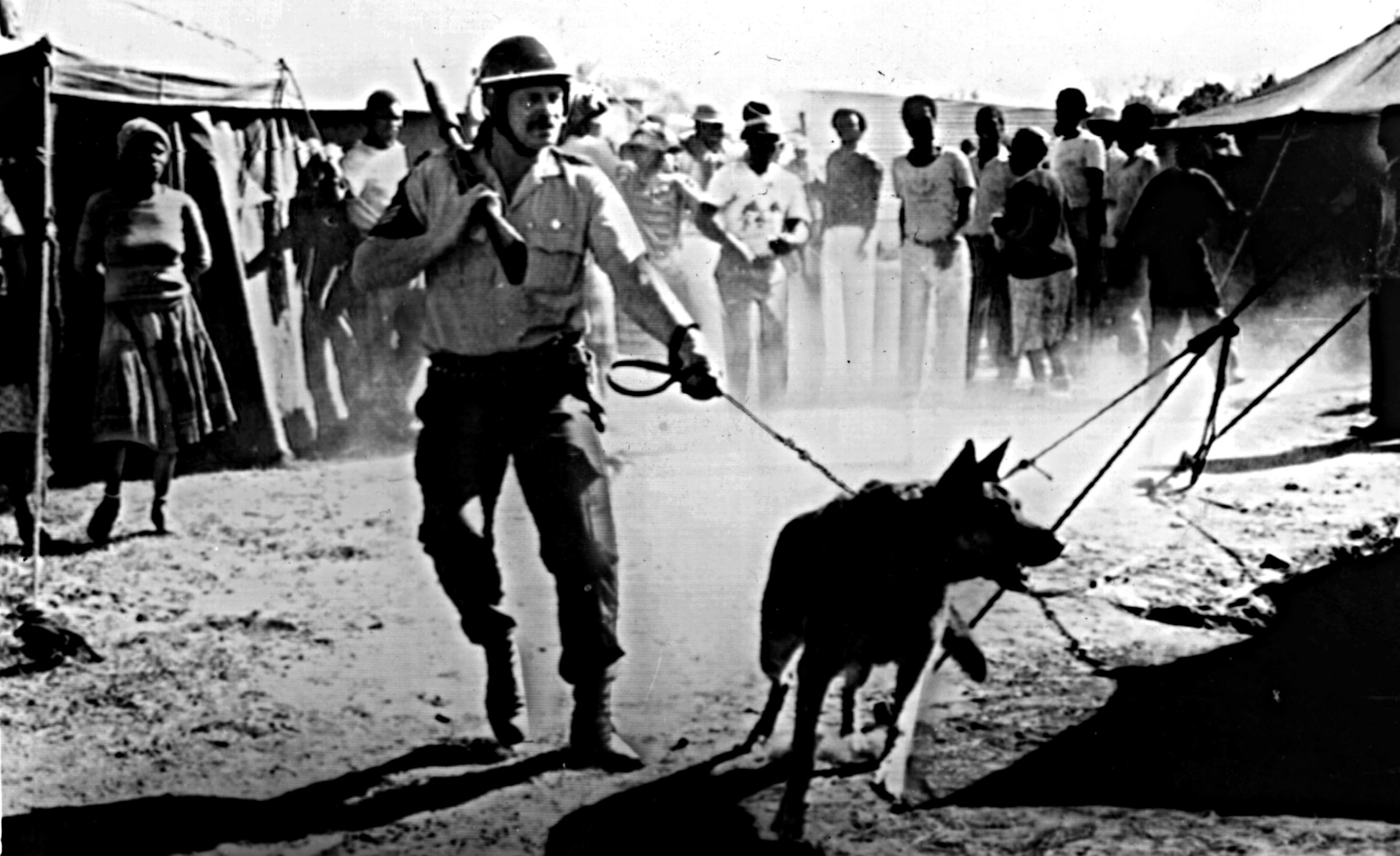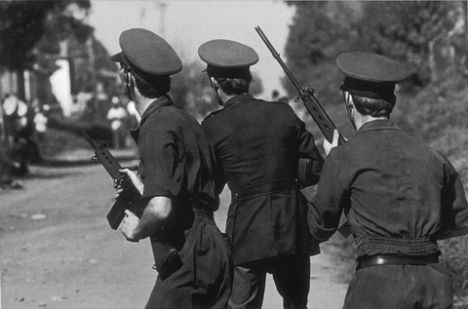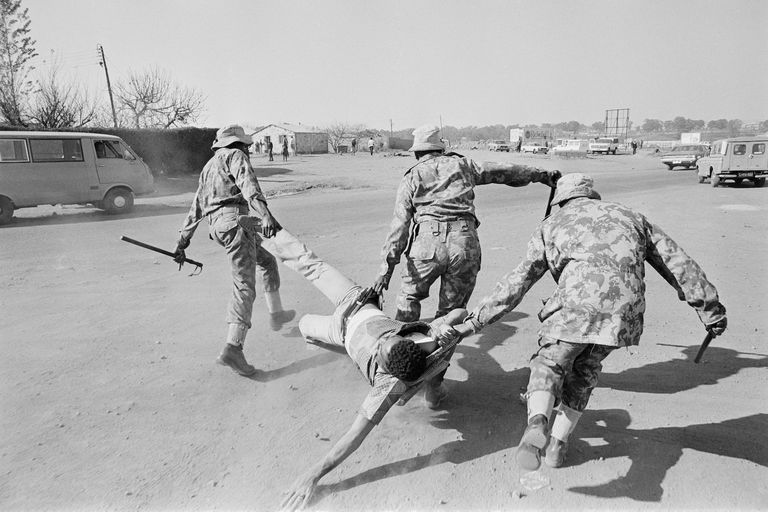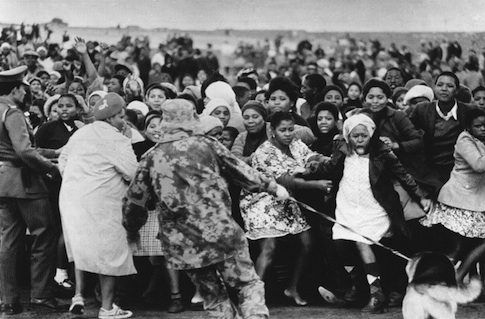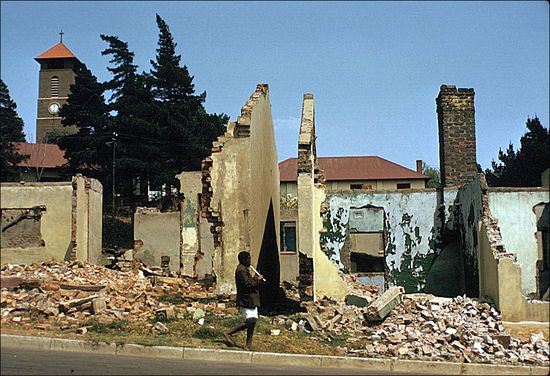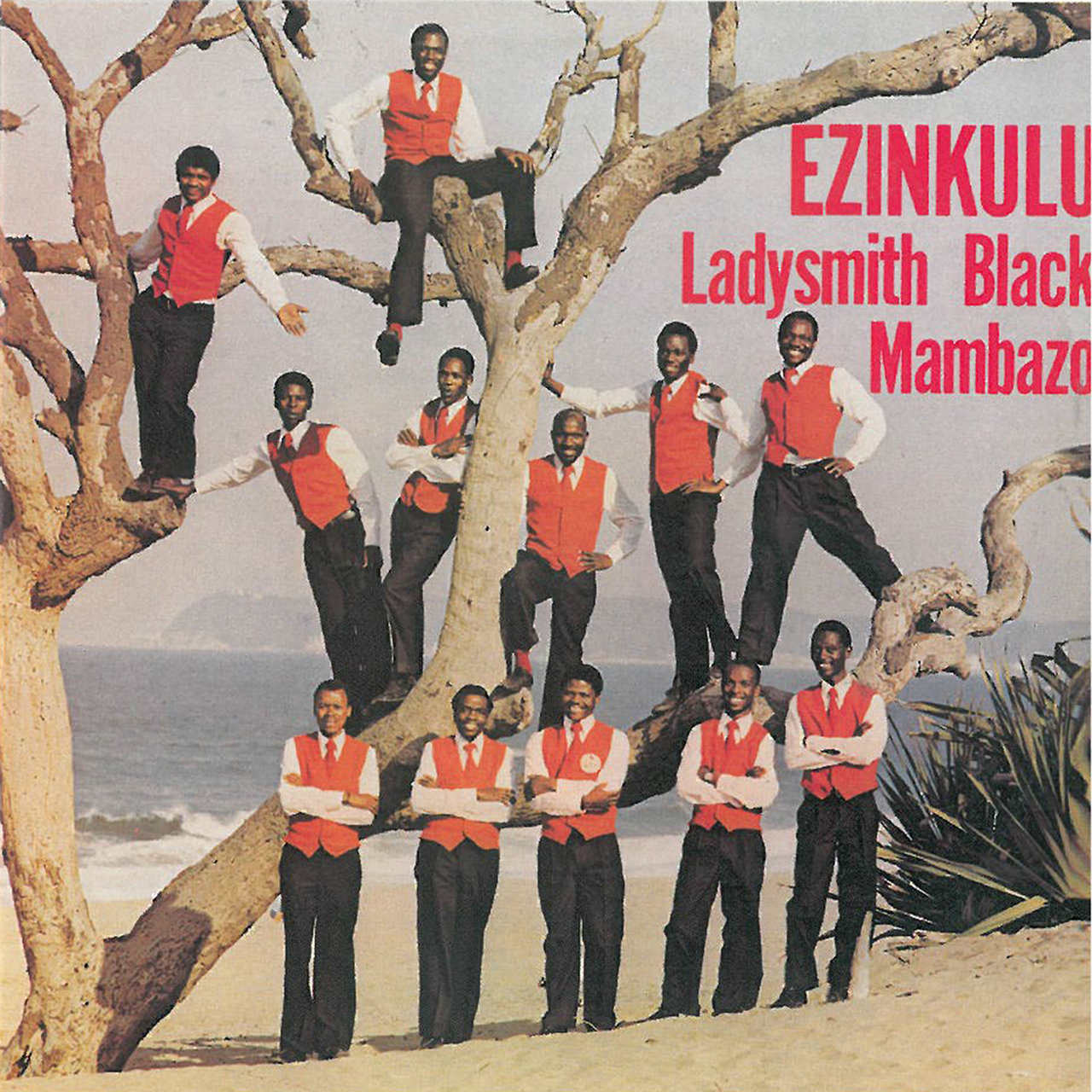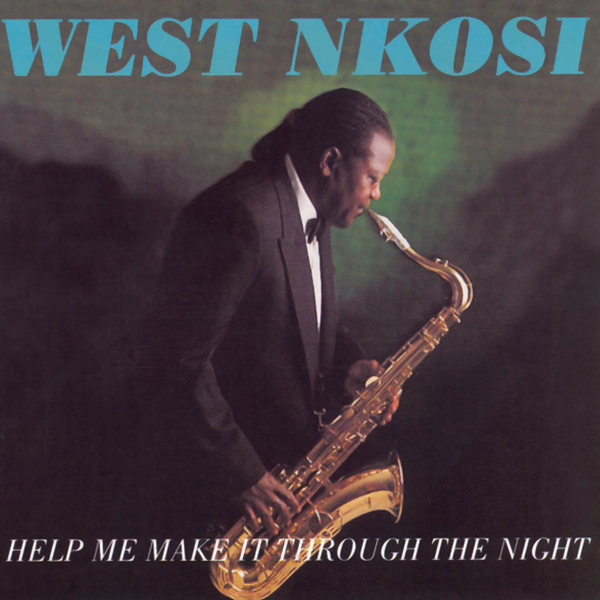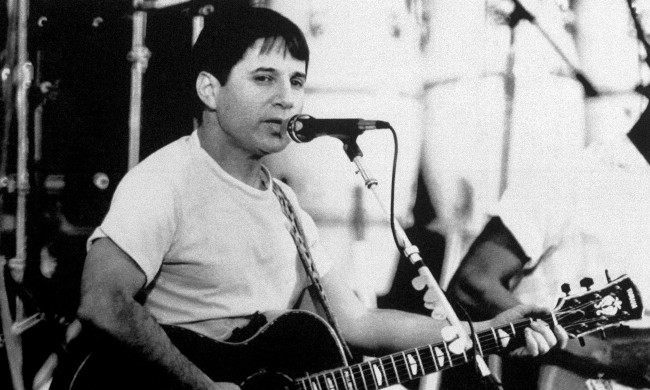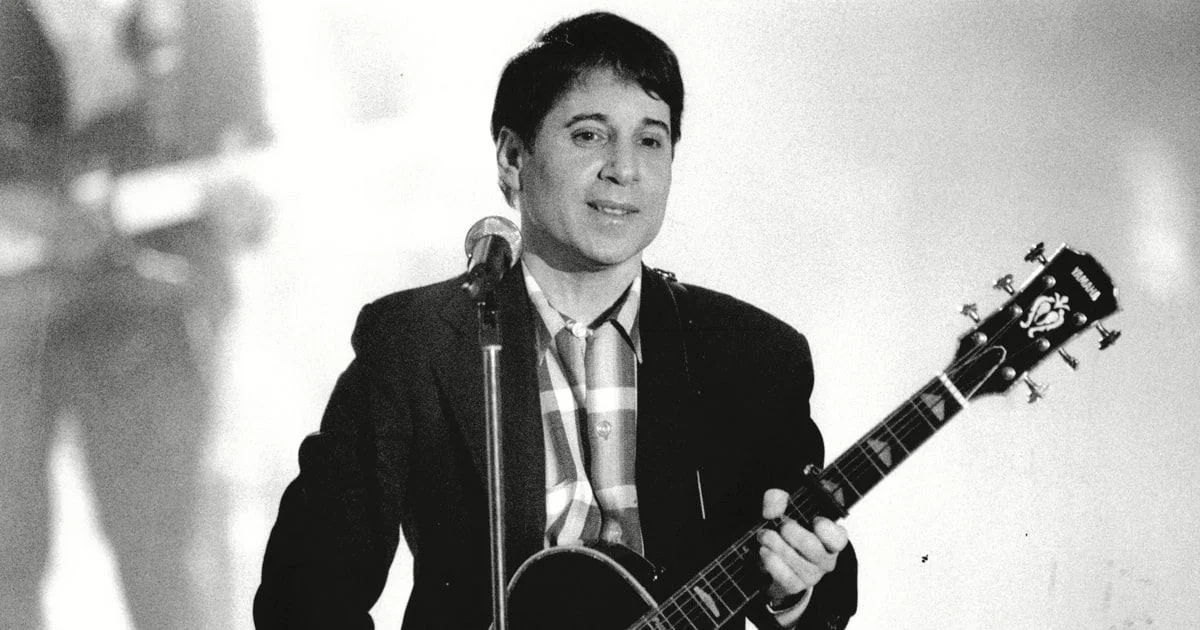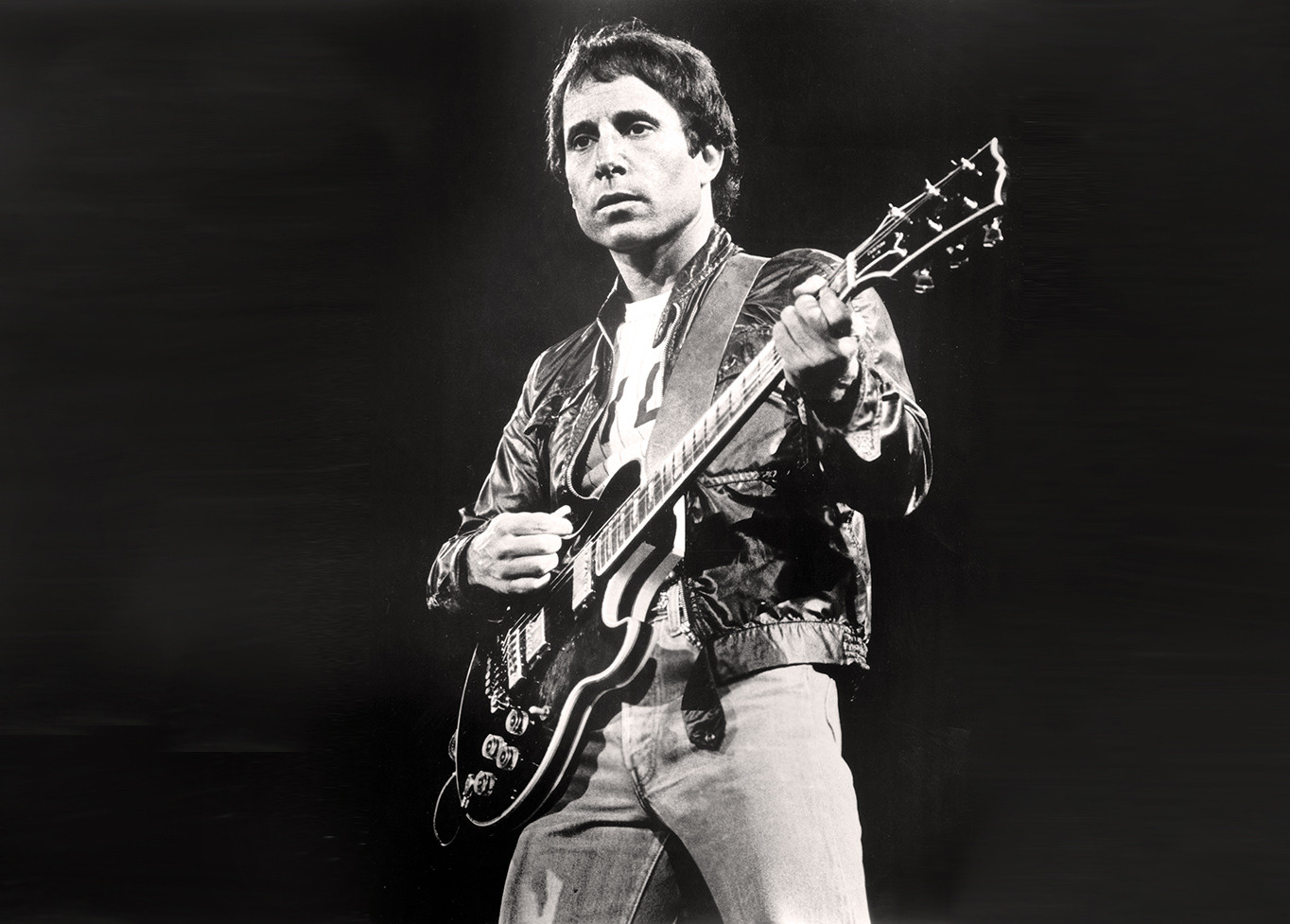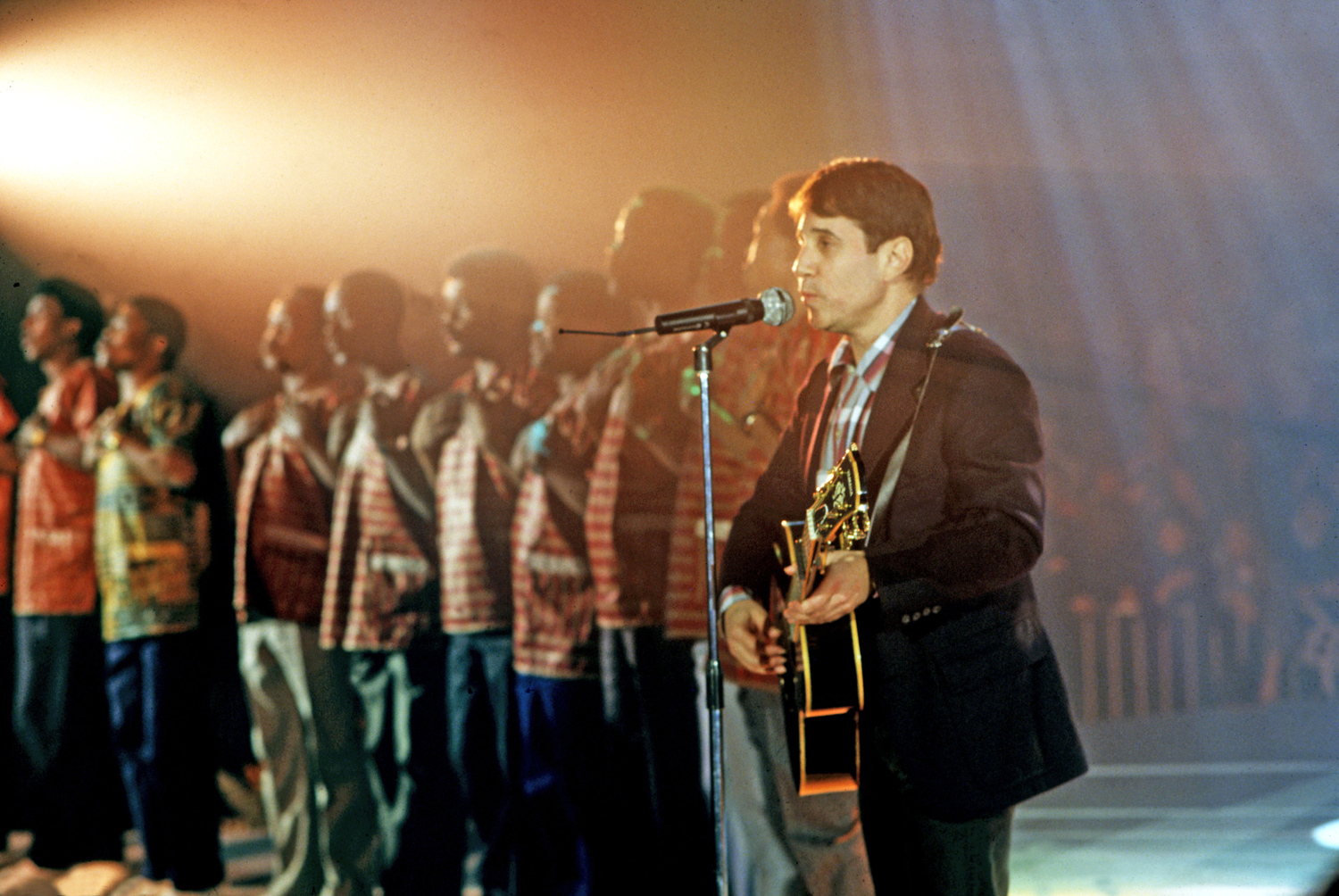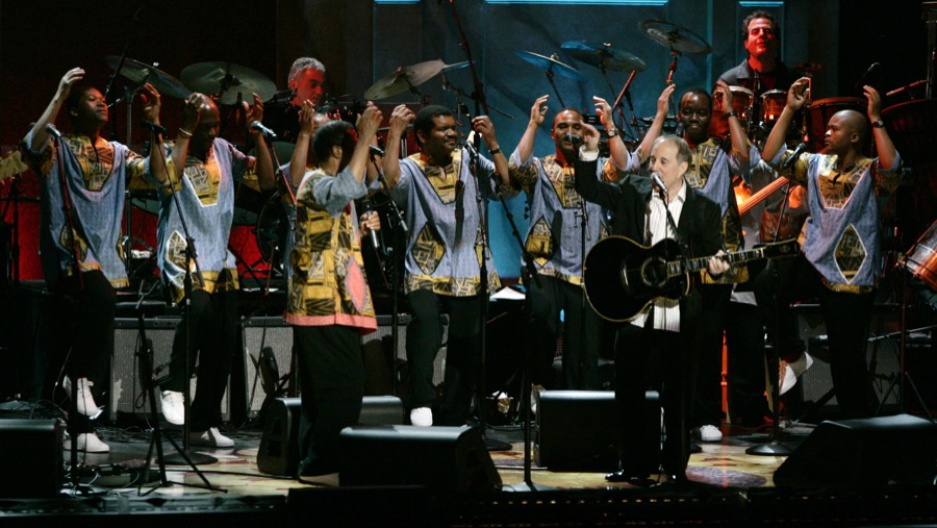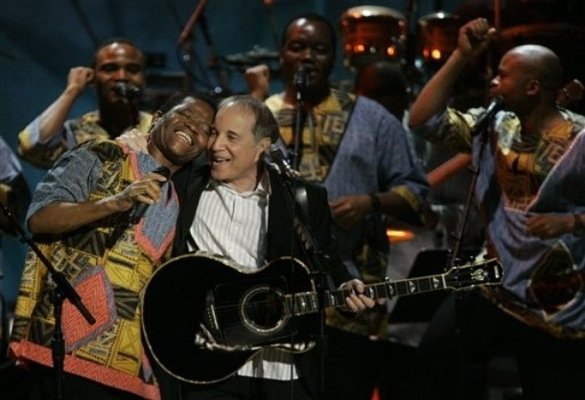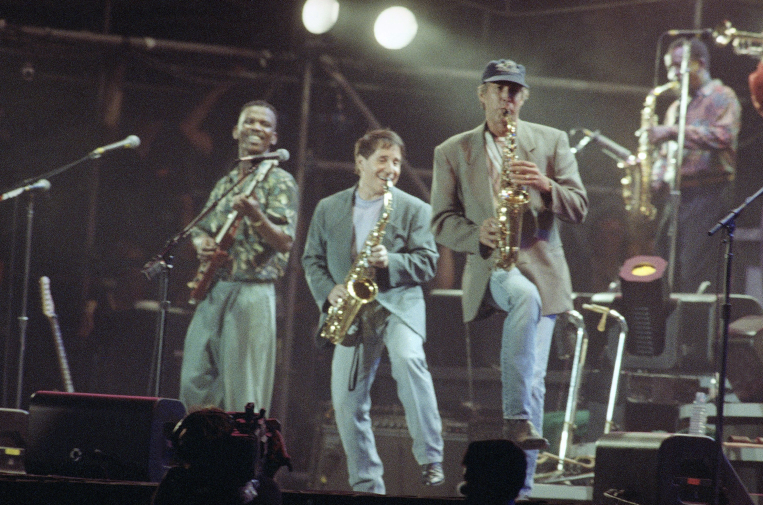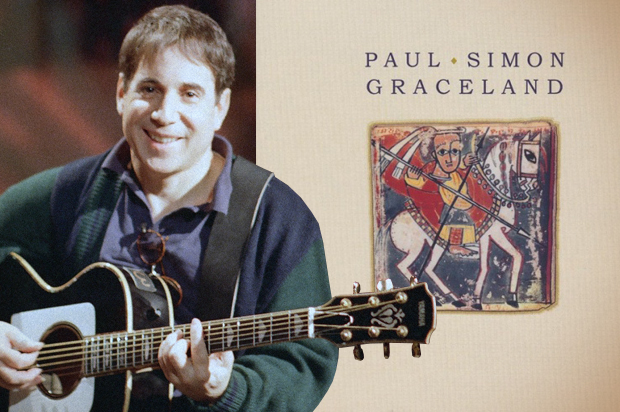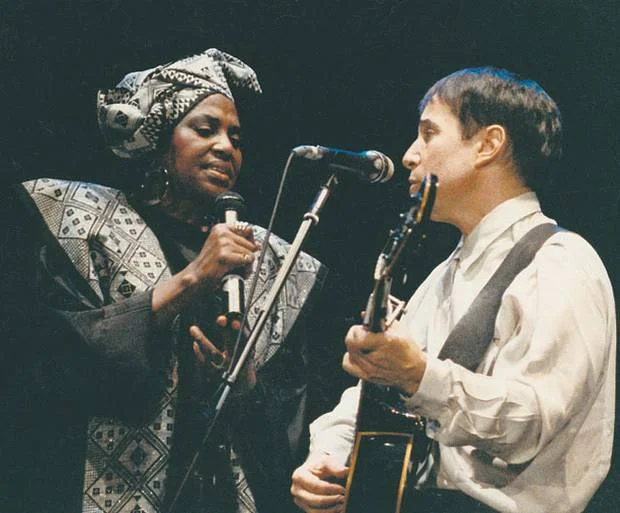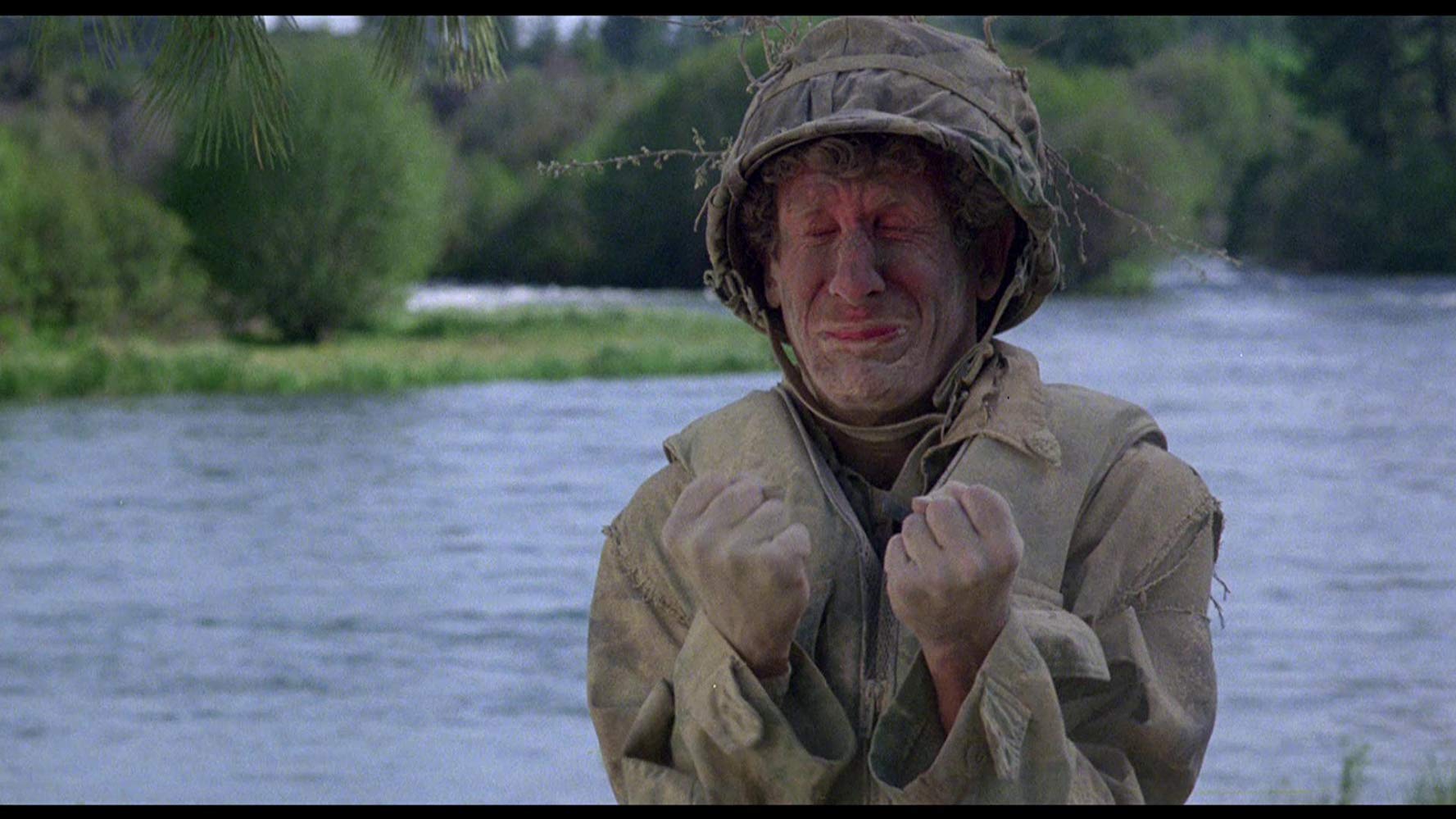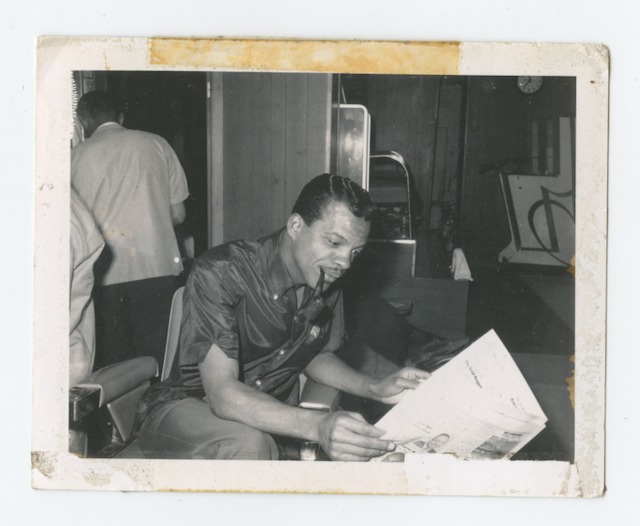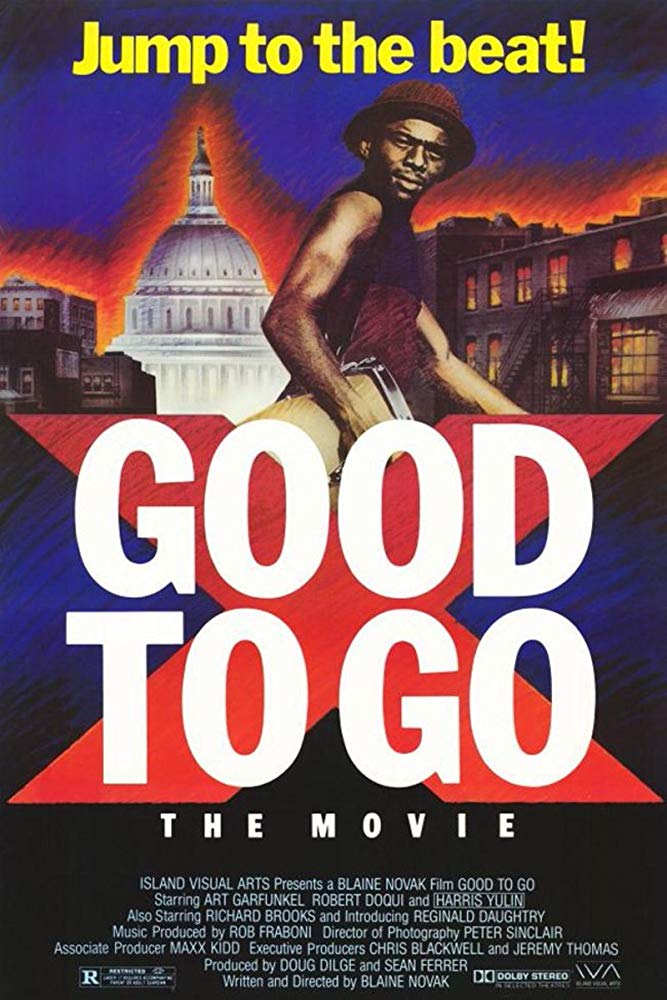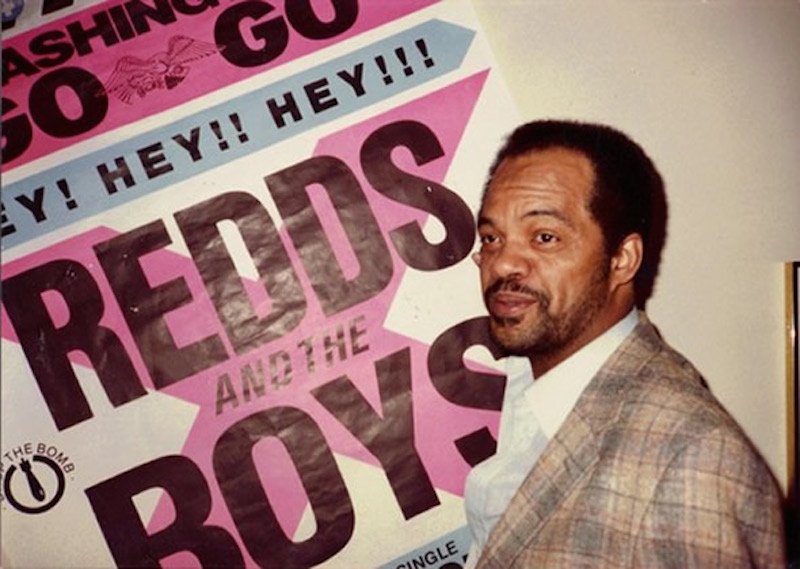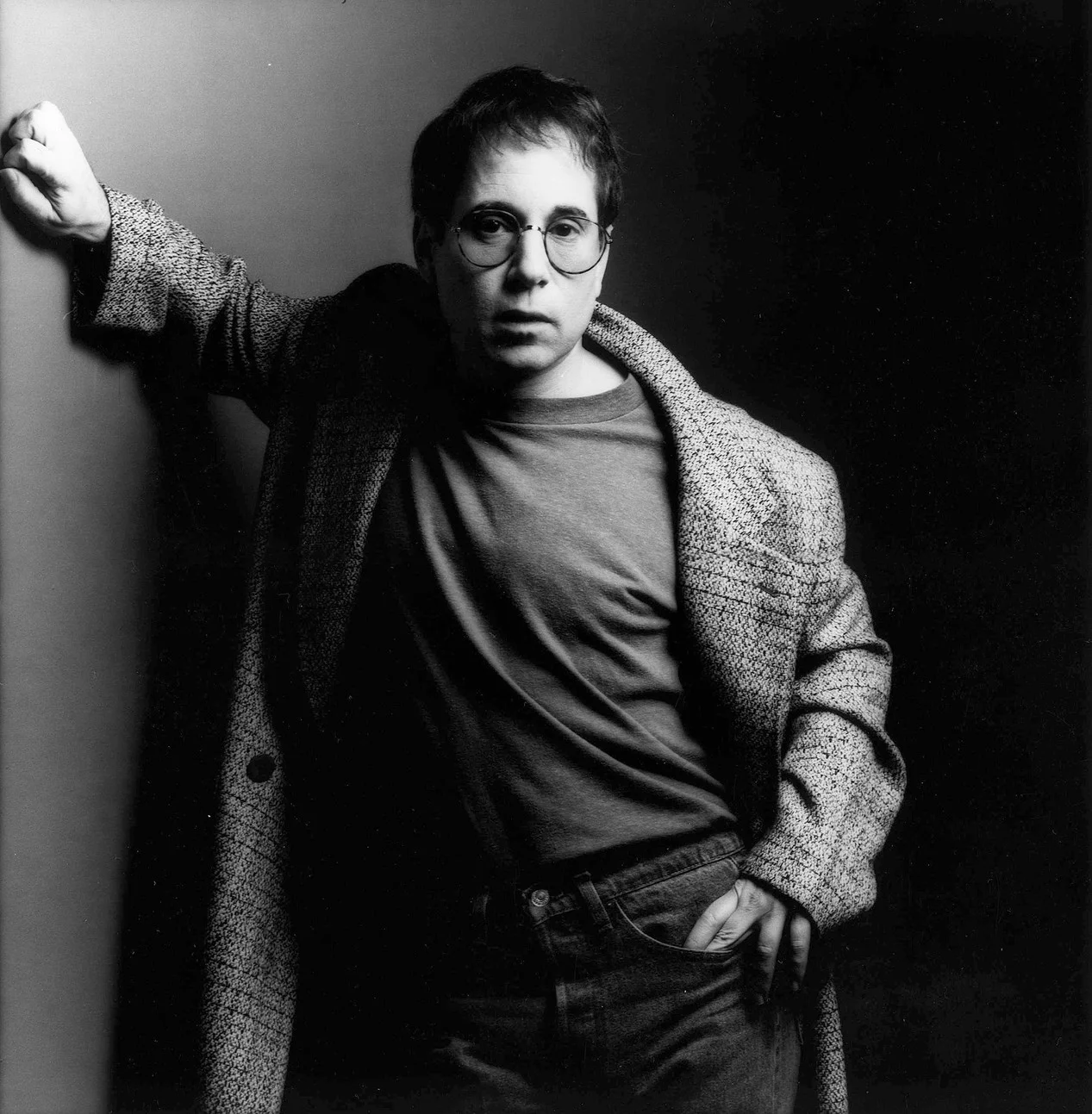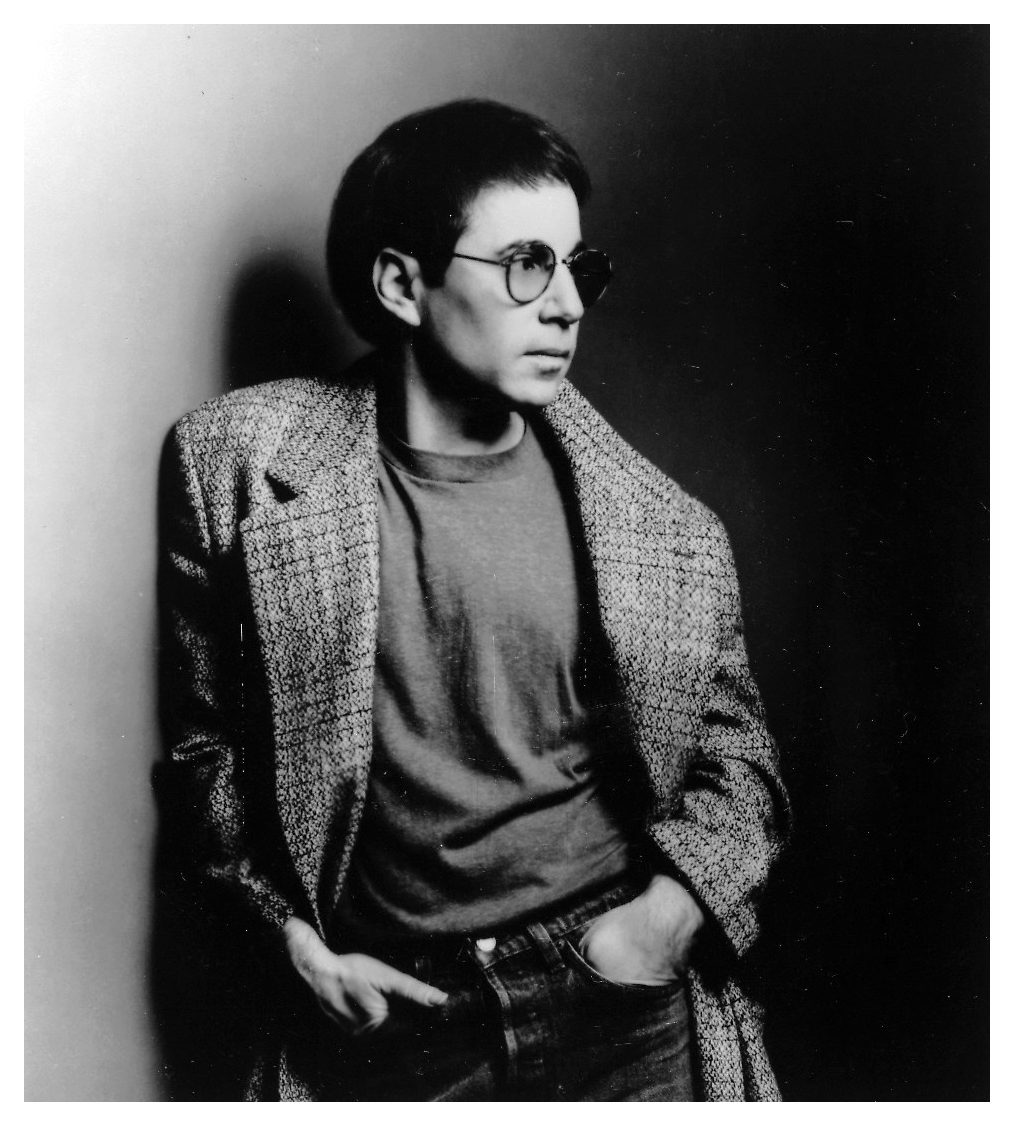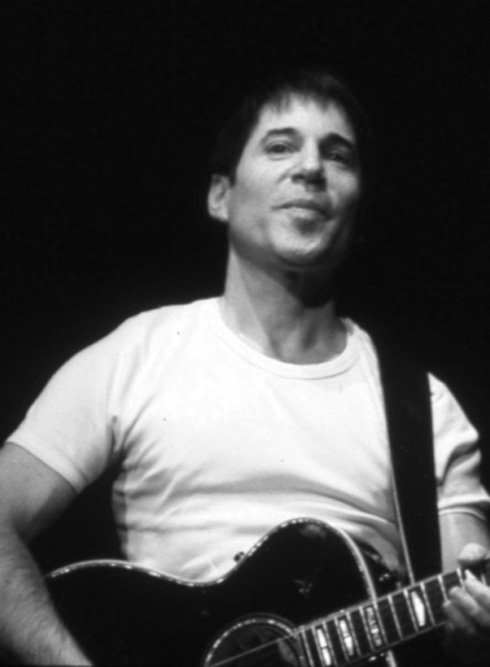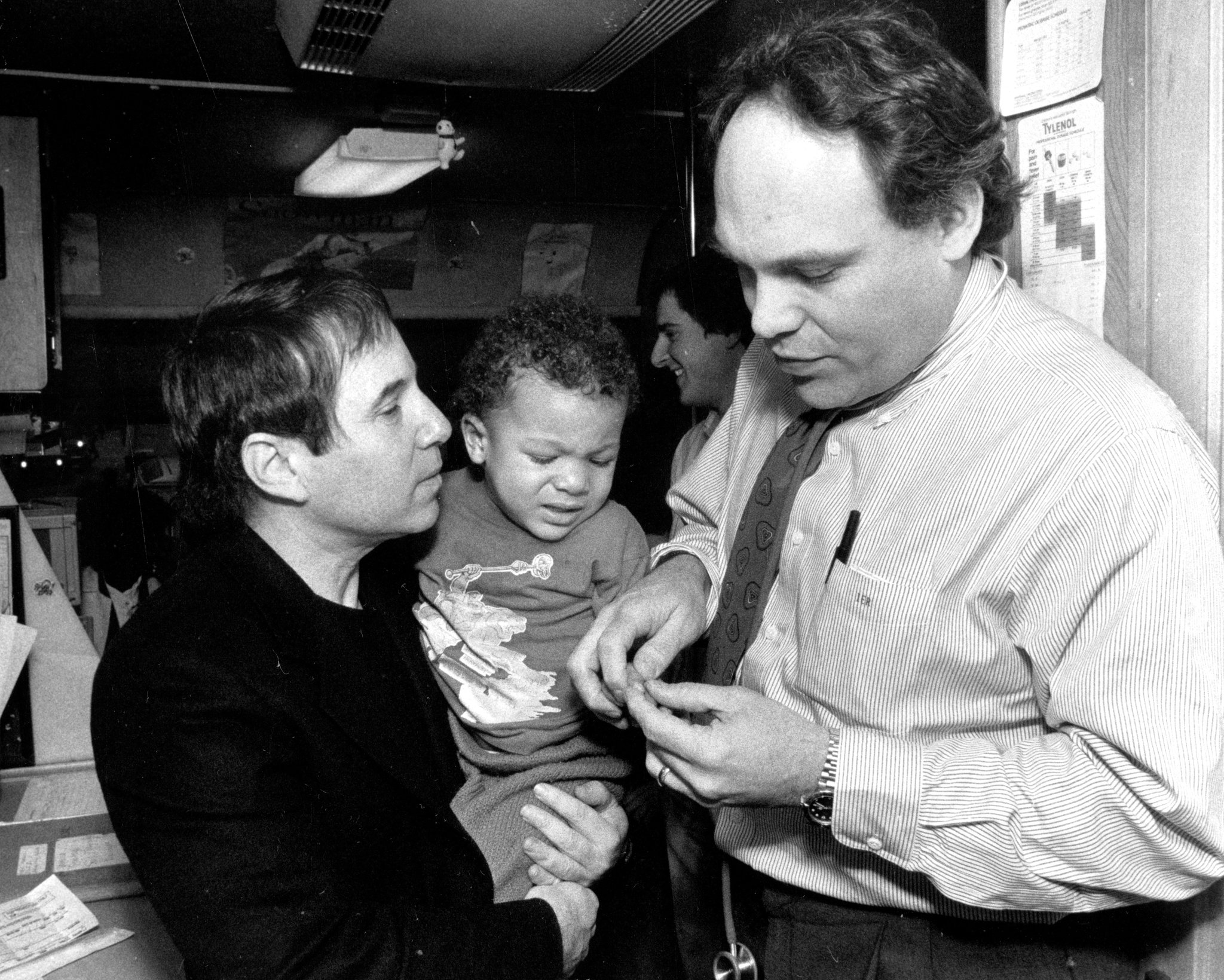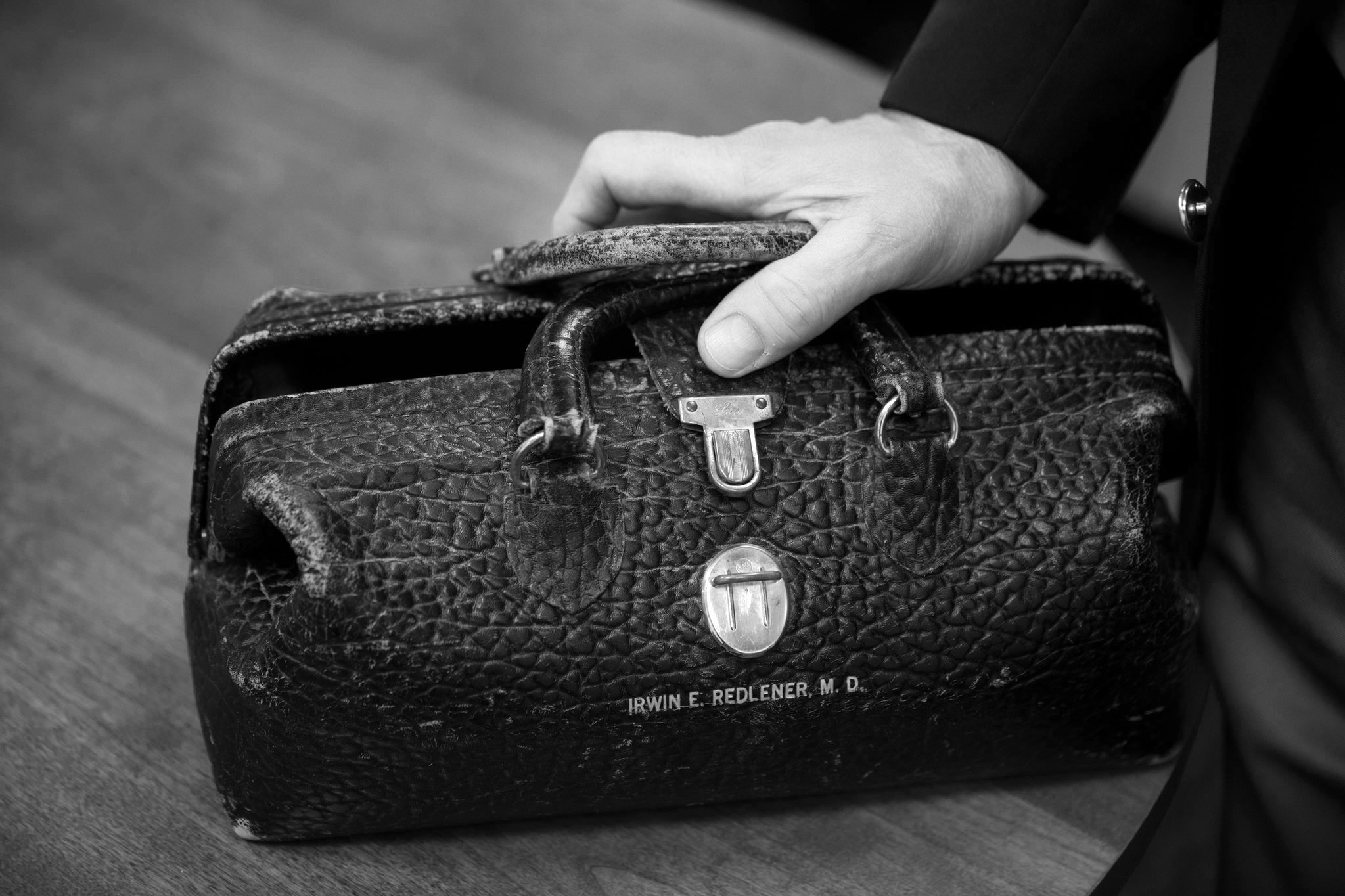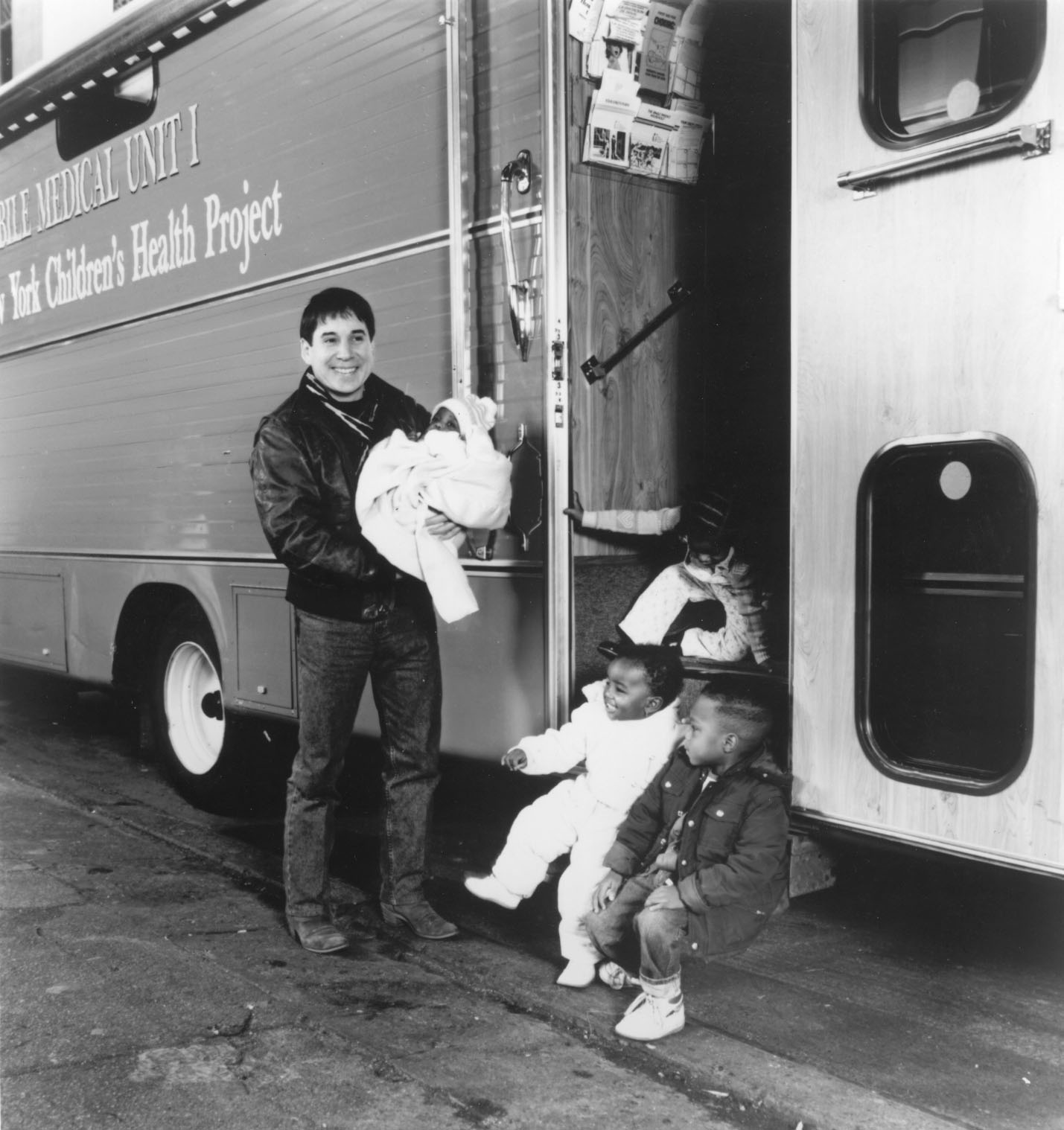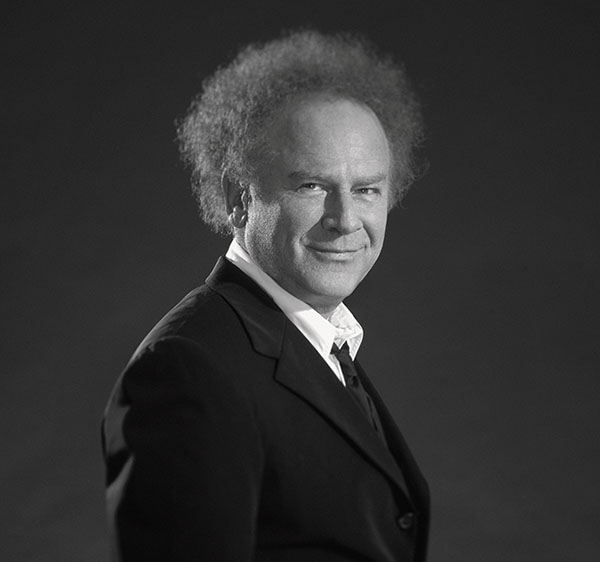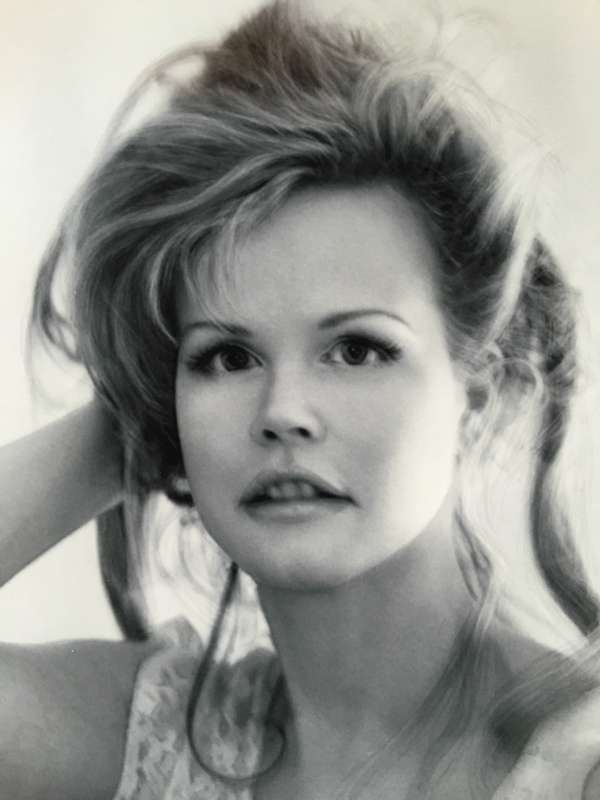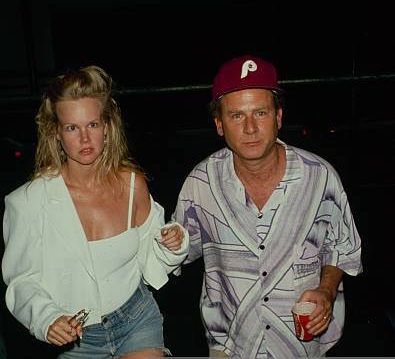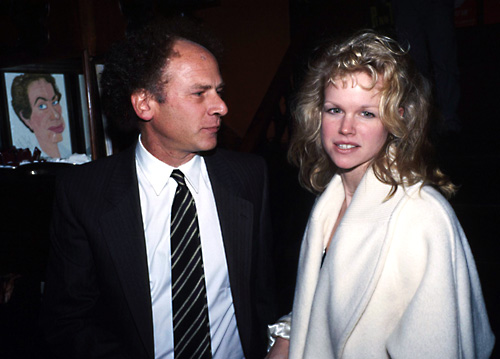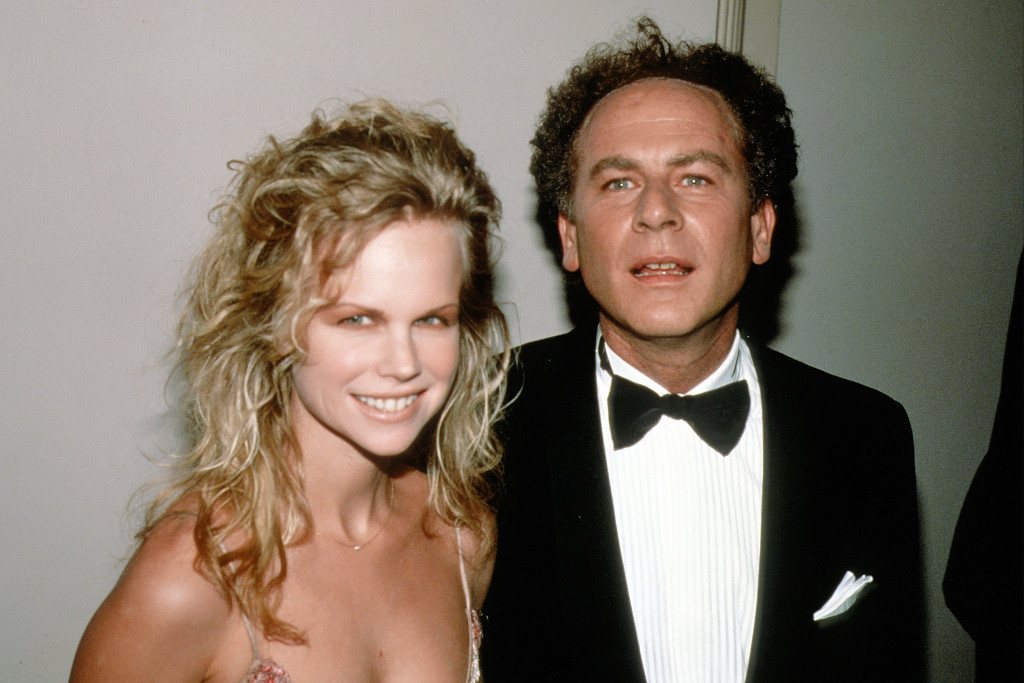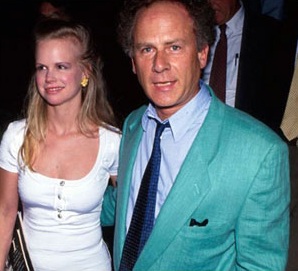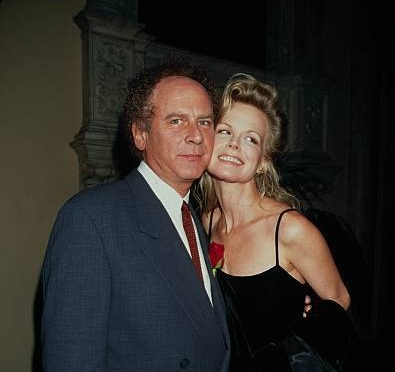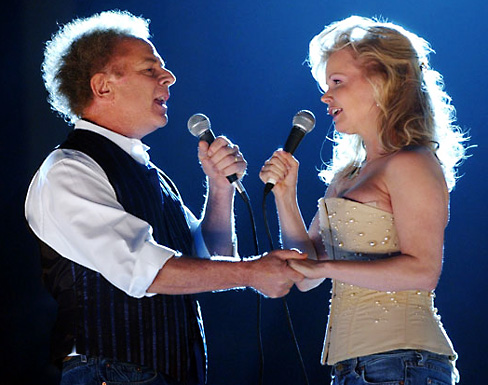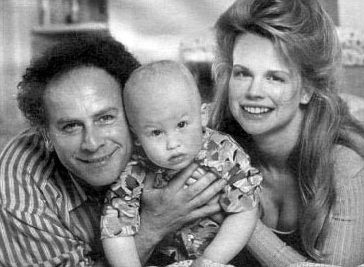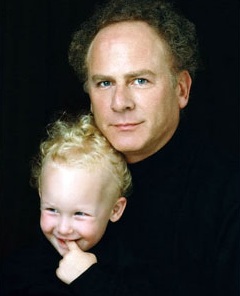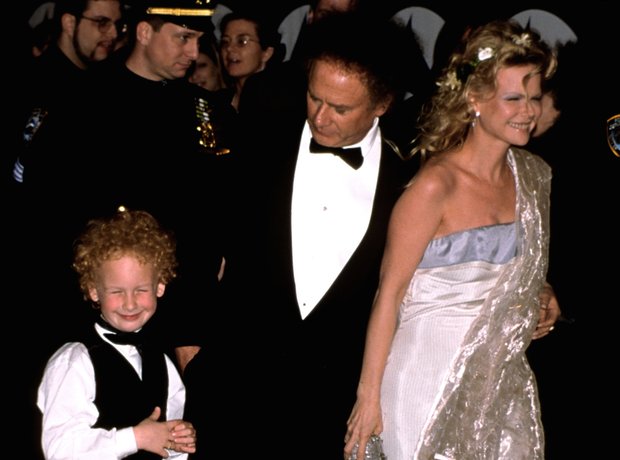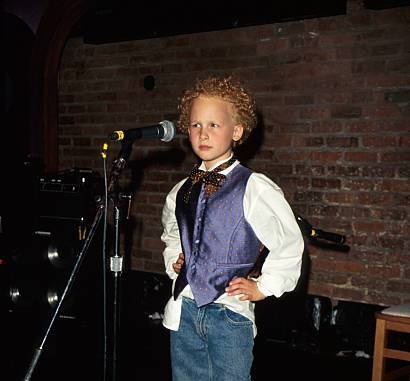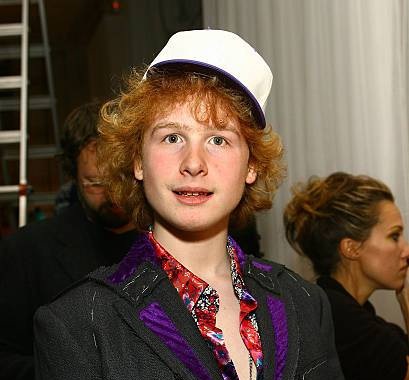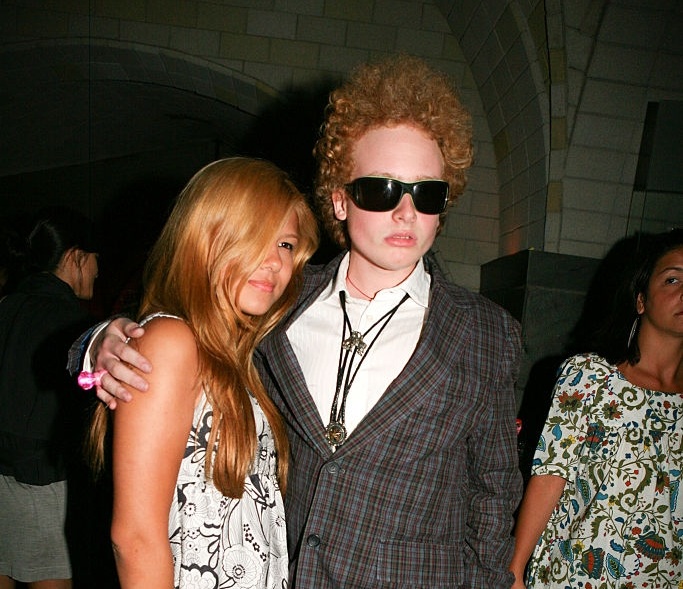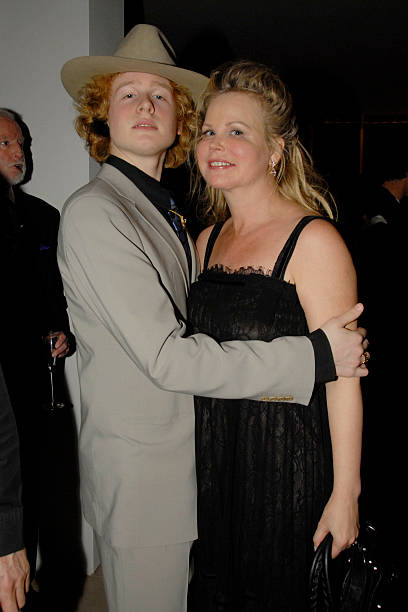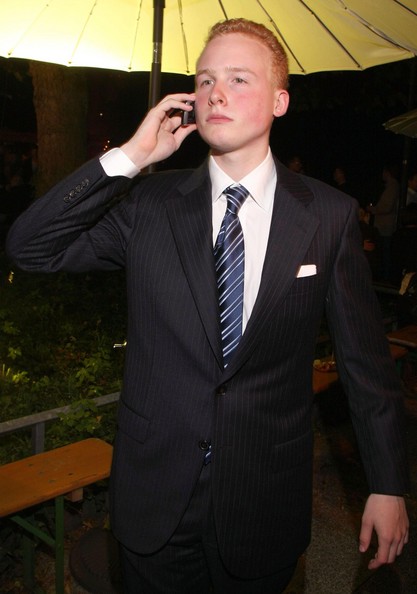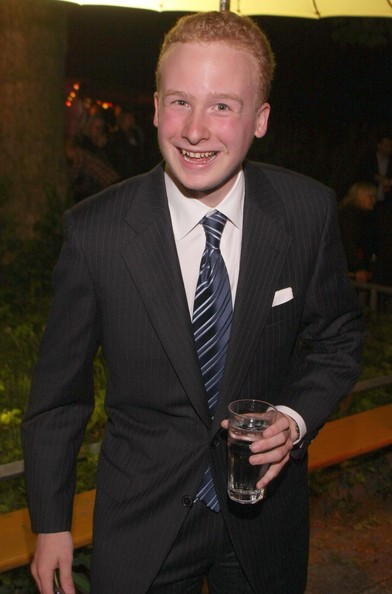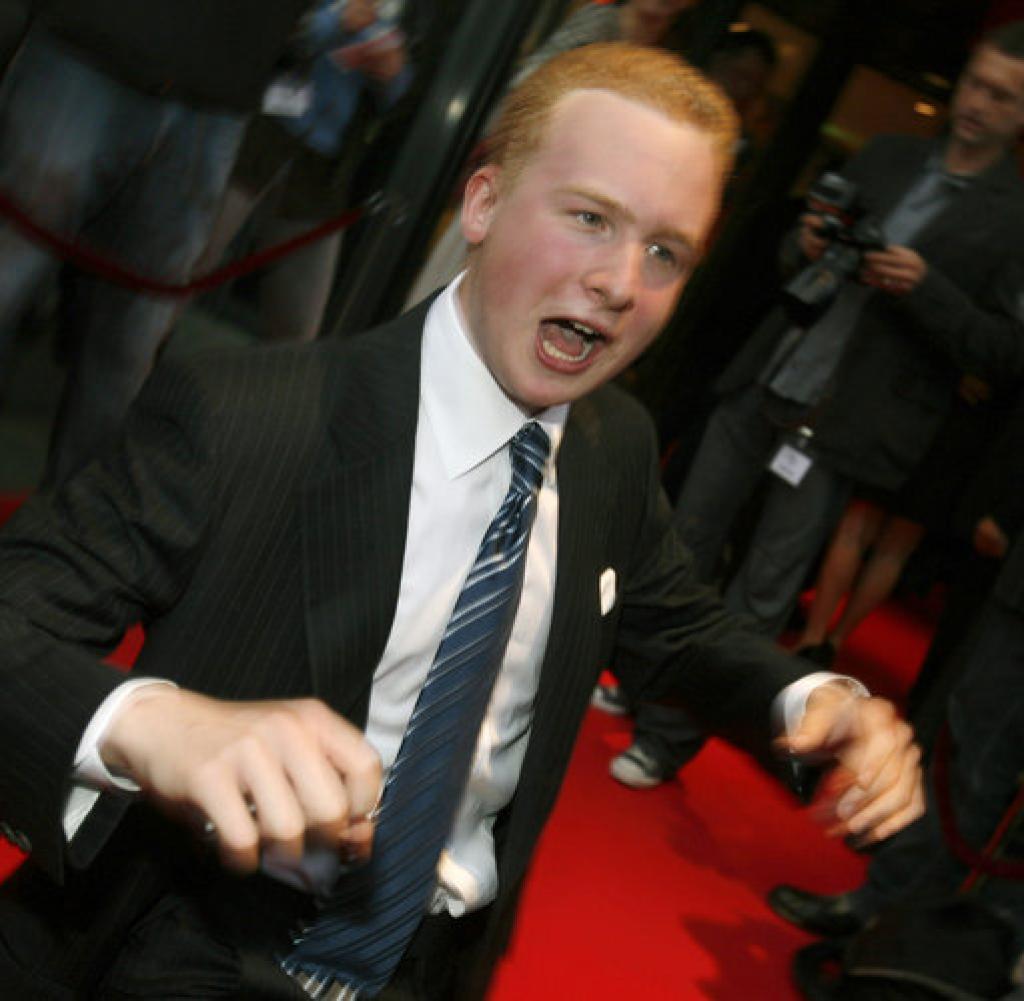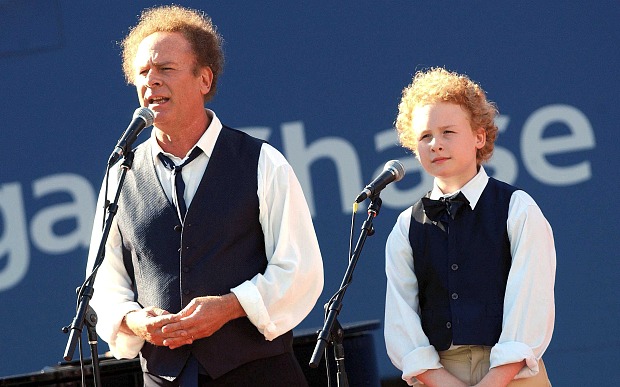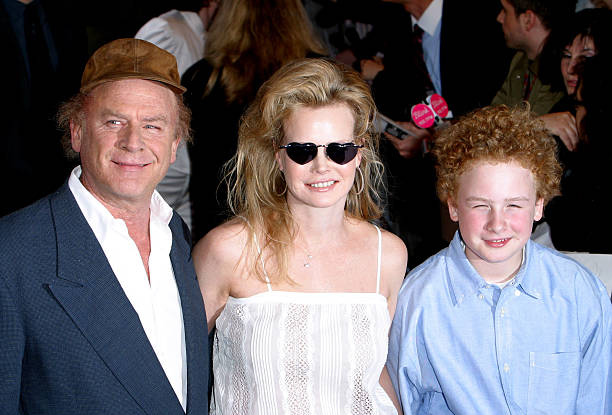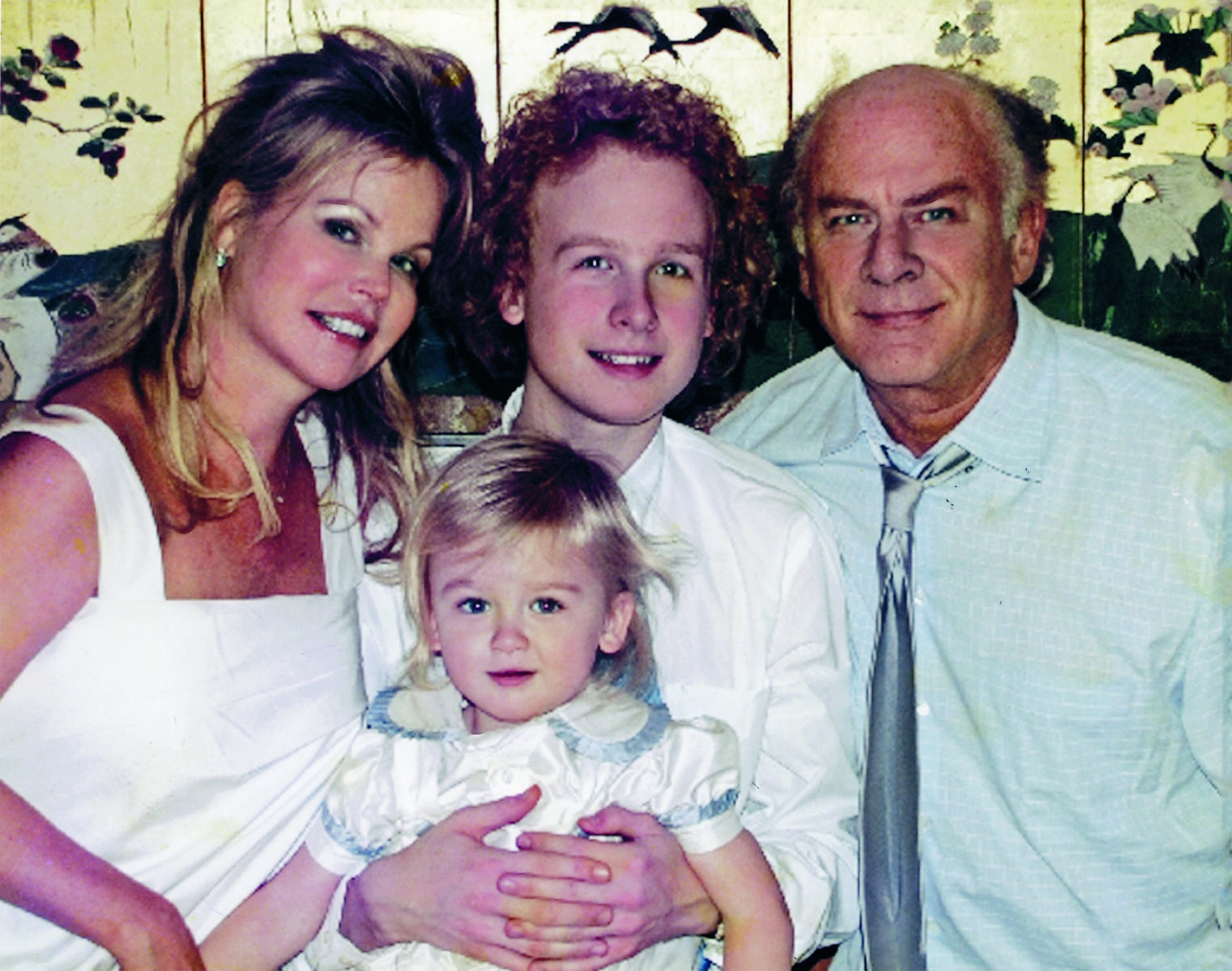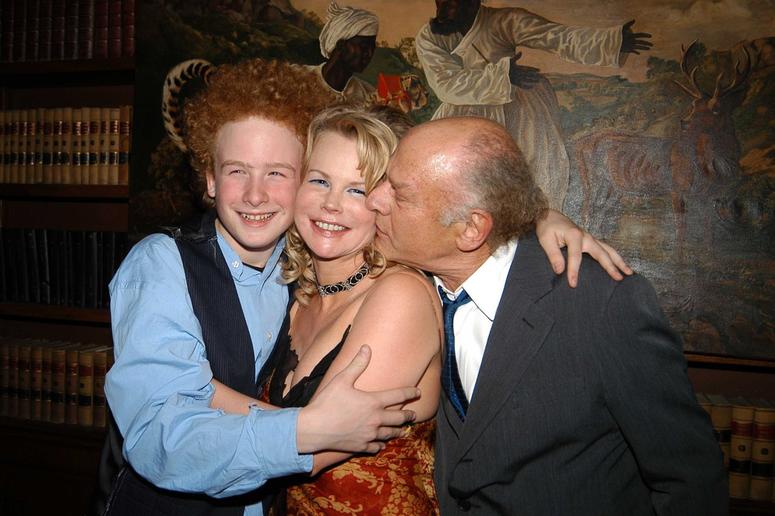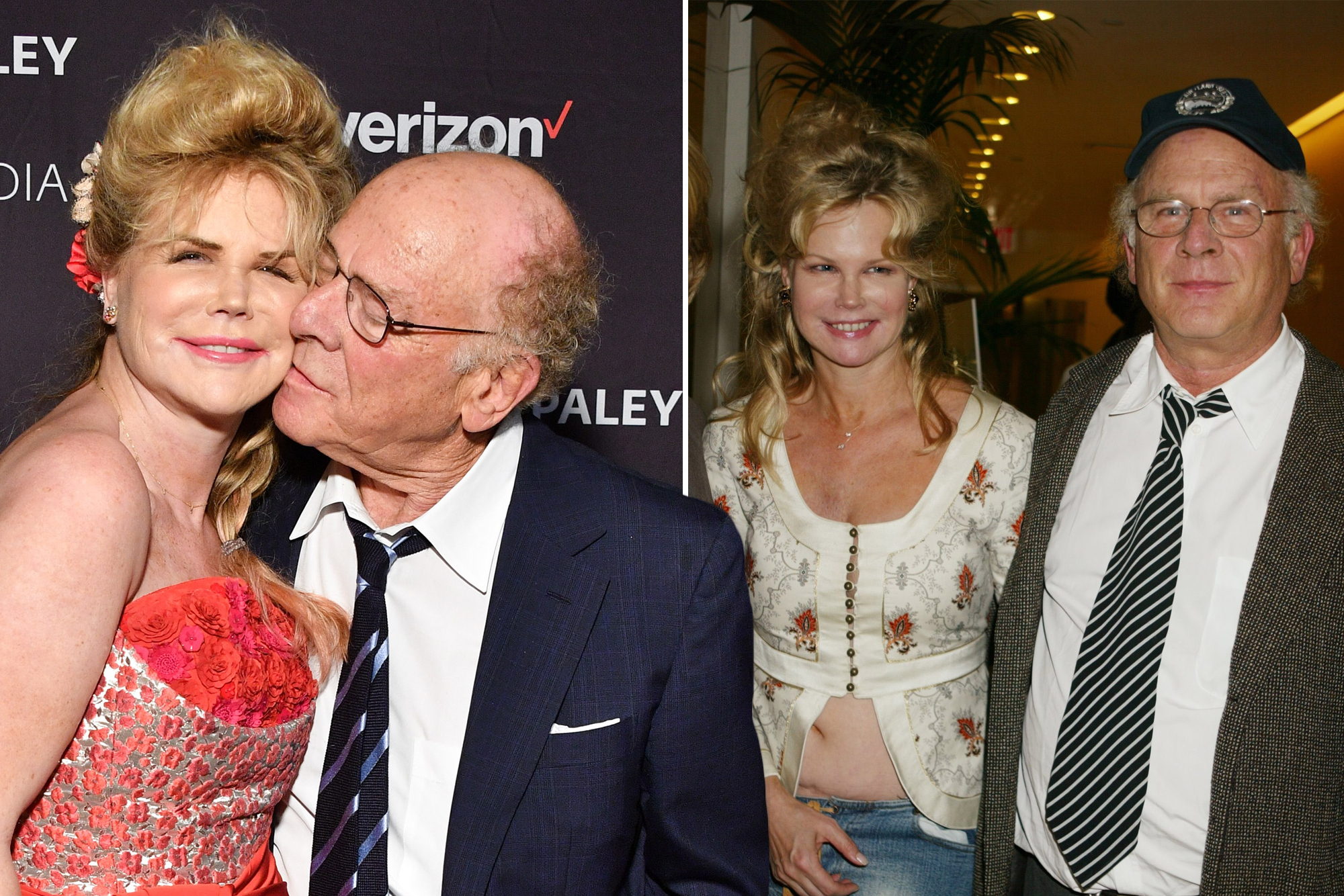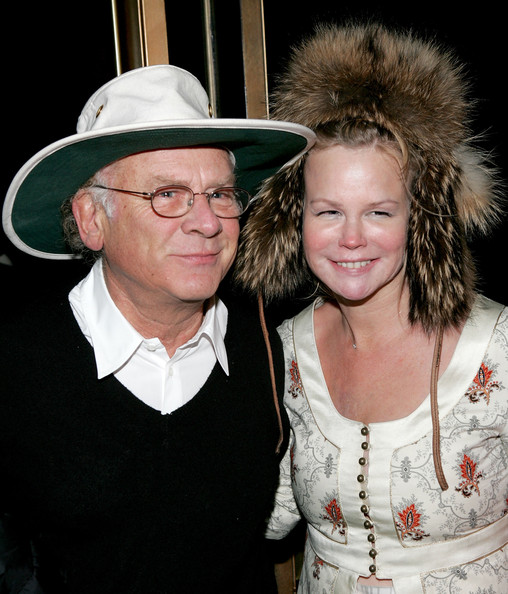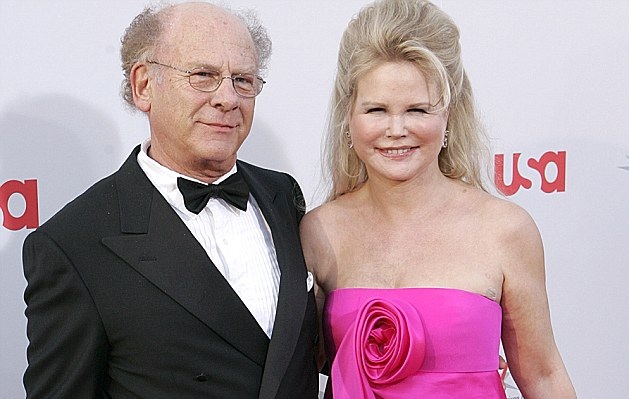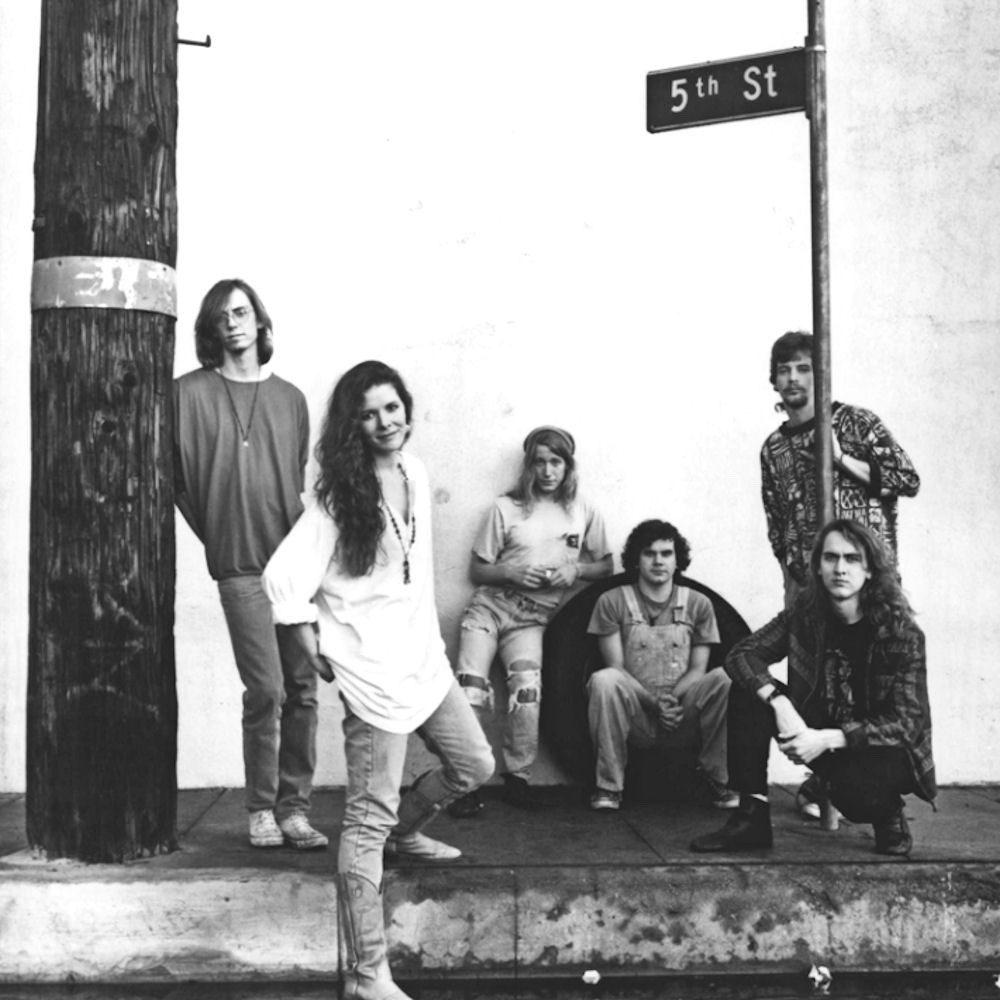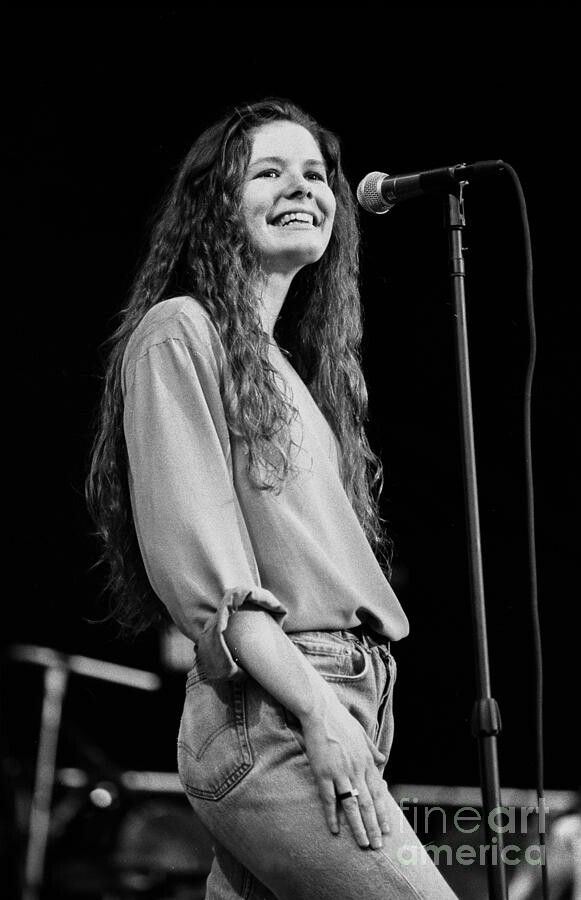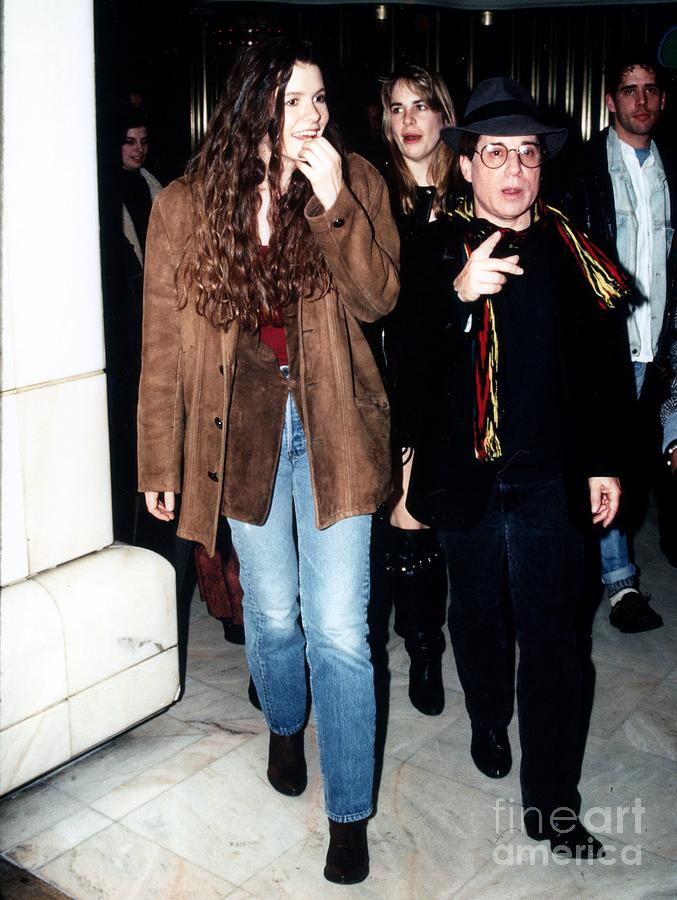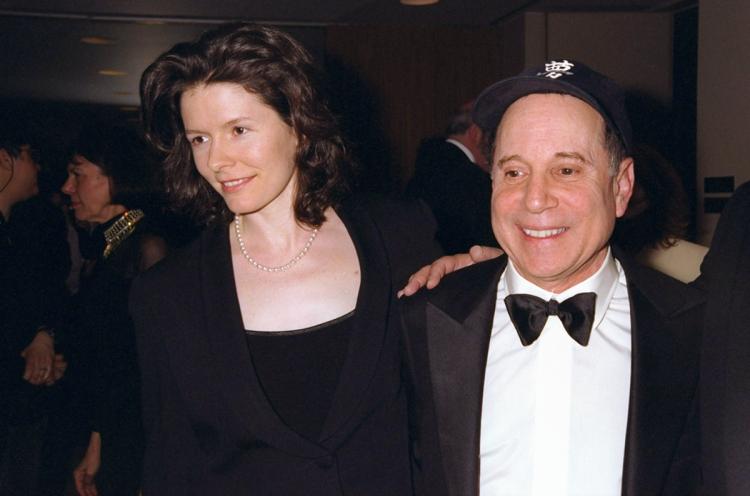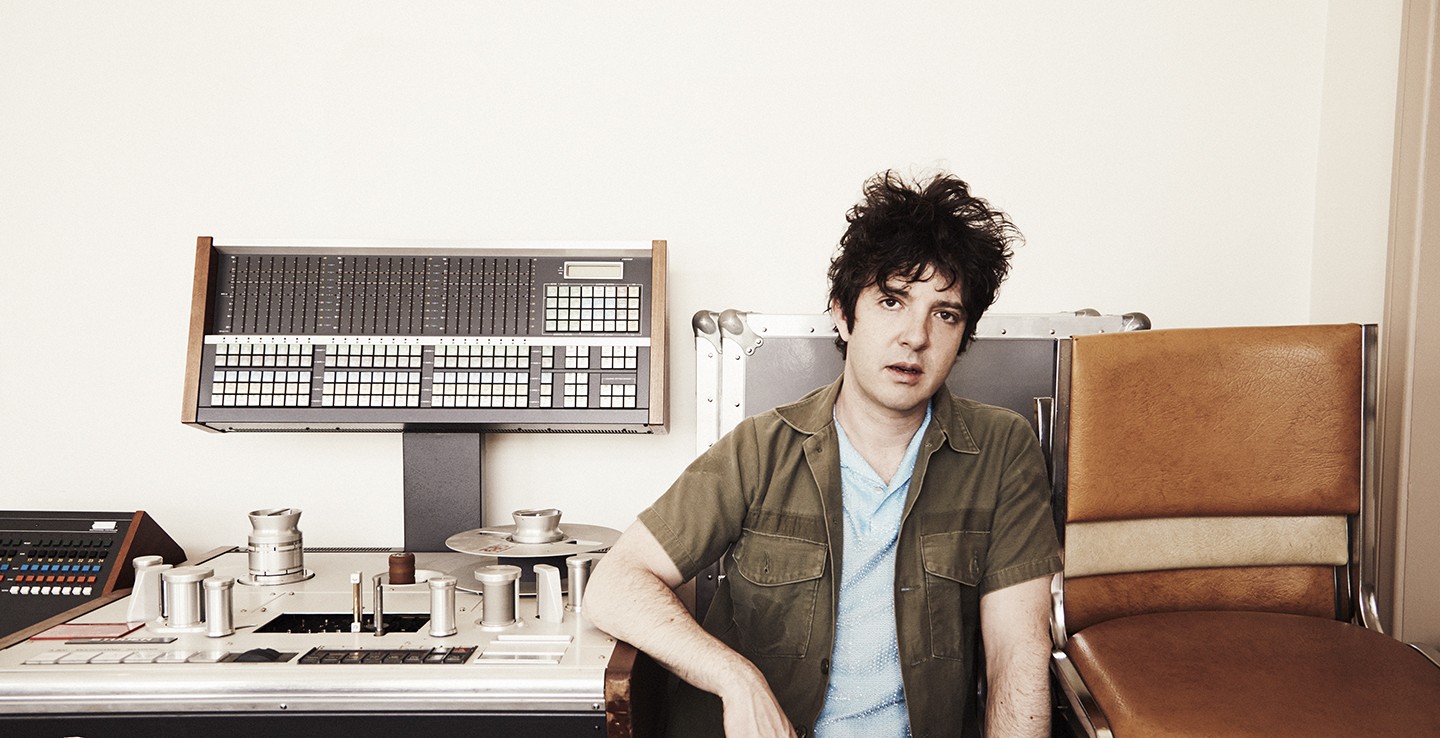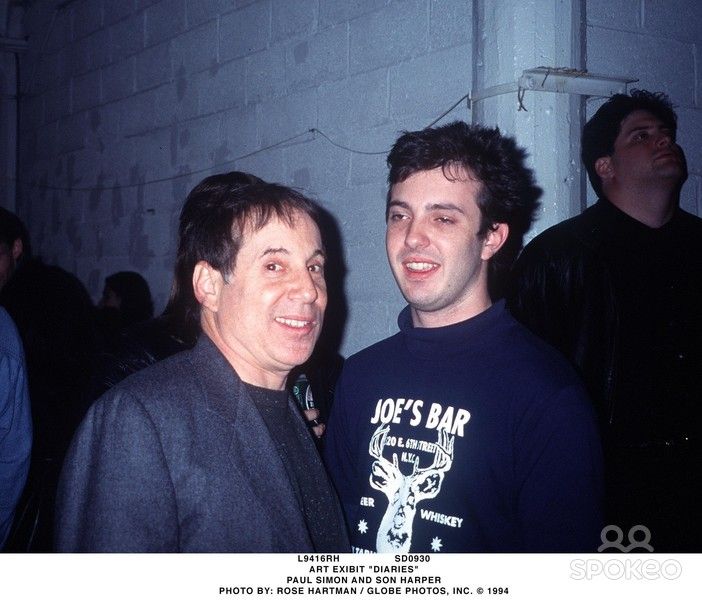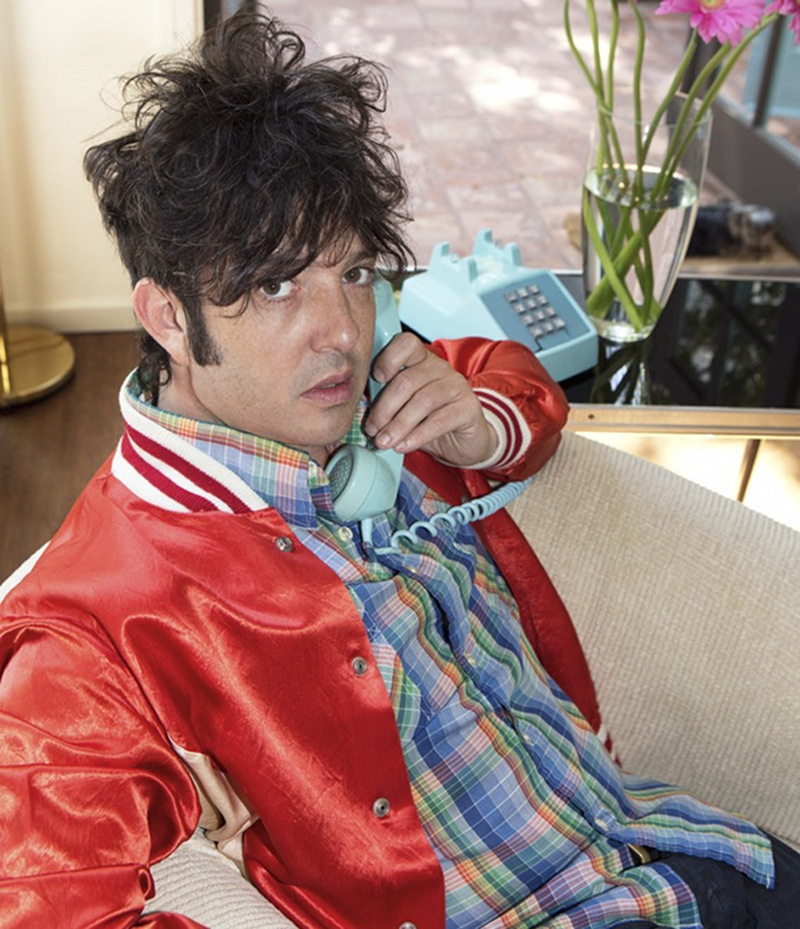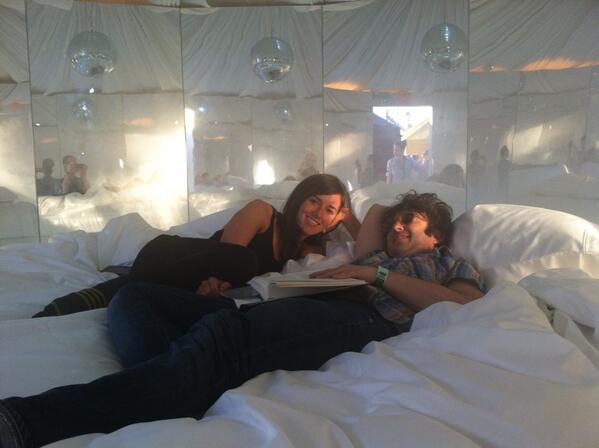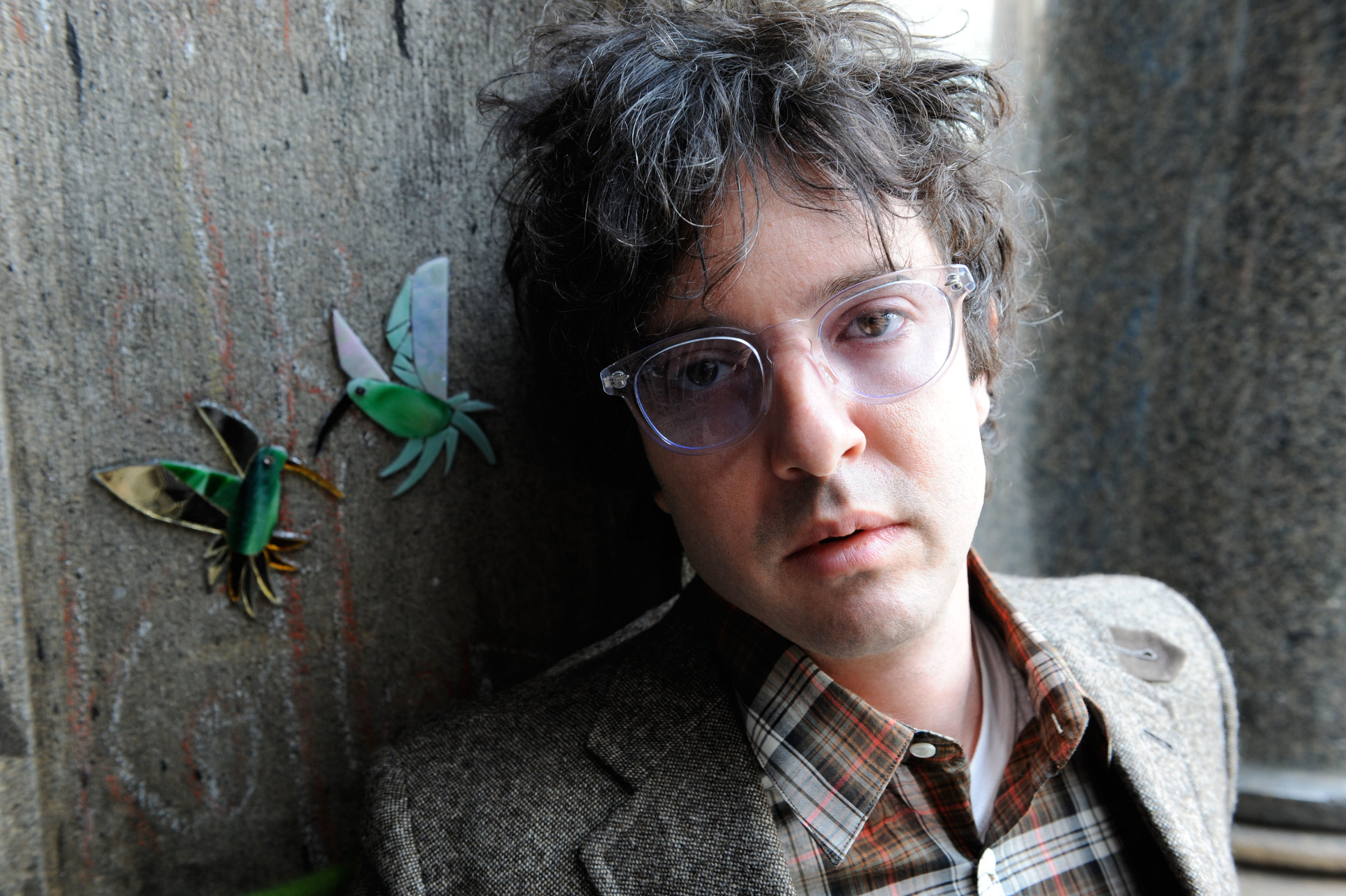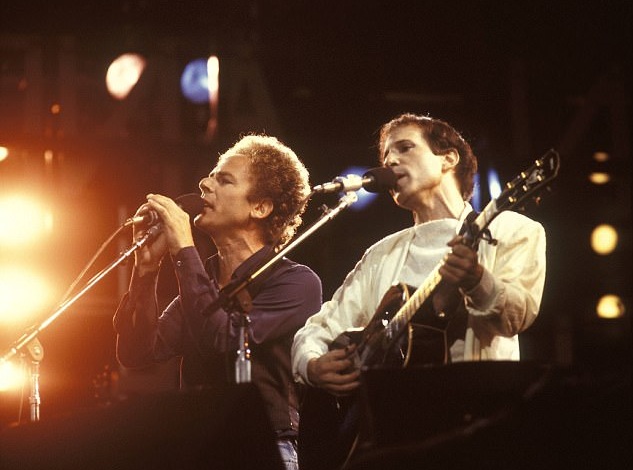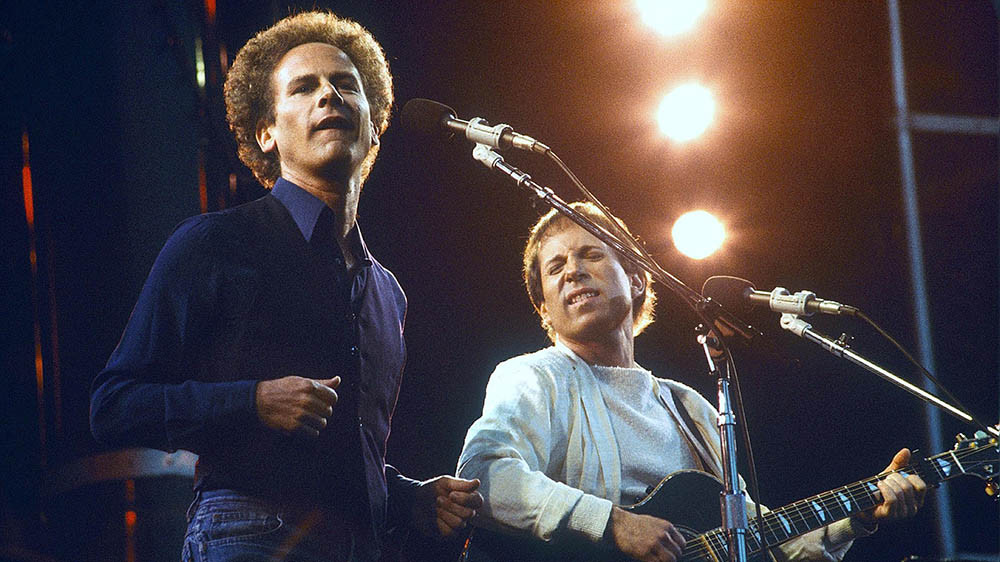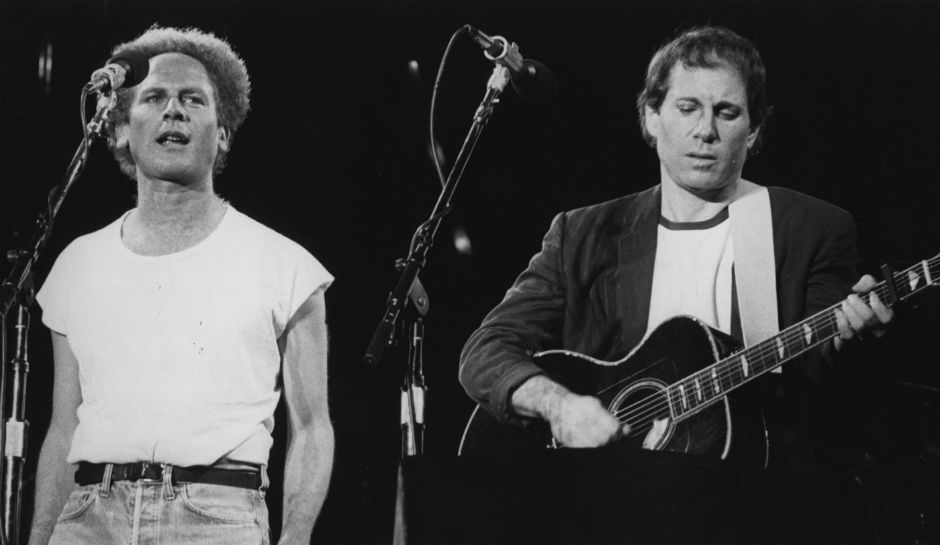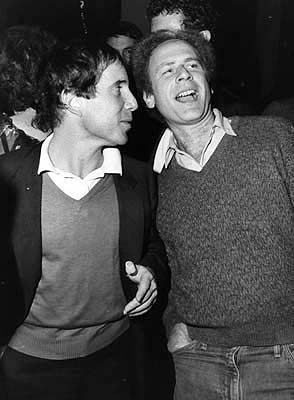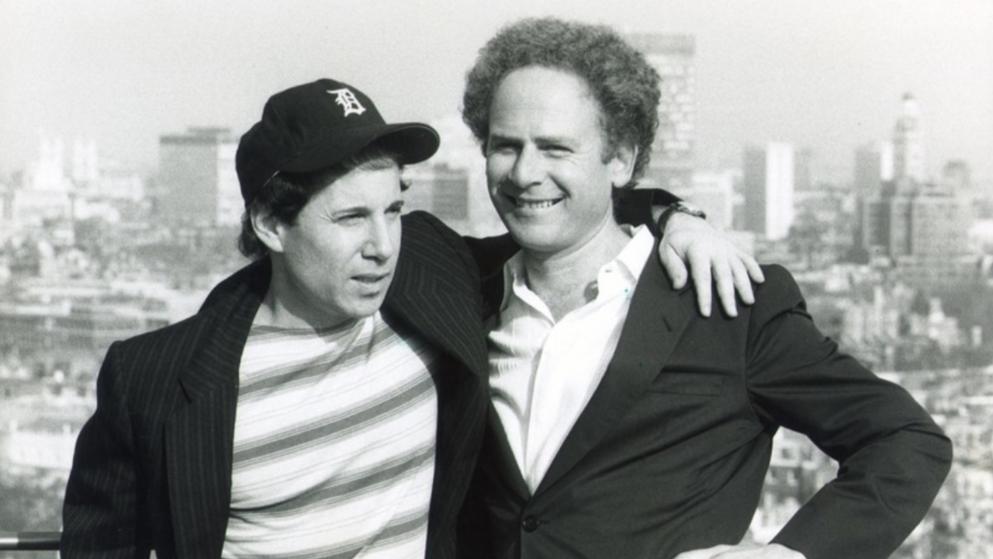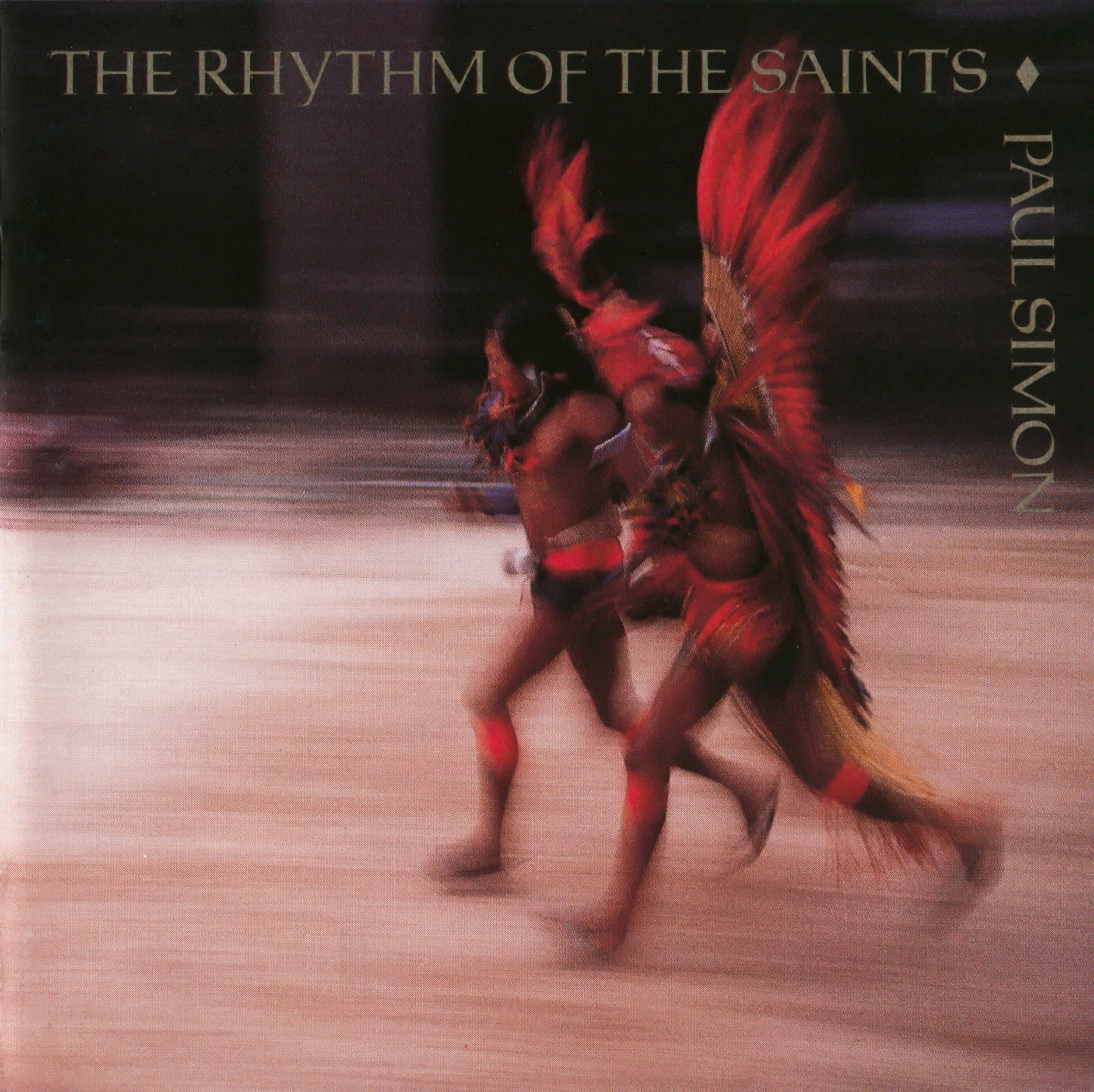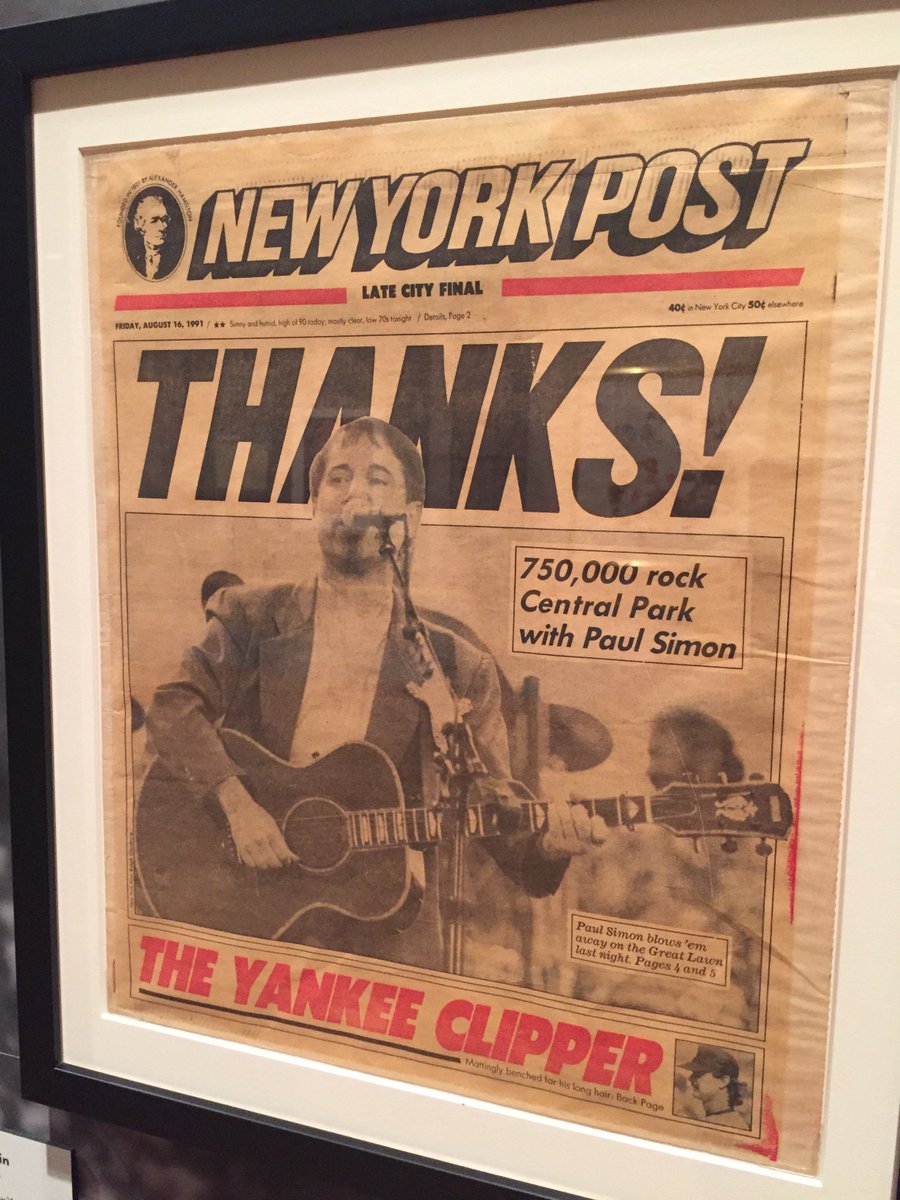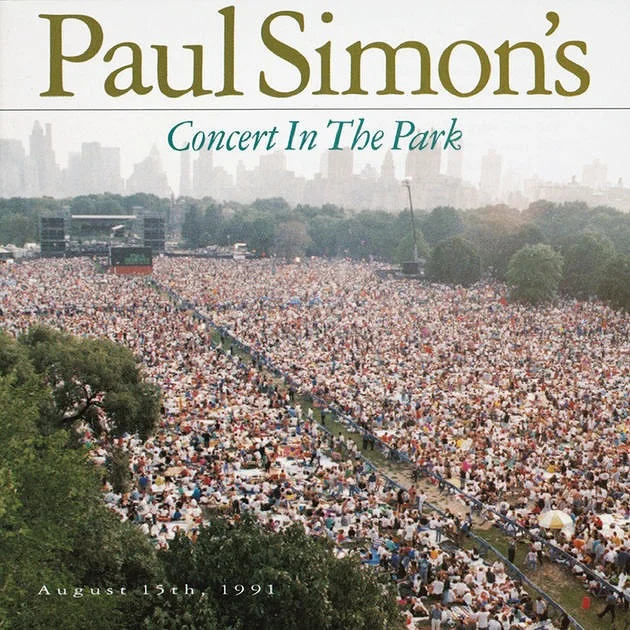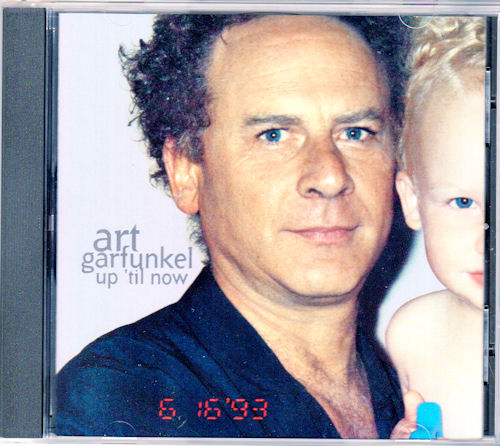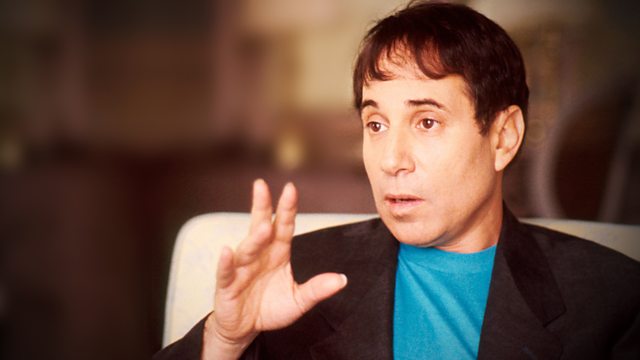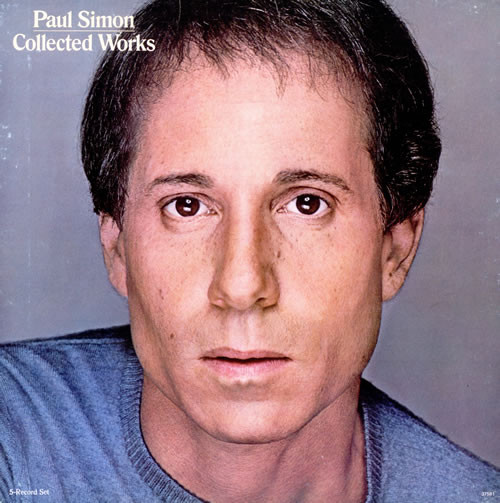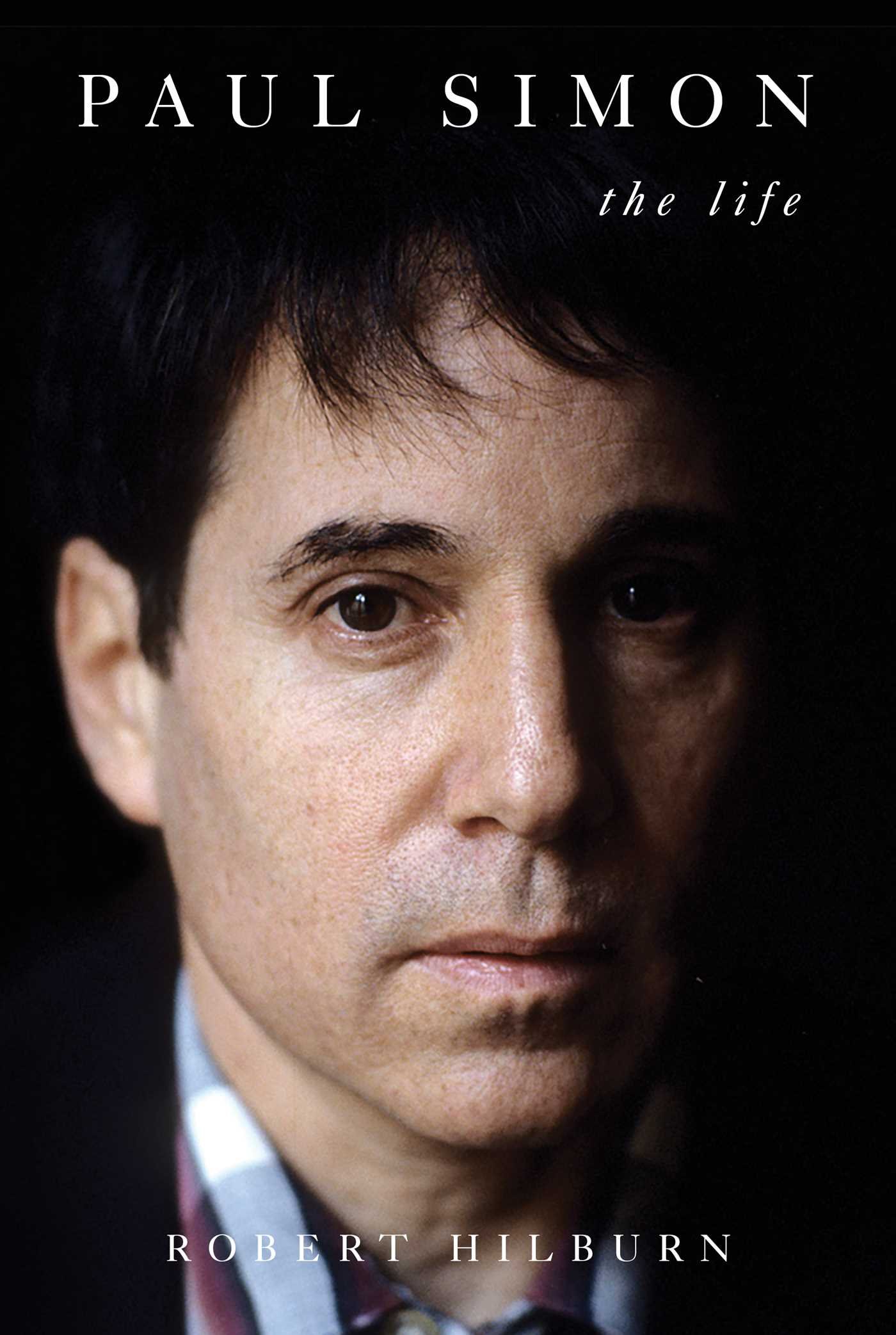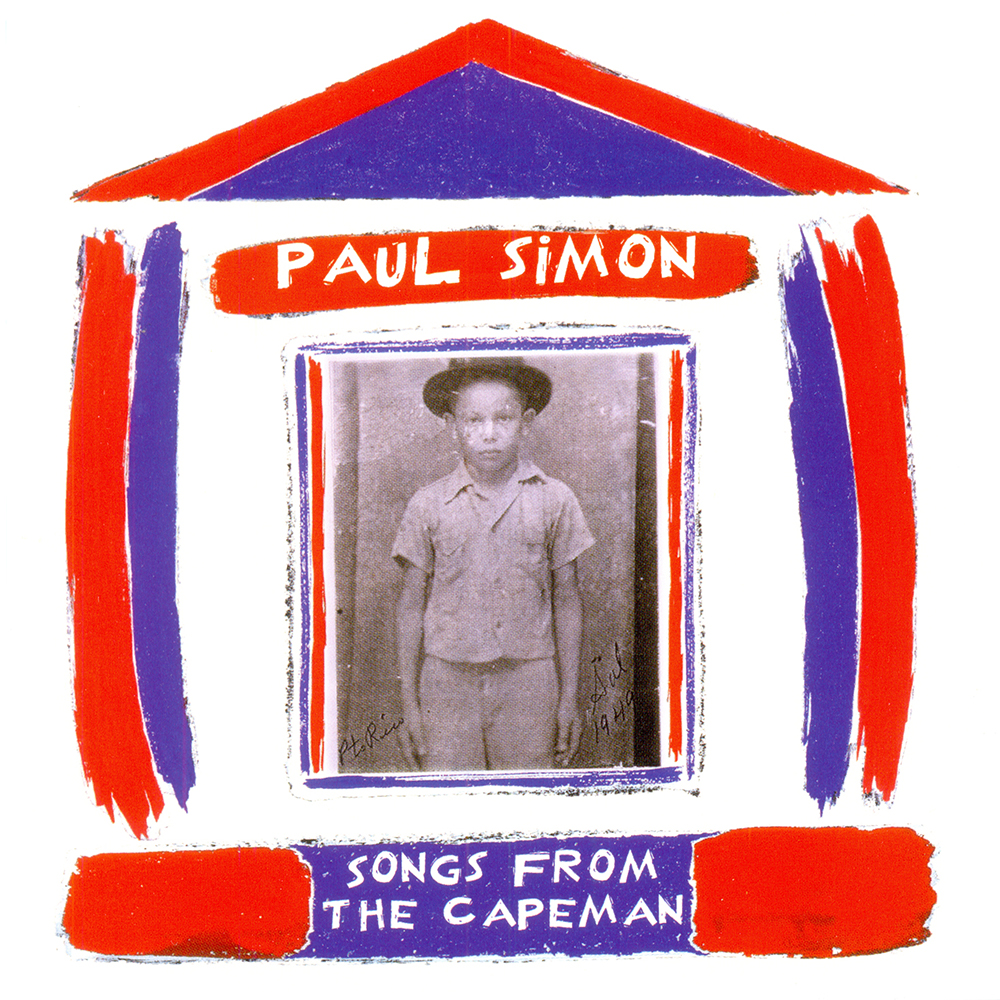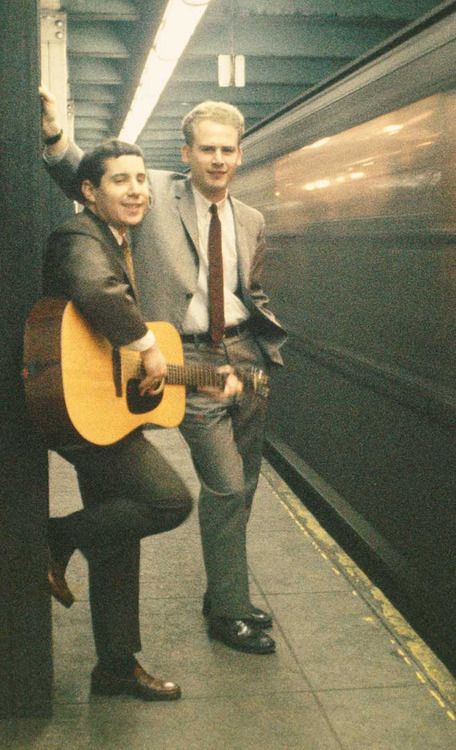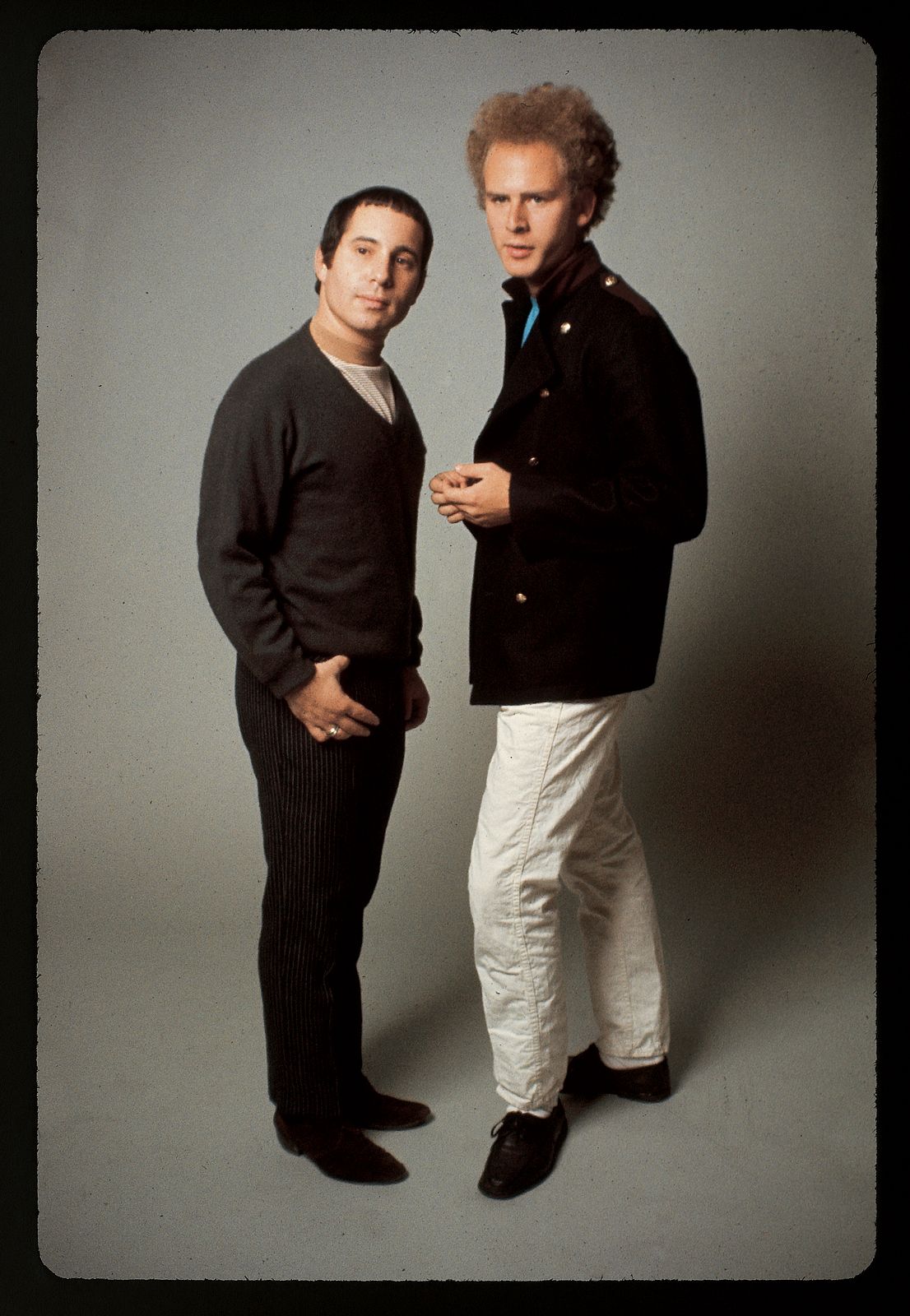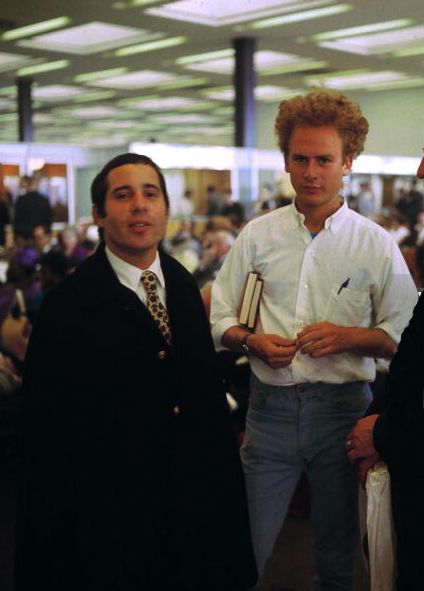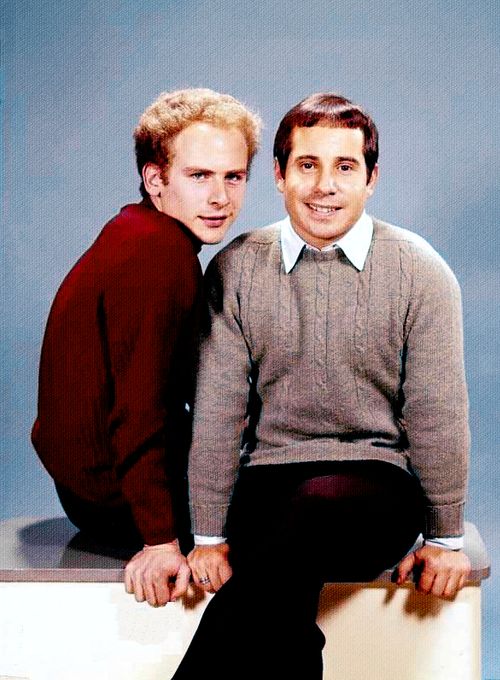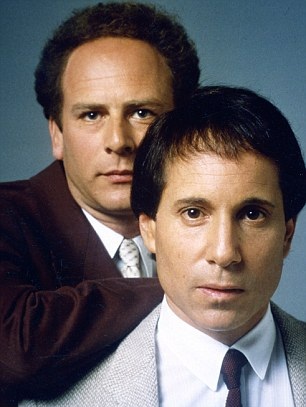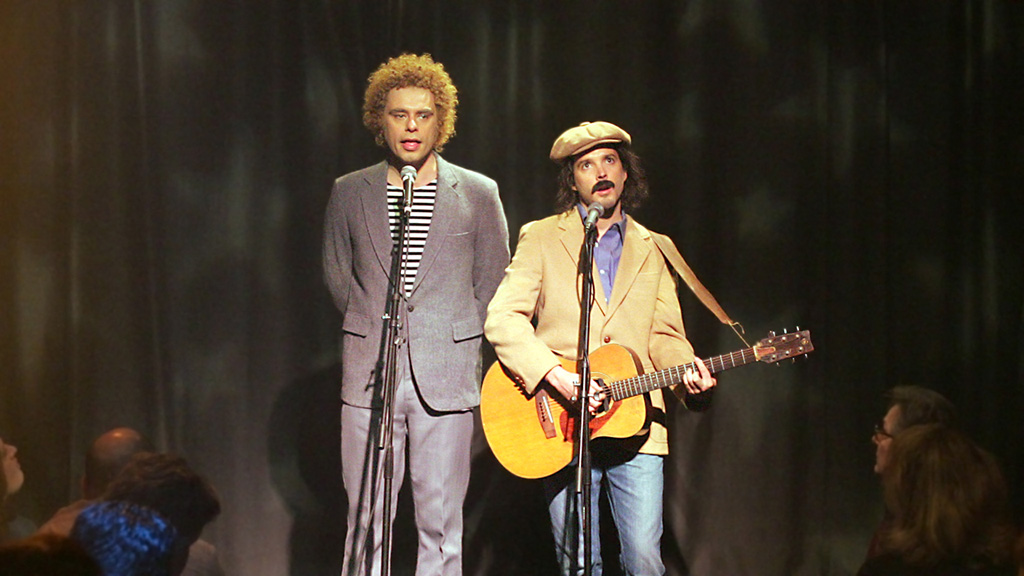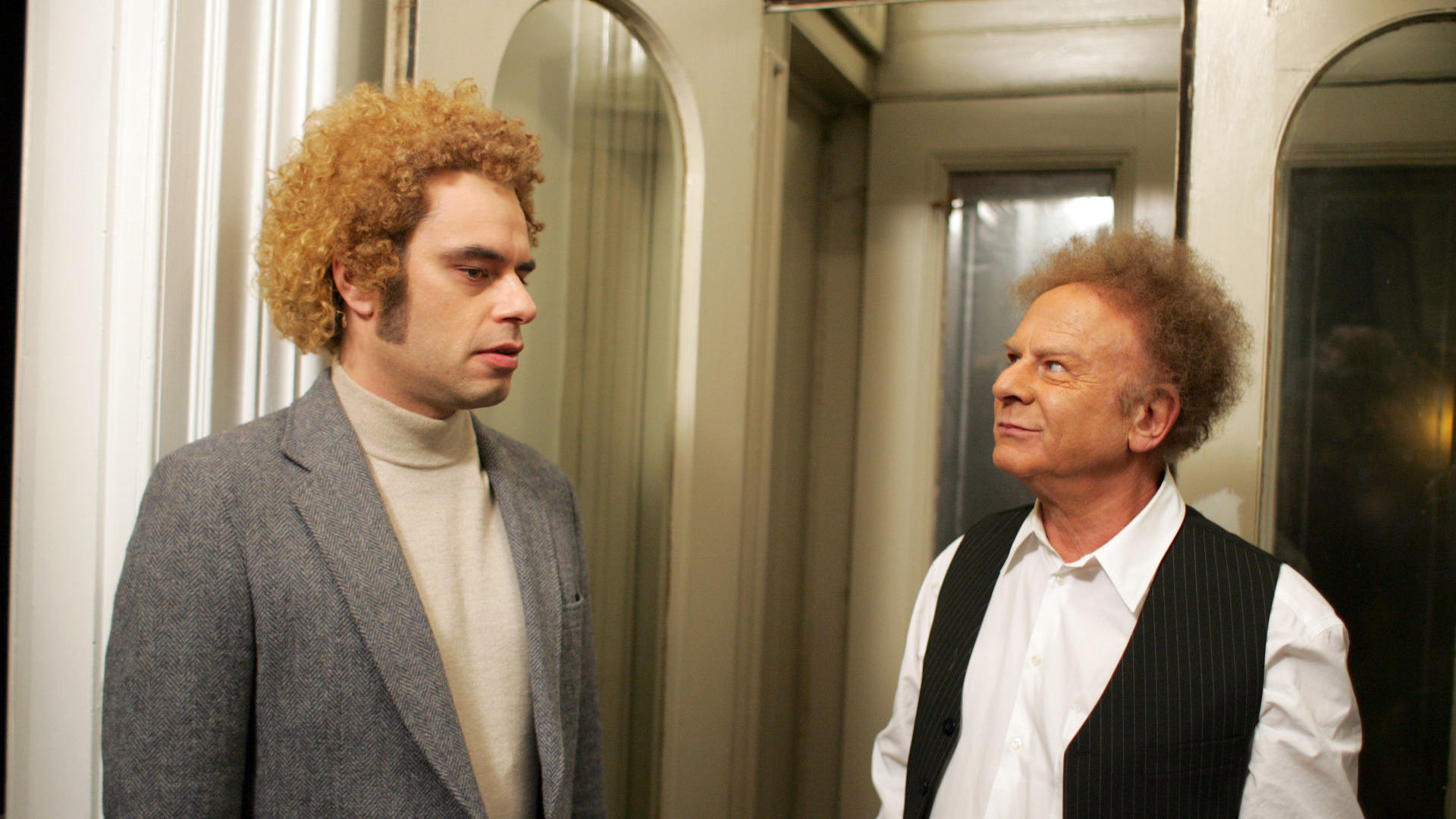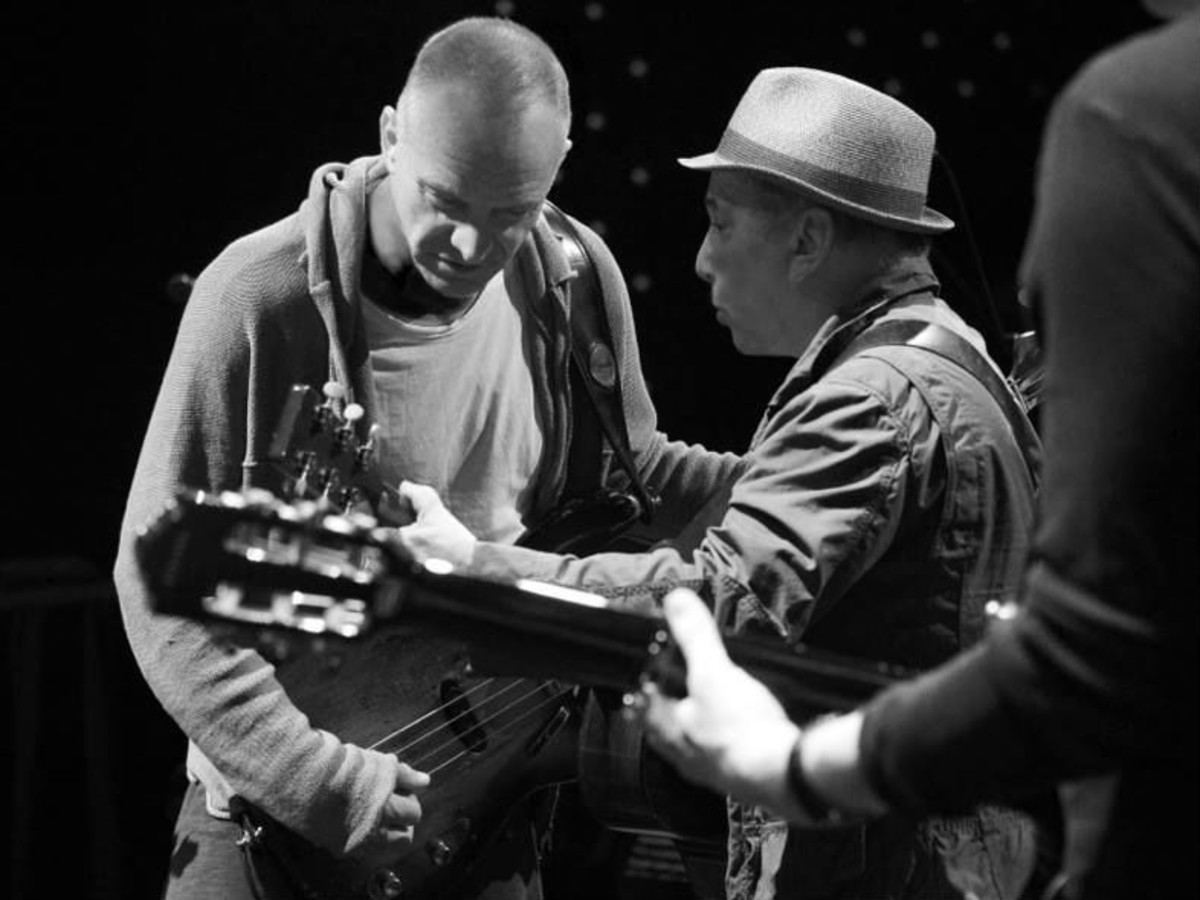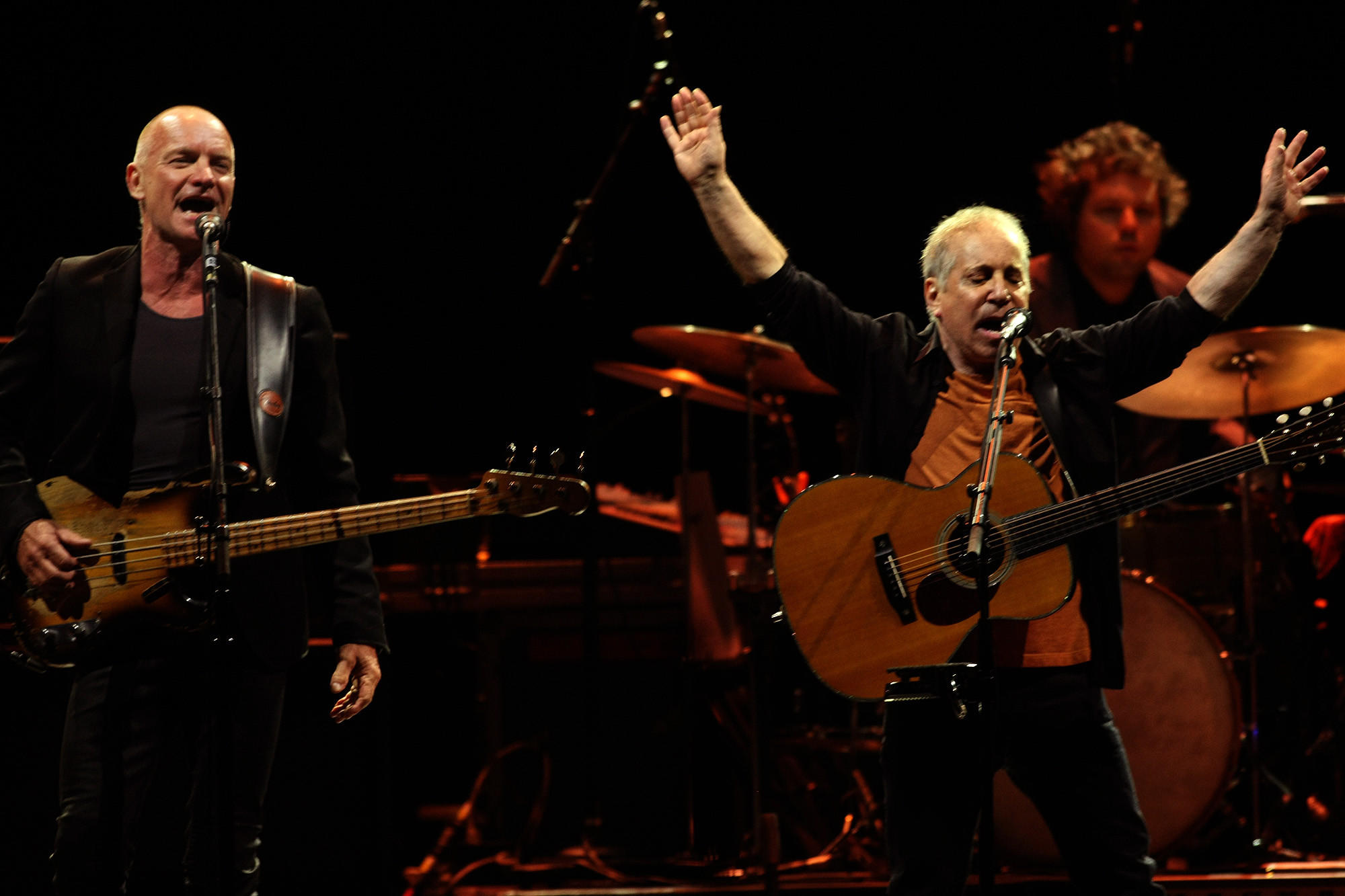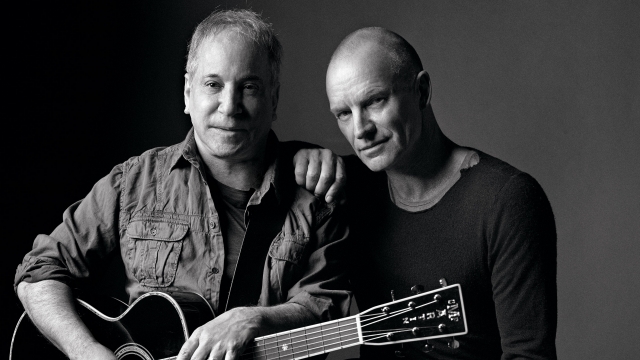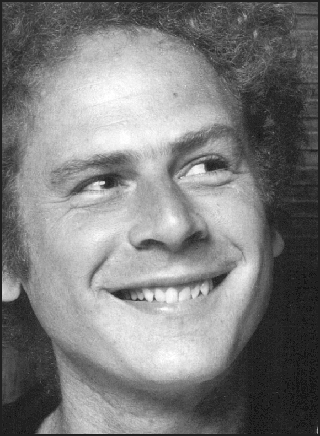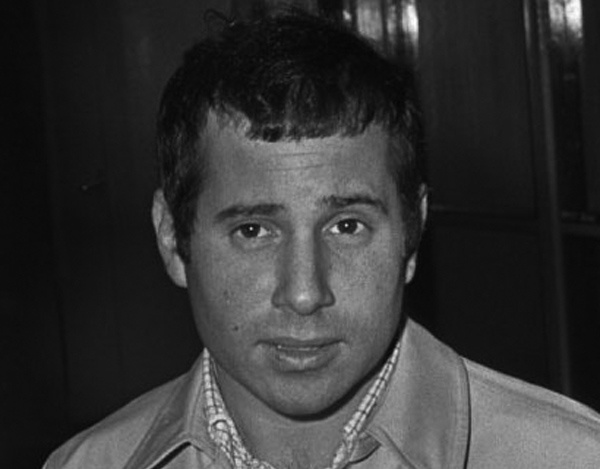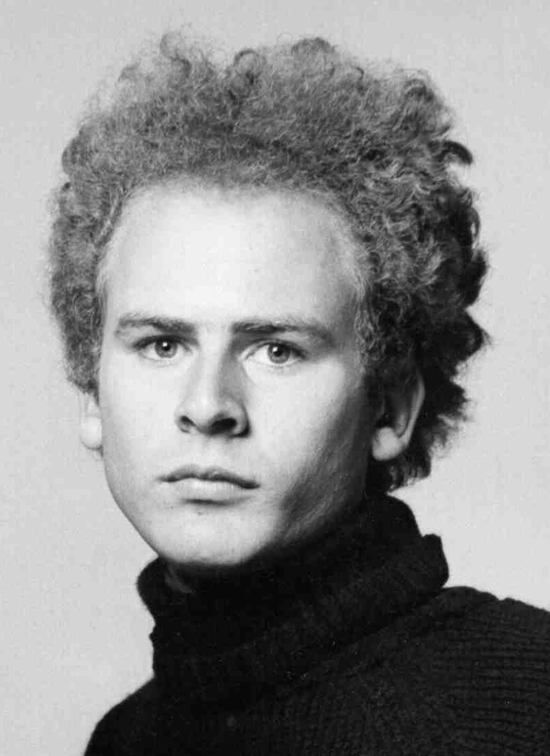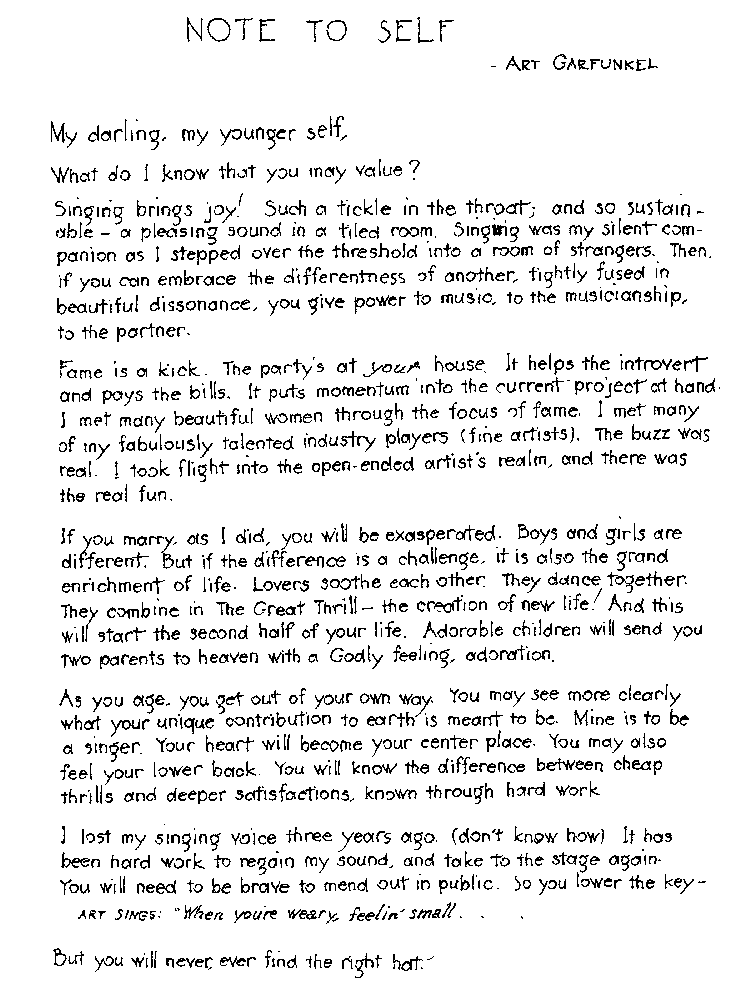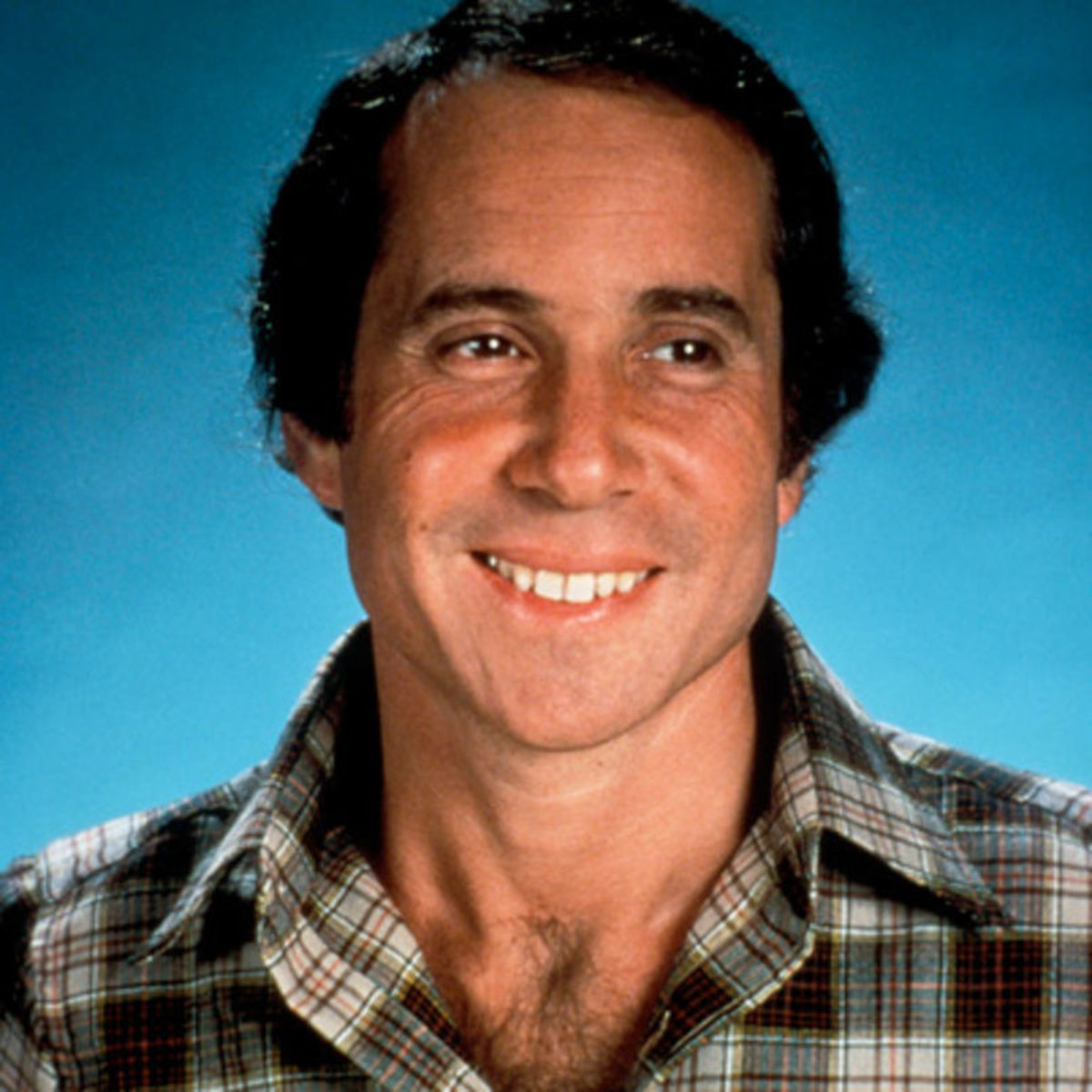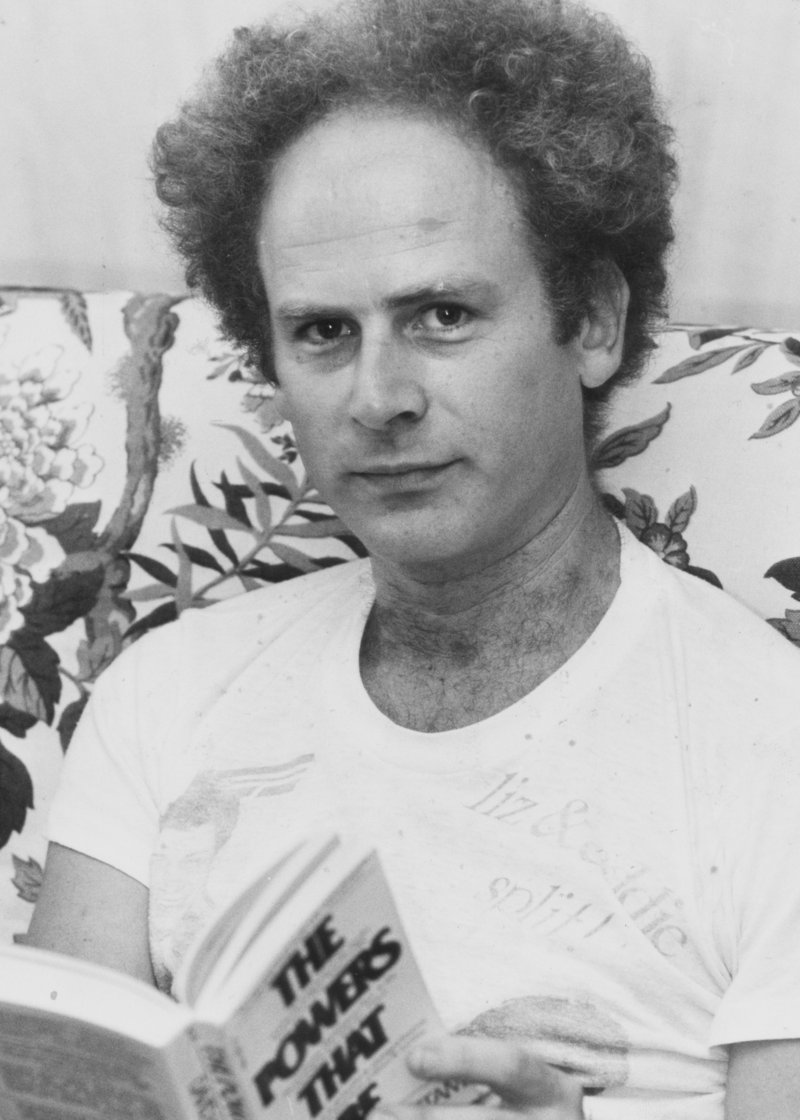Our tale now comes to a close, as the entwined legacies of two halves taper toward a certain infinity. The year is 1984; the place, Manhattan. Two men—closer than brothers yet further from friends—reside on opposite ends of the urban island’s greenway — a landmark of recent consequence for them both.
Chronos guides each man with gentle hand, up the broad-sloped hill from which they will soon descend, west toward the setting sun and the hereafter. Each personality has been written in stone, and the bedrock of a life’s work has shaped the quality of his impact to come. May his influence bear testament to his character and success for all future generations.
To one, the work-obsessed auteur, life has been a mission; to the other, the self-obsessed performer, life has been a stage. Like any of their albums, they’ve written their histories as much together as independently—though the bulk has been shaped by the bard—one song at a time; one breath at a time; like droplets of hot water steadily filling a cold glass.
The proud performer had drawn inward, becoming a haughty egoist, and self-pleasured. Always his counterpoint, the conscious auteur had grown outward, expanding his musical sound, enduring emotional turbulence, and achieving greatness, though evermore insecure of it.
In growth, the auteur exposed himself to the world, and the world fed upon him in exchange for confidence. The performer never feared such exposure; he constructed his own world, where he could always be comfortable and confident; where wisdom, prose, and an angels’ choir sustain his aura of recognition and esteem. And out of the great Paul Simon's shadow, he has carved his own niche, and he is happy to die there.
Paul may forever be dissatisfied despite his marble bust standing in the hall of heroes, but Art Garfunkel stands defiant, proudly preferring he be immortalized in a box with his face on it. Any sized vestige of his individuality would be a better tomb than residing in the eternal cultural memory as only one half of Simon…
And Garfunkel:
Life in the Shadow of the Bard
— Chapter V —
Homeward Bound
Nobody recognized him in Japan; that was what made it so easy. He stood a head above everyone else, with chalkier skin, a prominent nose, and a bushy crown of dry orange hair, but in the rice paddies and cherry blossom-lined roads of Japan, there were few interruptions. A walk through Tokyo became, with endurance, a walk across a nation; a long-form panorama of a culture.
His interactive history lesson and light-exercise adventure inspired him to replicate his feat at home. It would be the second time in his life [without prompt or push] where he would willingly expose himself to an experience he didn't already know the outcome of. Such exposure would bestow him the inspiration that had always eluded him.
“I became a writer for the first time in my life,” he told The Guardian, “not a songwriter, but a literary guy… I started writing in the 1980s—just these little fragments and pages, which I continue to do. I am also working on the story of my life, sketching who I was; how I came to have this voice that raises goosebumps; how I met Paul Simon. All of that,” in poetry.
In 1984, he released his first compilation album, “The Art Garfunkel Album,” in the UK. (Columbia did not release it in the US.) The album featured his thirteen most popular songs from his solo career—all covers and Jimmy Webb tunes—with a fourteenth track as a single: the yet-unheard “Sometimes When I'm Dreaming.” It peaked at #77.
After the Concert in Central Park, and prior to the subsequent S&G world tour, Art visited Japan on furlough. He ventured an impromptu three-week hike across the Far Eastern island, alone with his thoughts, thereby reawakening his love of spectatorship, introspection, and natural aromas. In 1984, on a whim, he walked out the front door of his Manhattan apartment, cut through Central Park, crossed the George Washington Bridge, and strode into New Jersey—hic sunt dracones; here be dragons—gone to look for America.
“Over forty more excursions—about three a year, taking about twelve years—I crossed the entire United States,” on a route shepherded, scouted, and overseen by an aide. However, Art never paid the boy much attention. “Most of the time I was alone with my Sony Walkman and my notebook in pocket… I take a little journal. I don't look for experiences, I just keep trucking. The physical body takes over. It is the cosmic exhale that I pursue. Eyes and breath.”
His cross-country trek was done in spurts: a few score miles here and there, then a flight back to Manhattan, and—whenever he felt like walking again—a flight back to where he left off. In this unorthodox noncommittal manner, it would take Art fourteen years to walk from New York City to the Pacific shores of Oregon.
In a 2015 interview with The Guardian, Art contended, “I walked across America—before Forrest Gump! He stole it from me! And I walked across Europe! And I always think about skin cancer on the nose!”
No longer the “Carnal Knowledge” fountain of sexual magnetism, his face was a generation-too-late to be recognizable; his skin had wrinkled and sagged; his hair lost its luster. He looked like a normal guy. On his long walk, Art attributed the lack of interruptive photo ops to his bucket hat and goal-visualization.
“I had a goofy hat on to protect against the sun. I go invisible… If you carry a spirit inside that says, ‘I am Mr Nobody,’ you become Mr Nobody. There are times when I’m in New York when I’m that famous guy, and I carry the attitude — then I get stopped all the time.” “Sometimes,” he said, he’d use his ‘celebrity’ to “get a decent table at a restaurant.”
At no point in his journey did anybody ask Art Garfunkel why he was skulking around their town. “It just never happened,” however, “I had one incident in Ohio. It was Friday night, and that’s very telling. When the sun goes down on a Friday night, people get a little nutty. There were three guys in a car; they threw a beer can at me; it was three-quarters full and it hit me on the sternum. That was an ouch. I thought I’d broken a bone.”
The interviewer asked him if it was a redneck’s revenge for “Bright Eyes,” but Art didn’t catch the joke. Instead, he replied, “They didn’t recognize me. They were just assholes being mischievous and drunk. It was an Ohio thing.” Nothing much else happened in the Midwest. By the time he reached Nebraska (about halfway through his journey) he was joined, briefly, by journalist Tom Dunkel for Sports Illustrated. The year was 1990.
He walks once or twice a year, between April and October, with a map and black pen. “The main thing I'm recording is the topography of the United States—the third dimension; the up and down of everything… I have a memory of every wrinkle in the American landscape now. I really know the East Coast and how the Appalachians began and how they come down ultimately into the Mississippi. It's a sequence of about forty topographical changes,” along the one route he’s traversed. Originally he planned for a precise latitudinal line but, after the Appalachians, he resorted to following state highways. By the time he reached the Rockies, he was tramping the nearly two-hundred-year-old footsteps of Lewis & Clark.
His first steps had been “spur-of-the-moment,” with laced shoes and a heady trot, but the subsequent fourteen years had been meticulously planned (like any of his albums), traveling “rich-man style,” “with an assistant to drive him to the day's starting point, scout lunch and room accommodations, run errands, and retrieve him at the end of the day.”
Art’s aide, Alan Lipson, “who bears a striking resemblance to a short, guitar-playing fellow with whom Garfunkel used to hang out,” drove the journalist west from Omaha—for one hundred and thirty miles—with the performer riding shotgun. Art’s clean, white Reebok sneakers (size nine) pressed against the dashboard and his seat reclined into the back row. Tom Dunkel watched Art lie, arms crossed and blindfold on, humming Bach’s “St. Matthew Passion.”
His pockets held a map, his glasses, a Casio wristwatch, and his Walkman, with cassettes from the likes of Peter Gabriel, pianist Maurice Ravel, and the poems of John Donne (as read by Richard Burton). The self-described loner with a “supple mind” enjoyed the boredom of his cross-country stroll; it gave him plenty of time to be with his favorite person.
Time enough to think, about everything. “I think about what needs to be done. Sometimes it takes the form of those clear fields—singing and acting. Sometimes it takes in a wider range of choices. I'm forced to be a constant philosopher in order to keep defining the meaning of my life” — an endeavor nearly fifty years in the making. “There is a flip side,” wrote Tom Dunkel, “to eleven gold albums' worth of success: the benign curse of too much choice. Garfunkel doesn't have to do anything, so he agonizes over everything.”
In Art’s Manhattan apartment, on the wall of his third-floor study, hangs a large Rand McNally map marked by flag pins for the paths he tread. Displaced for the map were the eleven gold records he accumulated as half of S&G. These trophies now laid on the floor, “propped against the wall,” Tom Dunkel wrote, “sequentially, left to right, from 1965 (Wednesday Morning, 3 a.m.) to 1982 (The Concert in Central Park). They exude an air of casual neglect, like forgotten tombstones of some family that improbably died in chronological order.”
Throughout New Jersey, Art stared at his feet (arguably a better sight than the state) where he had slipped flash cards of Russian phrases into the laces of his sneakers. Beyond the Appalachians, Art would stare at the clouds, imagining shapes within them and wondering what the wind would look like if it were visible. He was ‘Mr. Nobody.’ He was ‘Mr. Question Mark.’ If the rural world was too ambivalent, he would pierce the silence of the Midwestern pastures with Enrico Caruso and Jimmy Webb tunes.
“Herds of cows are mesmerized by me,” he told Tom Dunkel. “I feel like Jesus, walking through a field. I try to do things that read in the cow world. One of them is this,” he said, flapping his arms. “I work them like a politician. If I look sincere, they look very sincere back to me.”
Well before high noon, Tom followed Art Garfunkel to a lone tree on the side of the road, and an idling car. Out from the car stepped Art’s aide, Alan Lipson, carrying a brand new pair of clean, white Reebok sneakers (size nine) for Art to change into. Further up the road, they passed “Arthur Street.” Art smiled; “James Joyce would have loved that. Joyce loved coincidence.”
Tom followed Art for the remainder of the afternoon. As the sun started its descent towards the horizon—the distinct separation between farmland and open sky—they encountered Alan Lipson’s rental car idling on the roadside. Art climbed into the passenger seat, reclined, affixed his blindfold, and told his aide to drive. Alan already had their night’s lodging booked: a motel beyond the local Elks lodge.
Art asked for the window to be cracked, and Alan leaned across him to roll it down. Art inhaled the prairie air. After a pause, he announced to the journalist, “it's not France… but it's a nice country.” His spasmodic journey would end in September of ‘97, at the mouth of the Columbia River, and then he’d go on to walk Europe.
“What will the history books want to record?” Art asked himself, with a hostage audience of two. “In grade school readers, you'll have the Dred Scott case and ‘The Walk.’ People will go, ‘What other walk was there?’ ‘Oh, Lewis and Clark!’ ‘Well, that's an exploratory thing. ‘The Walk’ is the famous Garfunkel walk of the Nineteen-Eighties and Nineties.’”
On January 13, 1984, Paul Simon starred as the musical guest (opposite hosts John Candy and Carrie Fisher) on Lorne Michaels’ single-season sketch comedy series “The New Show.” During production, Lorne introduced him to the show’s bandleader, Heidi Berg, who lent him a bootleg cassette of African township music.
After the dismal reception of “Hearts and Bones” in America, Paul succumbed again to his insecurities. He had just divorced the love of his life, his album wasn't getting any airplay, his well of inspiration was dry, and now it seemed his commercial viability was shot. “I had a personal blow, a career setback, and the combination of the two put me into a tailspin.”
Feeling claustrophobic, and frustrated, he loaded his car and went for a long drive. A few hours in, however, his tape deck cycled to completion. He rummaged in arm's reach for salvation, eventually finding Heidi’s well-traveled cassette in the glove compartment, and he popped it in. To his amazement, he loved it.
It was funky, exotic, rhythmic, and soothing. Reminiscent of the R&B he jived to as a boy, the bootleg instrumental washed away his frustrations and filled him with wonder. He found himself scatting along to the cassette for the remainder of the summer, remembering all the Latin and African rhythms that inspired him in his youth. He had forgone them all for contemporary pop—and for that he felt sorry—but his interest in ‘world music’ had now returned, and his timing could not have been better.
In mid-January, 1985, Paul was one of forty-five artists asked to join in the recording of “We Are the World,” the supergroup single whose proceeds would be donated for humanitarian relief. Singer/activist Harry Belafonte conceived this pop-music fundraiser after hearing about the UK’s ‘Band-Aid’ supergroup and their single “Do They Know It's Christmas?” which strove to finance the feeding of a famished Ethiopia. Belafonte, however, wanted to go bigger: to feed, clothe, and medicate all of the hungry, sick, and struggling communities of third-world Africa.
Belafonte called fundraiser Ken Kragen, who brought two of his clients—Kenny Rogers and Lionel Richie—into the project. Richie called Stevie Wonder and producer Quincy Jones for more “name value.” Jones then called Michael Jackson, who was fresh-off the success of “Thriller,” to help Richie write the song. They took a broad and accessible approach to the “global community/we are but one people” idea.
Kragen, Belafonte, Jones, and Wonder (but not so much Wonder) called around their inner circles of musical superstars until they had a shortlist of some forty-five people, including Billy Joel, Cyndi Lauper, Tina Turner, Huey Lewis, Bruce Springsteen, Steve Perry, Hall & Oates, Diana Ross, Dionne Warwick, Willie Nelson, Bob Dylan, Ray Charles, Lindsey Buckingham, Smokey Robinson, The Jackson Five, and Paul Simon.
Michael Jackson and Lionel Richie finished writing “We Are the World” the night before their supergroup was slated to record, on January 21, 1985. On entering the studio, all forty-five pop icons passed under a cardboard sign reading “Please check your egos at the door.” Stevie Wonder met them in the booth. Once everybody was situated on the risers, he made an announcement: if they were unable to record the song in one take, he and Ray Charles would personally drive them all home. (Both Stevie Wonder and Ray Charles are blind.)
“We Are the World” released on March 7, 1985, immediately topping the charts. Its initial shipment of 800,000 sold-out in three days, on to become the most popular record of the year, the first-ever to be certified multi-platinum, and the fastest-selling record of all time. Despite all its popularity, it received largely mixed reviews from critics and consumers alike. One journalist said it sounded like a Pepsi jingle, which wouldn’t have been too hard to fathom, “on the part of Pepsi-contracted songwriters Michael Jackson and Lionel Richie.” Any similarities were “certainly not intentional [yet] certainly beyond the realm of serendipity.” Another critic felt the song was underwritten with a “distasteful element of self-indulgence” as the artists highlighted “their own salvation for singing about an issue they will never experience on behalf of a people most of them will never encounter.”
Still, “We Are the World” was a politically-important milestone in American culture, as it “affected an international focus on Africa that was simply unprecedented.” Stephen Holden of The New York Times noted that “We Are the World” set the standard for ‘popular music’ to address ‘humanitarian concerns,’ as it widened American society’s comfort zone regarding diversity, passively interesting the nation in the idea of African culture influencing their own.
Tickled by the ninety-minute bootleg instrumental, Paul wrote lyrics to accompany a particular track he called “Gumboots” which he then recorded-over at home. This cassette was showing him a new world, and yet he still did not know who recorded it, where they were from, or even what all instruments they were using. It was a fantastic mystery that seemed to hold the answers to some of the questions posed by his midlife crisis.
He beseeched his upline at Warner Bros. to investigate the bootleg tape, and within a week they came back with an answer: “Gumboots: Accordion Jive Volume II” by the Boyoyo Boys. They were an established mbaqanga jam band from Soweto, then “the most notorious blacks-only township in apartheid South Africa.” Having earned seventeen gold records in a four-year span, the Boyoyo Boys were what author Evan Fleischer called “expert practitioners” of the mbaqanga genre, known for creating “something as personally appealing and uplifting as a New Orleans second line,” i.e. the parade of revelers that forms behind a brass promenade in the city streets.
According to Jonathan Greer, the typical mbaqanga rhythm “begins with a brief introduction featuring a ‘rhythmically ambiguous,’ almost…improvised line from a solo guitar.” The bassline follows, and the drums, “setting the beat and establishing a four-bar sequence of chords over which the entire piece will unfold…” A driving saxophone or trumpet then punctuates the rhythm, offsetting and “big,” alongside “call-and-response” vocals among the band, which subsequently influence the direction of the drums and bass for the remainder of the jam.
Mbaqanga originated in South Africa in the early 1960s. During the Apartheid era, native Africans were restricted from much of regular society, including career opportunities, forms of expression, neighborhoods, and sides of the street. City-dwelling fans of western jazz music were generally poor and unable to partake in the purchasing, listening, or performing of jazz. However, in the countryside, they could find more freedom.
Using recycled, refurbished, or reattributed western instruments, destitute native Africans could experiment with jazz in the outskirt shebeens — the speakeasies of South Africa. There, communities gathered around a collaborative effort of guitars, drums, brass, double bass, and vocalists galore. Traditional cultural rhythms fed jazz stylings, resulting in a raucous, joyful sound; what the South African government has described as “the cyclic structure of marabi [and kwela vocal styles] with a heavy dollop of American big band swing thrown on top.”
Justifiably, Paul Simon later recalled, “There was the almost mystical affection and strange familiarity I felt when I first heard South African music.” For destitute native communities, such free-flowing musical empowerment was a form of “spiritual sustenance;” a “musical daily bread” to which they attributed the name “mbaqanga” — the Zulu word for their traditional breakfast of cornmeal porridge.
For years, mbaqanga acted as a catalyst for bringing liberal whites and native blacks together in the speakeasies and underground halls of segregated South Africa. The government did not address the deviance of the artform and its venues until it became clear mbaqanga was inspiring resistance to segregation. In a swift offensive, the ‘white nationalist’ military razed the dissenting villages—particularly, Sophiatown, which was leveled and rebuilt as Triomf—and the displaced populous was relocated to the outskirts of Johannesburg, in townships such as Soweto. There, segregation could be more easily enforced, as could cultural repression.
Producer Hilton Rosenthal had grown up in the white suburban half of Johannesburg during the height of apartheid. His parents forbade him from listening to “black music” however, after college, he went to work for the Gramophone Record Co. (South Africa's affiliate of CBS Records) and was soon charged to the “black music” division. He worked against the prejudices of the system to increase the budget, diversity, and publication of traditional Zulu and evolving ethnic music, up into the Eighties.
When Warner Bros. investigated the bootleg tape on Paul's behalf, it was Hilton Rosenthal who supplied the answers. Discerning the intent of the inquiry—to record with a mbaqanga band—Hilton said, “Too bad [the tape is] not from Zimbabwe, Zaire, or Nigeria… Life would have been more simple.” Warner Bros. tried to convince Paul to record in New York, with his choice of session musicians, so as to avoid the red tape of working in apartheid South Africa. However, as with his single “Mother and Child Reunion,” Paul declined, insisting “I need to go there” to get the rhythms from the source.
He later told The New York Times, “The search began when my record company, Warner Bros., put me in touch with Hilton Rosenthal, a leading South African record producer, who identified the group on the tape as the Boyoyo Boys. Hilton also sent me records of around a dozen other South African bands. I was so impressed that I inquired whether it would be possible to record with some of them. I found that I could. And in February 1985, I flew with the recording engineer Roy Halee to Johannesburg.”
Paul had brought Roy Halee back into the fold of his studio career. In fact, Roy was the first person he reached out to about recording an album inspired by “Gumboots: Accordion Jive Volume II.” As Roy recalled to Richard Buskin in 2008, “For me, that project started with Paul telling me, ‘Roy, I've got to play you something that is just great.’ It was the most infectious thing I'd ever heard; as catchy as hell. He said, ‘We have to go over there and record it.’ I said, ‘Where?’ ‘South Africa.’ ‘Okay, great.’”
“Hilton knew everybody in Johannesburg, and so he was able to garner all of these musicians who we'd never previously seen or even heard of. He also booked the recording sessions at Ovation, where they'd mostly been doing South African gospel, and that was a good studio. I remember walking in there and thinking, ‘This is the best-sounding control room I've ever been in.’ … I'd expected a horror show, but everything worked and my first impression was, ‘This is very comfortable.’” It was almost “like you were in your living room… Having said that, the studio itself was like a garage, and in that regard I thought it could be a problem, especially since we were going to record jam sessions from which songs would be created.”
The ‘horror show’ Roy expected had actually been outside the studio, in the streets, and in the air. The hesitance Warner Bros. expressed before sending Paul Simon to South Africa was owed to the western world’s standing boycott on the country. The South African government, helmed by the descendants of British and Dutch colonialists, were fiercely upholding ‘apartheid’ — a network of institutionalised racism by way of segregation. In Afrikaans, “apartheid” literally means “separateness.”
The authoritarian white minority, under the ideology of baasskap (‘white supremacy’), ensured the repression the native black populous for over a century, though institutionalised ‘apartheid’ only officially began in 1948, with the election of the National Party. The distinction was the codifying of racial separation, in realms as petty as drinking fountains and cinemas, and as substantial as housing and employment. Segregation was socially and federally enforced, to the point of entire swaths of land being deemed “off-limits” to “coloreds.”
The British had taken South Africa from the Dutch Empire in the Second Boer War, at the turn of the century, and they retained all of the industrialised systems: the port, the railways, and the racism. In fact, racial segregation worsened under British rule. After their National Party won the election of 1948, they passed the Prohibition of Mixed Marriages Act, the Immorality Amendment Act (restricting interracial dating), and the Population Registration Act (designating four racial types: ‘Black,’ ‘White’, ‘Colored’, and ‘Indian’) through which they could stratify neighborhoods. However, as the cities grew, these areas had to be expanded.
Between 1960 and 1983, 3,500,000 non-white natives were expelled from their homes and relocated en masse to ten distant ghettos, under the guise of “returning the natives to their ‘tribal homeland.’” Those who relocated to these “bantustans” were required to surrender their South African citizenship and the few perks that came with it (e.g. plumbing, electricity). Naturally, nobody was enthusiastic about moving to the bantustans, but they didn't have a choice.
The 1970s saw a rise in resistance to the evictions, segregation, and racism of apartheid, and the South African government responded with gratuitous militant force. Thousands died and countless others were incarcerated, prompting the United Nations to raise an armaments & trade embargo against South Africa. Such global pressures forced the National Party to negotiate with the African National Congress, from 1987 to 1993, resulting in an end to apartheid. — Unfortunately, we are not there yet in our story.
The year is 1985. Apartheid is at its most violent peak. All Western & European nations have broken their relationships with South Africa, thereby allowing the economy to falter and the racial strife to swell. The native blacks and the white minority are on the brink of a civil war—if not considerably already in one—and Paul Simon chose now, of all times, to visit.
Paul was understandably nervous about his upcoming trip to South Africa. “There were people who said I shouldn't go,” he told The New York Times. “South Africa is a supercharged subject surrounded with a tremendous emotional velocity. I knew I would be criticized if I went [but] I was following my musical instincts in wanting to work with people whose music I greatly admired.” While recording “We Are the World,” he spoke with two of the song’s organizers, Quincy Jones and Harry Belafonte, on the morality of breaching the boycott. Jones and Belafonte were in agreement: this mission was noble and necessary, to be undertaken ‘because of’ rather than ‘in spite of’ the nation’s political tensions. A show of racial cohesion for cultural benefit could only have a positive outcome.
Before leaving for Johannesburg, in February 1985, Paul secured the approval of the Musicians Union of South Africa. “I later learned [they] took a vote as to whether they wanted me to come. They decided that my coming would benefit them, because I could help to give South African music a place in the international musical community similar to that of reggae.” The union promised to defend him from condemnation and censorship during his endeavor, as all parties knew he would draw criticism from both pro- and anti-apartheid affiliates.
Having grown-up on the brighter side of apartheid, Hilton Rosenthal was acutely aware of the troubles Paul would face, and he tried his best to streamline the visit. He mailed Paul twenty vinyls of South African musicians—mbaqanga bands and isicathamiya choruses alike—for Paul to consider working with on the record. He listened to each the vinyls and, of his preferences, Hilton arranged for over a dozen black musicians to meet at Ovation Studios in Johannesburg. Paul was most-excited to meet the Boyoyo Boys but, unfortunately, they were tied-up in a legal battle with Malcolm McLaren, the former manager of the Sex Pistols.
McLaren had pilfered the Boyoyo Boys’ track “3 Mabone” to underlay a hit single of his own, “Double Dutch,” and he was refusing to award them royalty payments. The Boyoyo Boys eventually settled out of court and, two decades later, Malcolm McLaren acquired peritoneal mesothelioma—a rare form of cancer that besieges the soft tissues lining the contents of the abdomen, sludging the lubricating fluid that maintains your organs the same way oil maintains your car engine. He died a slow and painful death, likely bestowed by karmic forces for his lifetime of being an exploitative egoist and heartless ass.
The majority of the musicians made their way to Johannesburg from the ghetto of Soweto. The caravan included Lulu Masilela, Joseph Shabalala, and members of Stimela, Tau Ea Matsekha, General MD Shirinda & The Gaza Sisters, and Ladysmith Black Mambazo. Paul quickly found syncopation with Tau Ea Matsekha’s Bakithi Kumalo on bass, Stimela’s Isaac Mthsli on drums, and Chikapa “Ray” Phiri (also of Stimela) on lead guitar. As Roy Halee recalled, “the guitarist, Ray Phiri, always had a wealth of stuff going on in his head. He was smart, he could tell what Paul liked, and he would just go into the little catalogue in his mind and come up with something. Of course, he played guitar on everything.”
“Whenever Paul said, ‘What do you have, Ray?’ the response would be, ‘Well, I have this…’ He's a really quiet, unassuming gentleman, and yet he was the catalyst for so much that took place, along with the bass player Bakithi Kumalo. Bakithi is now world famous, but back then he was just a kid from Soweto… He was unbelievable. For me, those sessions were all about the bass. It always seemed so powerful, and whenever Paul and I came back to New York and listened and listened and listened to the material, it was the bass that really turned me on… And you should hear some of the outtakes. Even today, there could be two instrumental albums consisting of those fabulous grooves.”
“As I soon found out, the musicians liked to work very close together, with eye contact to get the feel and the groove going… Nobody wore headphones, aside from the drummer, and even he often didn't wear them… Well, I wasn't about to get into that with these people. They were to come in, play, and feel comfortable, while my job was to get some isolation… In my opinion, the musicians have to be comfortable and able to see each other. The drummer in his own little room with headphones just doesn't make it for me…”
“For my part, I have good ears, and on this album I had a lot of input, but this was [Paul’s] baby. He heard this. I wouldn't have dreamed about going to South Africa…” As if to prove himself a musical genius, Paul Simon had visualised a cohesive album incorporating the styles of pop, rock, zydeco, a cappella, isicathamiya, mbube, and mbaqanga—and he recorded everything at the source, with the largely-unknown mavens of the genres.
“Paul is a master organizer,” Roy told Richard Buskin. “He was great at determining which section would be nice as a bridge or a chorus or an intro while striking up friendships with the group members with whom he could communicate.” “That's how the songs really evolved. Paul has great musical ears, and when it came to sifting through all the material and deciding what to use, where to make edits, and how to shape things into a track, he had a lot of that in his head. He has an incredible mind, and there wasn't anything that he didn't make a mental note of while listening to the musicians play their grooves. Paul Simon is one in a million. Once you work with him, you don't want to work with anybody else.”
For twelve straight days, Paul and his baker’s dozen recorded a series of jam sessions, each ranging between ten and thirty minutes in length. “Paul certainly wasn't going to tell those guys what to play,” Roy explained. “The sessions had to take place within certain hours before the bus came to take them all away.”
In a 2012 interview with NPR, Paul recalled one evening when he was developing “Gumboots” with saxophonist Barney Rachabane: They were close to finding the right groove for Rachabane's solo but Rachabane had to stop for the day; it was nearly five o'clock and Rachabane “didn't have a permit to be outside that late.” Paul said this moment, among others, really put into perspective “the incredibly tense racial environment, where the law of the land was apartheid.”
As you'd expect, tensions always ran high in the studio; the public outside were largely antagonistic towards the black musicians and the Americans who dared fraternize with them. Paul wanted to prove his gratitude to his fellow musicians, and he paid them triple their union rates ($196.41 an hour) in addition to writer's credit and royalties for any stand-out melodies if they formed the backbone of a song.
These two weeks, Paul recalled, were “one of the greatest times of my life. Real, great fun and experimentation, and learning; meeting great people and musicians.” “There was the visceral thrill of collaborating with South African musicians… Add to this potent mix the new friendships I made with my band mates, and the experience becomes one of the most vital in my life.”
The group Paul collaborated most prevalently with was the nine-man a cappella choir Ladysmith Black Mambazo. Loosely translated to “the black axe from Ladysmith Township,” the Ladysmith Black Mambazo were formed in 1964 on the dreams of Joseph Shabalala—literally. Shabalala once had a series of dreams in which he heard the traditional isicathamiya harmonies of the Zulu people. Inspired, and with little prior experience, he composed a thirteen-member outfit from the ashes of a men's chorus. They performed at weddings, refined their sound, and were inevitably banned from all local competitions for being “too good.”
Ladysmith Black Mambazo released their first album in 1973, which went gold, and subsequent successes paved the way for their collaboration with Paul Simon in 1985. By this time, they were renowned for their mastery of the local vocal style of mbube and its tighter derivative isicathamiya. After working with Paul, the harmonious flavors of Joseph Shabalala and Ladysmith Black Mambazo found international acclaim, followed by five Grammy Awards.
Their genesis was owed to Shabalala, and their prominence was owed to Paul Simon, but their growth was owed to their manager, West Nkosi, who produced their first twenty-two records and arranged for the group to be among those chosen by Hilton Rosenthal for Paul's 1985 South African sessions. After Ladysmith Black Mambazo found international fame, in ‘86, Nkosi wiped his hands of the choir—a mission accomplished—and he returned to his first love: the saxophone. He released the critically-acclaimed “Rhythm of Healing: Supreme Sax & Penny Whistle Township Jive” in 1993. Five years later, a horrific car accident left him paralyzed, and he died within a few weeks—heartbroken and invalid—at the age of 58.
“What I was consciously frustrated with,” Paul told Billboard magazine, “was the system of sitting and writing a song and then going into the studio and trying to make a record of that song. And if I couldn’t find the right musicians or I couldn’t find the right way of making those tracks, then I had a good song and a kind of mediocre record.”
“With these musicians, I was doing it the other way around. The tracks preceded the songs. We worked improvisationally. While a group was playing in the studio, I would sing melodies and words — anything that fit the scale they were playing in.” There were no arrangements; there were no songs; there were only the musicians, their instruments, and their inspiration. They played what felt right, in jam sessions, and—after recording hours of tape—Paul and Roy Halee went back to Manhattan, cut the jams into tracks, and Paul wrote lyrics over the music.
The lyrics came from the tonal patterns of the jam tracks, which meant identifying portions of improvised music that could become verses, choruses, and everything else—almost like making a documentary out of home video footage you found in a box under a park bench. “It was very difficult,” Paul said, “because patterns that seemed as though they should fit together often didn't. I realized that, in African music, the rhythms are always shifting slightly and that the shape of a melody was often dictated by the bassline rather than the guitar. Harmonically, African music consists essentially of three major chords—that's why it sounds so happy—so I could write almost any melody I wanted in a major scale. I improvised in two ways: by making-up melodies in falsetto, and by singing any words that came to mind down in my lower and mid range.”
As the songs were assembled in parts, the larger theme of the album eluded him. He kept a stack of yellow legal pads in the studio and jotted hundreds of words and phrases that came to mind when listening to playback. One phrase, “driving through wasteland,” morphed into “going to Graceland,” which held some spiritual truth for Paul: traveling to Africa, where mankind laid its first rhythms, and then returning to America, birthplace of rock ‘n’ roll.
His album was to be a blend of humanity's musical roots and its most recent revolution, amalgamated from the product of musicians surrendering themselves to the moment; to the union; to the harmony. The New York Times called it “the rock album equivalent of a work of literature.” Paul felt similarly, saying, “I think of writing an album as like writing a play. As in a play, the mood should keep changing. A serious song may lead into an abstract song, which may be followed by a humorous song. On ‘Graceland,’ I tried to be more accessible than in the past without giving up the language.”
It was a word that refused to leave him throughout the processes of cutting and songwriting—GRACELAND—and it became the heart of the album. “It wasn’t about Elvis, but that word wouldn’t go away,” and he's glad it didn't. ‘That word’ took on a greater meaning: “Graceland, to me, is a learning experience of—a uniquely elevated period of my life, musically, politically—of growing up… It’s the grace that I got.”
“The lyrics, in turn, caused a big problem,” Roy confessed. “A lot of the album's songs are very wordy—they come at you like gangbusters—and the arrangements were also involved, but at the same time it was supposed to be a pop record and people had to understand the lyrics. That was tricky, both for Paul to enunciate them and for everyone else to hear them.”
“Capturing Paul's vocals was always very, very tough. Not because of his ability, but because he's a perfectionist… so he would go out and sing the same vocal fifteen times and then I'd comp like crazy. I'd say, ‘Let's do this line over,’ or, ‘This word sounds a little sharp,’ and so he'd re-sing the entire song just so that I could quite literally take that word.”
“The amount of editing that went into that album was unbelievable,” he said, referring to the arduous transference of analog tape to the ‘new’ digital workstation. “Without the facility to edit digital, I don't think we could have done that project.” “We recorded everything analog, so it sounded really good,” but manually editing hours and hours of analog tape would’ve taken ages, so Roy transferred everything to digital, “edited like crazy, put it back on analog, took it to LA to overdub Linda Ronstadt or whoever, brought it back to New York, put it back on digital, and edited some more. We must have done that at least twenty times…”
Editing and re-recording was done in Manhattan, LA, London, and Louisiana, while most of the songwriting was done in solitude at Paul’s beachside home in Montauk, at the far tip of Long Island. There, he played the jam tracks backward as often as he played them forward, searching desperately for patterns. As Stephen Holden wrote in The New York Times, “one gets the sense of an artist submitting to, and being swept up by, musical forces he does not totally understand. Adding a crucial extra dimension to the album is Mr. Simon's very urbane literary sensibility… For Mr. Simon, a normally somber composer-lyricist, the merging of the two cultures has yielded music of astounding joy and playfulness and prompted zany, many-layered pop lyrics that embrace the world in all its terror and confusion.”
Paul invited a dozen American musicians to contribute to the album — most notably, his childhood idols, the Everly Brothers, who sang background vocals on the title track. “Some time after I had finished the tracks for eight songs,” Paul remembered, “I went on a trip to Louisiana with the composer and saxophonist Richard Landry… [There] I realized that the accordion, which had been so prominent in African music, was also integral to Cajun music… At a dance hall in Lafayette, I saw the group Good Rockin' Dopsie and the Twisters, and we went to a little studio behind a music store in Crowley and recorded the song that became ‘That Was Your Mother.’ Then I contacted the Mexican-American band Los Lobos in Los Angeles, and we recorded what later became ‘All Around the World or the Myth of Fingerprints.’ Los Lobos' music also features an accordion. And so the accordion became my connection back to America.”
“Throughout the Graceland project,” Roy Halee recalled, “I tried to capture the integrity of the South African sound—not my own sound—and managed to pick up some of their very interesting ideas. One of these was that they'd use a small amount of very short chamber to the bass, and it was great. It worked very well with Baghiti's fretless bass. I put all kinds of tape reverb and delay on the synth bass line to make it do more than it was actually doing…”
“They almost threw me out of Columbia Records for doing that type of thing. I had machines lined-up all the way down the hall, using tape reverb and delay on different Simon & Garfunkel recordings, like ‘Mrs. Robinson.’” Paul had his two-cents for each edit, and though “He's usually right,” Roy conceded, “if I'll tell him something's out of tune, he'll just say, ‘Fix it,’ and leave me to it. That takes a lot of trust.”
Pierre Boulez was known for being “in revolt against everything” — an atypical description for a composer and conductor of classical music, though an accurate description for a Frenchman. His bullish behavior led to his becoming one of the few paramount classicalists of our ongoing postwar period. In his youth, it was said that “his powerful aggressiveness was a sign of creative passion—a particular blend of intransigence and humor, the way his moods of affection and insolence succeeded one another—all these had drawn us near to him.”
In the early Seventies, Pierre Boulez had become infatuated with the works of impressionist pianist Maurice Ravel. The eccentricities of impressionism flavored his demeanor for a number of years. In New York, he had the seats torn-out of Avery Fisher Hall so he could perform a “rug concert” for his American fans. One of these concerts was followed by an after-party, hosted in an Upper West Side apartment for the elite members of the audience.
Attendees included Paul Simon and his then-wife Peggy Harper. They both had met Pierre Boulez a number of times—acquaintances, surely—but Pierre never seemed to remember their names. On this night, he again greeted the couple with confidence, believing Paul to be “Al” and his wife “Betty.” This was not the case, but Paul found the situation too humorous to upend. He finished the night as “Al,” and the peculiarity of the party stayed with him for fifteen years.
In Montauk, circa 1985, Paul recalled the memory and jotted it down on one of his legal yellow pads. Ideas grew around it, born of the midlife crisis he was trudging through, and he wrote: “A man walks down the street / He says why am I soft in the middle now / Why am I soft in the middle / The rest of my life is so hard.”
Paul began with the basic complaints of a man not unlike himself, and as the song goes on—much like a personal crisis—the thoughts become more abstract. “Got a short little span of attention / And woe my nights are so long / Where's my wife and family / What if I die here / Who'll be my role-model / Now that my role-model is / Gone, gone.”
“Because there's been a structure…those abstract images, they will come down and fall into one of the slots that the mind has already made up about the structure of the song.” “He ducked back down the alley / With some roly-poly little bat-faced girl / All along, along / There were incidents and accidents / There were hints and allegations…” And then came the chorus: “If you'll be my bodyguard / I can be your long lost pal / I can call you Betty / And Betty when you call me / You can call me Al.”
The studio’s synth player, Rob Mounsey, arranged a brief brass section that Roy Halee went to town with. “It was my idea,” he recalled. “However, it was Rob who wrote it down for the horns. It was his arrangement, and the groove that's going on in that song is Rob's groove. He played the groove in the verses, as well as the synth lines at the beginning and throughout the number, and it was that groove which turned the song into a monster, although the brass contributed quite a lot, too.”
Riding under the four trumpets and two trombones was a bass run by Bakithi Kumalo. Roy fed this line backwards, for the sake of experimentation, in the second half of the song. “I simply copied the line as originally played to a mono machine and then synced it backwards into the multitrack. That kind of thing was always happening… Anything to make it sound more interesting.” Morris Goldberg capped the tune off with a penny whistle solo.
The music video intended to be released for “You Can Call Me Al” was a performance Paul gave while hosting “Saturday Night Live,” but he didn’t like it. Thankfully, Lorne Michaels had a better idea: in a small room, Paul Simon would lip-sync the song, and his good friend Chevy Chase would try his best to steal the spotlight. Chevy, at the time, was at the peak of his celebrity (though “National Lampoon's Christmas Vacation” was still three years away). The whimsical simplicity of the video earned it a heavy rotation on VH1.
Released on September 5, 1986, “You Can Call Me Al” was the first single to introduce Paul Simon’s “Graceland” to the world. Its infectious, rooted rhythms shot it to #23 on the Hot 100, charting for twenty-nine straight weeks. Much of the MTV generation was introduced to Paul Simon by way of this song, featuring a goofy Chevy Chase mugging for the camera, and I challenge anyone old enough to remember music videos on television to keep from echoing these rhythms with non-lexical vocables. “Daa na na na! Daa na na na-na!”
When Paul played Central Park again, in 1991, Chevy Chase made a surprise appearance during the break to join Paul in their famous ‘horn dance.’ That same year, Tennessean Senator Al Gore used “You Can Call Me Al” as his campaign song in seeking the Vice Presidential nomination from Bill Clinton. Gore went on to use “You Ain't Seen Nothing Yet” by Bachman-Turner Overdrive for his 2000 Presidential race, thereby institutionalizing the unsettling trend of every aspiring executive officer using a once-Top 40 pop song as a means of seeming relatable. Later selections included Van Halen, Bruce Springsteen, John Lennon, LeAnn Rimes, U2, CCR, the Rolling Stones, John Cougar Mellencamp, Boston, Celine Dion, Tom Petty, ABBA, Kid Rock, and Katy Perry. Paul Simon was one of the earliest and most recent contributors to this trend, lending “Bridge over Troubled Water” to George McGovern in ‘72 and “America” to Bernie Sanders in ‘16.
Once “Graceland” was finished in the mixing lab, Paul and Roy brought it to the executives at Warner Bros. They gave it a listen and returned with pockets full of doubt; not so much cynical but skeptical that an eclectic, African-inspired album like “Graceland” could be appealing. “Paul had tremendous faith in the record,” Roy recalled, “although I had my doubts, because it had been such a lengthy, difficult project, and the music was so different to what was on the charts. Those bass grooves just weren't happening at that time.”
“Just listen to ‘The Boy in the Bubble,’” the third single. “For me, the bass line and the feel of that tune is what the album is all about. It's the essence of everything that happened. The guitar, the drums, and that incredible bass add-up to a feel going-on at the bottom end that is unlike anything I've heard before or since. It's a major part of why the record was huge.” Masked by a jovial, accordion-led melody, “The Boy in the Bubble” muses on famine and terrorism—a daily occurance in most of the world—though the elite of western cultures are [by choice] largely oblivious. Paul said the lyrics were meant to blend “hope and dread,” adding, “That's the way I see the world: a balance between the two, but coming down on the side of hope.”
Beginning with “You Can Call Me Al,” each of the singles from Paul Simon’s seventh studio album increase in African affectation, ultimately turning 1987 into a milestone year; a year where postwar American society finally shifted away from majority conservatism to majority progressivism, opening the hearts and minds of millions to the idea that racial minorities are as cultured, capable, and compassionate as the average suburbanite.
In the fourth single, “Diamonds on the Soles of Her Shoes,” a girl whose wealth affords her immeasurable freedoms and ease is contrasted with a boy whose poverty she cannot fathom. Featured singer Linda Ronstadt lends her earliest memory to the second verse of the fifth and final single, “Under African Skies,” while Joseph Shabalala of Ladysmith Black Mambazo lends his to the opening and closing verse. The somber chorus asks us to reflect on who we are: “This is the story of how we begin to remember / This is the powerful pulsing of love in the vein / After the dream of falling and calling your name out / These are the roots of rhythm and the roots of rhythm remain.” As Jeff Heller wrote, “The root of all rhythm—where our musicality as humans began—is from our heartbeat. That rhythm remains in songs to this day.”
“Graceland,” the second single and title track, features The Everly Brothers on backing vocals (a dream-come-true for Paul Simon) singing of the misery and misfortune that plagues the protagonist’s mind as he drives south to find serenity. Spurred by his crumbling relationship with Carrie Fisher—which she confirmed as the inspiration—Paul wrote, “She comes back to tell me she's gone / As if I didn't know that / As if I didn't know my own bed / As if I'd never noticed / The way she brushed her hair from her forehead / And she said losing love / Is like a window in your heart / Everybody sees you're blown apart / Everybody sees the wind blow.”
Carrie Fisher said in her autobiography, “If you can get Paul Simon to write a song about you, do it, because he is so brilliant at it.” In a modern confessional, Claire Goldberg wrote of “Graceland” being “unapologetically happy—and yet it’s tinged with so much sadness… And it’s sad—there’s no doubt about it—but it’s so happy at the same time. It’s hopeful. ‘Graceland’ itself is a biblical place; a destination from a long journey, and somewhere where all his troubles will be absolved. It’s just one of the many songs on the album that is impossibly beautiful and filled with so many emotions that you can’t ever pick just one.”
Despite the time, money, and resources Warner Bros. had poured into Paul’s African adventure, they did not believe “Graceland” would be a success. Paul’s previous two albums had been failures; he had become a “has-been;” acquiring him from Columbia was a “bad investment.” They wanted to focus on booming artists, like Madonna, and Prince. “It could be that I've reached the point in my career where I can't be a viable commercial force in popular music,” Paul mused, stewing in self-criticism as Warner Bros. deflated his excitement.
“Graceland” was too eclectic and foreign; the unorthodox amalgamation of pop, rock, zydeco, a cappella, isicathamiya, mbube, and mbaqanga was too niche; too “crazy.” Furthermore the tracks rise and fall in emotion, “As in a play,” Paul explained, “the mood should keep changing.” Then there was the cover art: an obscure 16th century painting of a ‘Christian icon’ from Ethiopia, photographed at the Peabody Essex Museum.
As Stephen Holden wrote, following its August 1986 release, “‘Graceland’ opens with a montage of jarring lyrical images that describe a terrorist bombing, drought, and famine; bizarre new medical technology and lasers in the jungle. Set against a slogging rhythm of accordion, bass, and drums, Mr. Simon's stark telegraphic poetry rings with a mixture of alarm and harsh exhilaration… which conjures an indelible picture of the world as a global village, at once united and divided by the magic of technology.” Ethan Zuckerman called this introduction to “Graceland” “an excellent metaphor for anyone confronting our strange, connected world,” adding, “At its best, Graceland sounds as if Simon is encountering forces too large for him to understand or control. He’s riding on top of them, offering free-form reflections on a world that’s vastly more complicated and colorful than the narrow places he and Art Garfunkel explored in their close harmonies.”
“‘Graceland,’” Stephen Holden extolled, “is something new; an album that thoroughly blends various styles of acoustic black South African folk music with strains of stylistically related American rock-and-roll into songs that have unusual shapes and structures, and that sound unlike anything familiar to most American ears. That is because about half the album was recorded in Johannesburg with many of the finest black South African musicians playing music that only later was shaped into songs.” “With his characteristic refinement, Mr. Simon has fashioned that event into the rock album equivalent of a work of literature.”
Robert Christgau of The Village Voice praised “Graceland,” calling it Paul’s greatest work since his eponymous album of fourteen years prior. Patrick Humphries of The BBC said “Graceland” “may well stand as the pinnacle of his remarkable half-century career…” The Independent called it “complex, ebullient, and life-affirming—and, in yoking this intricate dance music to his sophisticated New Yorker sensibility, Simon created a transatlantic bridge that neither pandered to nor patronized either culture.” From this moment on, wrote William Ruhlmann of AllMusic, “‘Graceland’ became the standard against which subsequent musical experiments by major artists were measured.”
Rolling Stone wrote, in a recollection of the album, “The robust bounce and soulful melodicism of township jive, which gave Simon's brainy lyricism a rhythmic kick in his recent work, has become a daily soundtrack in urban yuppie condos and suburban living rooms and on radio airwaves from Australia to Zimbabwe.” The New York Times identified “Graceland” as the album that made African rhythms popular in the western world, for the remainder of the Eighties and much of the Nineties.
“Graceland” became Paul Simon's most critically-acclaimed and commercially-successful solo album, peaking at #3 on the Billboard Albums Chart, certified 5x Platinum by the RIAA, and on to sell over sixteen million copies. It received 5/5 star-ratings across the board, from the likes of AllMusic, American Songwriter, Pitchfork, and Rolling Stone, in addition to winning the Grammy for ‘Album of the Year’ with its title track taking ‘Record of the Year’ in 1987.
“Graceland was never just a collection of songs, after all,” wrote Andrew Leahey of American Songwriter. “It was a bridge between cultures, genres, and continents, not to mention a global launching pad for the musicians whose popularity been suppressed under South Africa's white-run apartheid rule.” Paul was “ahead of his time,” and though later groups would receive flak for too-closely taking inspiration from “Graceland,” Paul tended to defend the artists; in one instance, he said, “In a way, we were on the same pursuit… I don't think you're lifting from me, and—anyway—you're welcome to it, because everybody's lifting all the time. That's the way music grows and is shaped.”
As Ethan Zuckerman once wrote, “Collaborations like ‘Graceland’ don’t happen without the participation of two important types of people: xenophiles and bridge figures. Xenophiles, lovers of the unfamiliar, are people who find inspiration and creative energy in the vast diversity of the world.” Xenophiles, like Paul Simon, “move beyond an initial fascination with a cultural artifact to make lasting and meaningful connections with the people who produced the artifact.” And then there are “bridge figures [who] straddle the borders between cultures, figuratively keeping one foot in each world. Hilton Rosenthal was able to broker a working relationship between a white American songwriter and dozens of black South African musicians during some of the most violent and tense moments of the struggle against apartheid. As a bridge, Rosenthal was an interpreter between cultures and an individual both groups could trust and identify with…”
In 2012, Rolling Stone named “Graceland” the 71st Greatest Album of All Time, calling it “an album about isolation and redemption that transcended ‘world music’ to become the whole world's soundtrack.” According to Paul, “What was unusual about ‘Graceland’ is that it was on the surface apolitical, but what it represented was the essence of the anti-apartheid in that it was a collaboration between blacks and whites to make music that people everywhere enjoyed. It was completely the opposite from what the apartheid regime said, which is that one group of people were inferior. Here, there were no inferiors or superiors; just an acknowledgement of everybody's work as a musician. It was a powerful statement.”
Among the affected were young, white suburbanites, on to become more open-minded than their predecessors. Claire Goldberg was one such young American: “The first Paul Simon album I listened to was ‘Graceland,’ of course. I had heard the classics before, including ‘The Sound of Silence’ from his Simon & Garfunkel days… but ‘Graceland’ was the first piece of Paul Simon that started to mean something to me… That album reminds me of so many things; of all the road trips I’ve ever taken, of my parents, of home, and—strangely enough—it reminds me of somewhere I’ve never even been before. With the African melodies that Simon infuses in his Americana music, it reminds me of places far away and of every corner of this country that I call home…”
While Paul was in South Africa, rejecting apartheid and blowing the roof off of pop music conventions, Art Garfunkel was in Nebraska, walking. He was comfortable—for the moment—with his anonymity, which he pretended was by choice. He had not spoken to his old friend in more than two years; Paul had since been clambering to get back on top, and Art was taking it easy. All he had done since the Concert in Central Park was walk west — that, of course, and the movie “Good to Go.”
Released three weeks before “Graceland,” “Good to Go” showcased Art Garfunkel as beat journalist S.D. Blass, rummaging around Washington DC for ‘the next big story.’ After hearing about a nurse that was recently raped and murdered, he dives ass-first into the underground go-go music scene, eventually publishing the article “Nurse Murdered at Go-Go: Music and Drugs Blamed for Violence,” and then the movie spends the majority of its runtime in back alleys and go-go dance halls.
“Good to Go” was an attempt by the DC-area’s go-go music scene producers to make go-go music into a big deal. I don’t need to ask if you know how that turned out because I know you know it didn’t. Go-go impresario Maxx Kidd and three other go-go producers poured $1,500,000 into a script written by a guy with suboptimal credentials: co-writer of a “madcap caper” about “a team of detectives who are following, and are being followed by, a group of beautiful women;” co-writer and star in a cliché 1980s Hollywood story comparable to films about sexual androids, your weird uncle’s nightclub, Helen Mirren’s “Hussy,” prostitute hijinks, sailor hijinks, and something called “Slayground” with the tagline “Welcome to your funeral;” and then a minor role as “Capt. Braverman” in the sophomoric 1984 raunch comedy “Up the Creek.”
Critic Lars Skogan summarized “Up the Creek” as the story of “four losers” (“Bob the slacker, Irwin the alcoholic geek, Gonzer the human food disposal, and Max the ne'er-do-well”) who are “forced and bribed to represent their university in an intercollegiate raft race,” with foes including “a whole team of marines, and preppy Ivy-leaguers determined to win.” “Up the Creek” was written by the guy who went on to pen 1998’s “Rush Hour” and 2004’s “National Treasure,” which I must admit is one of my favorite movies.
The early Eighties were a different time, evidently, and Americans had demanded more “Animal House” than “Anchorman,” with comedic lines such as Gonzer’s “I risked my life, and you give me Light Beer?” The writer put the onus of the film’s disappointing performance on the director, saying he “was not a great comedy director; he missed a lot of jokes,” but methinks the writer did, too. In her review for the Washington Post, Rita Kempley called it “a moist smut movie,” “headed for the whitewater vapids,” adding, “The only thing good about this movie is Chuck, played by Jake the Wonder Dog—a talented and charismatic Spaniel with a lovely shaggy mane and a divine bark. Chuck has all the best scenes. Still, that brave little pooch is ‘Up the Creek’ without a dog paddle. UP THE CREEK — At area theaters, in English and Spaniel.”
The leader of the “whole team of marines,” Capt. Braverman, was portrayed by Blaine Novak, the Garfunkelish cross between Ted Danson and a garden gnome. His signature line, “A commander couldn’t ask for better soldiers,” is immediately followed in the trailer by a shot that would hilariously argue otherwise! One reviewer, in 2001, wrote, “Is this flick good? Jesus, no. Is this flick funny? Somehow, yes… ‘Up the Creek’ has not aged well (what a shocker) but it's a perfect example of the pointless, disposable comedies they made in the early- to mid-Eighties… Every scene, every joke, every character here is dumb—and thank God… I think ‘Up The Creek’ was made specifically FOR drunk people (and possibly BY drunk people) but that's okay; it's all good. I mean, the film's not good, but then again, it is. Ah, forget it. Just grab a case, a beer bong, and watch the damn thing.”
After losing the camo fatigues, Blaine Novak went home and fulfilled a contract with go-go impresario Maxx Kidd, penning “Good to Go,” a real “snoozer” of a film. “The cover made it look like a decent action flick,” wrote one reviewer. “However, it moves at a snail's pace and had no intelligible plot whatsoever. I feel it was a showcase for the ‘go-go’ music contained within and nothing else.” One of IMDb’s most prolific reviewers agreed, saying that, although the first 75 minutes are “slow moving at first,” the plot “really picks up in the last fifteen minutes” as Art Garfunkel’s S.D. Blass evades “the murderous Harrigan, who's trying to prevent him from telling the truth about his cold-blooded murder of Tony.” Blass is simultaneously “trying to prevent a major race-riot from erupting in the streets of DC” and so he mounts the stage of a televised go-go concert, “telling the millions of viewers the truth,” thereby “vindicating himself…to the wild cheers of thousands of go-go music fans…”
Though most of the $1,500,000 budget came from Maxx Kidd’s own pocket, a portion of the budget was provided through an advertising deal with Pepsi. There’s so much product placement that “It's practically a ninety-minute commercial for Pepsi,” which is odd considering all the “drug-fuelled rape and murder.” The headline for the film’s only somewhat-complimenting review read “Witness Art put the ‘funk’ in ‘Garfunkel’ and watch this oddity today!” Even with his enthusiasm for the singer, the reviewer could not fathom why they chose “noted badass Art Garfunkel” for the lead role, given that Art has the charisma of “a wet noodle.”
To the chagrin of Maxx Kidd, “Good to Go” did not make back its budget. Its failure roots to the bones of the film: conceived to popularise a musical subgenre rather than to tell a story. This was evident in its trailer, which devotes over eighty percent of its runtime to footage of the band Trouble Funk playing the theme song, and a crowd of people dancing. A pulsating red X overlaid by the film’s title took another five percent, leaving the rest of the trailer to hurl shots of chases, car crashes, and fire, with a single half-second shot of Art Garfunkel’s protagonist turning to run—and, for the unfamiliar, you’d have never recognized him in the dark, nor would his appearance have made any sense, considering how no part of the trailer indicated a narrative of any sort. The trailer said more about the film than the film, as it was a film made for the music — and when you make a film not for the sake of a film, you fail to make a film, and thus your film will fail to make money.
Maxx Kidd had been the shepherd of go-go music ever since funk guitarist Chuck Brown birthed the subgenre in the mid-Seventies. It developed a unique regional style in the afro-urban Washington DC area, blending funk riffs, R&B bass, and early hip-hop beats into a riotous “sultry stank.” The key component, however, was the standard dancehall requirement of call-and-response with a live audience, which popularised the go-go subgenre among the nightclub scene. By the mid-Eighties, wrote Natalie Hopkinson, “the music’s relationship to Washington DC was roughly analogous to hip-hop’s relationship with the Bronx.”
As one of America’s most inquisitive cultural scholars, Hopkinson mused, “the question I’m most commonly asked is, Why did go-go stay in DC?” Well, the record label behind Bob Marley’s rise to power had produced a film in 1972, “The Harder They Come,” to boost the reputation of reggae music—and it worked. Maxx Kidd tried to do the same with go-go music, signing the same label executive from “The Harder They Come” to help produce “Good to Go.” That executive was Chris Blackwell, “a white, Jamaican-born, UK-educated music aficionado.”
Blackwell never felt comfortable in black crowds. For the shoot, he arrived in Washington DC with a fleet of bodyguards. Halfway through filming the movie, he fired director Don Letts—a black man—and allowed the writer—the snow-white Blaine Novak—to finish the film. Novak had never directed before, especially on such a large production, and he had no understanding of black culture or the afro-urban Washington DC area. The script he wrote was based on stereotypes, newspaper headlines, and common misconceptions. For a film about a black-helmed subgenre of music in a black community, meant for a black audience, there was a surprising and utter lack of consideration for authentically portraying black culture.
On of the film’s co-producers said of the go-go music scene, during filming, “We heard it’s a bunch of kids stoned on PCP dancing around… When the music stops, fights break out. If you’re white, you don’t go into these scenes because you’re in an incredibly dangerous situation.” Though Maxx Kidd had put his hopes in his team, Chris Blackwell and Blaine Novak could only muster an aura of “racist paternalism,” whether subconsciously or not, which only stood to enrage an already-disrespected afro-urban Washington DC.
Kip Lornell and Charles Stephenson Jr., authors of “The Beat: Go-Go Music,” wrote of the producers vying to conjure “a highly volatile mixture of street violence and niggers crazy on drugs, all highlighted by the blackest music outside of Lagos, Nigeria… It was beginning to look like the ‘70s, when blaxploitation films like ‘Shaft’ and ‘Cotton Comes to Harlem’ were commonplace. If only [Blackwell] had aimed so high!”
Meanwhile Don Letts suggested that “go-go did not translate well into film” since “there is something about it that is intangible. It is almost too hot for vinyl and definitely too hot for celluloid.” “Go-go was the ultimate black tribal rebel sound in Washington, home of the White House and the capital of America. People tried to demonize the whole scene, [but] the bottom line is: you don’t know the complete story of contemporary black music if you don’t know go-go.”
The soundtrack for “Good to Go” launched the same day as the film, in August 1986, with thirteen songs from local go-go bands. The lead track, “Good to Go,” was supplied by Trouble Funk, who had helped raise and foster the go-go scene. Their first studio record, 1982’s “Drop the Bomb,” was highly praised by critics—among them, Robert Christgau and Rolling Stone. The record produced one titular and two booming singles—“Pump Me Up,” “Drop the Bomb,” “Hey Fellas”—on to quickly become go-to samples for hip-hop’s earliest deejays. First scratched and cut by the likes of Public Enemy (“Fight The Power”) and M.A.R.R.S. (“Pump Up The Volume”), Trouble Funk’s go-go influence continues to bare descendants, as in Joe Budden’s 2003 hip-hop hit “Pump It Up.”
Go-go music never went national, though it still thrives in Washington DC. “Good to Go” made no waves, and Maxx Kidd pulled it from theaters shortly after its release. It was repackaged as “Short Fuse” and released again on VHS, though the film is no longer in print. The father of go-go died in 2017, in his suburban-DC home, at the age of 75.
“In ‘83, my friend Jimmy Webb showed me a piece he was writing—a cantata for a children's choir and small orchestra for his local church in Tuxedo, New York—and, it being a noncommercial endeavor, I was particularly interested in it,” Art wrote, in his first poetry collection, “Still Water,” “because I had become cynical about the fact that the record business will professionalize one's musical attempts in a way that can hurt them. And I followed Jimmy's rehearsals in Tuxedo and…I told him I wanted to get involved. By the next year, he had written an extension, doubled its length, and wrote various sections for me as solo singer, narrator, and the angel Gabriel.”
“Good to Go” didn't do Art any favors; its failure boxed him out of any chance at another big Hollywood film. (Being B-listed is one thing; being in a B-list bomb is another.) So Art returned to music, setting his sights on redemption.
“We all performed [Webb's cantata] with orchestra; children's choir—boy singer, girl singer—at St. John the Divine Cathedral in New York… We made a live recording of the shows, which later seemed to me too loose, so we planned to record it in the studio…”
Art wanted Roy Halee to come in and oversee the production of this Christmas album, but Roy was still knee-deep in “Graceland,” hashing tracks with Paul Simon. Art waited, and waited, all the while blaming Paul for holding their shared engineer hostage.
Aggravation bloomed into anger. The clock was ticking, and Art didn't want to delay his album any further. With Christmastime arguably being the best time to release, he moved-on without Roy, deciding he and Jimmy Webb would manage the recording themselves.
“I had it finished by Christmas of ‘86, which I gather is when it came out. It's a gothic cathedral of an album; it's very ambitious. It was the type of project that would have been done by papal commission long ago.”
It was a retelling of the Nativity story—the birth of Jesus Christ—from the perspectives of animals. Art portrayed the angel Gabriel and Amy Grant played the Virgin Mary, performing in the operatic ‘recitative’ form, also known as “Sprechgesang” or “sing-talking.” Listening to all forty minutes of “The Animals’ Christmas” is like boarding a soft-top airplane and gliding at highway speeds through clouds of ennui—listless boredom and emptiness—while someone plays a saxophone from inside a baby grand piano. (Sometimes research is not fun.)
Columbia released “The Animals’ Christmas” on the last day of the year, 1985. It received one critical review: nine out of ten stars from AllMusic’s Joe Viglione. He described it as “one of the best Christmas albums of the Eighties,” calling it “good brain-food for grownups and children alike.” “On the upside for consumers,” he wrote, “none of these tunes are familiar ‘Christmas classics’ hammered into the consciousness during the holidays. The church-like feel of the project keeps [its songs] from being able to break-out on seasonal radio next to tracks from Phil Spector's Christmas Album, Brenda Lee, Bing Crosby, and the other perennials who show up on the airwaves around Thanksgiving time and beyond,” which is nearly the most un-American thing I’ve ever heard. (Somebody dig-up Joe McCarthy; he’ll have a ball.)
Art spent the warm months of 1986 walking. In September, his father died—Jack, the former traveling salesman—and he sank once again into depression.
Paul was on top of the world. He was 45 years old—or, like a hot mommy would say, 45 years young—and had just won the two most sought-after Grammy Awards, back-to-back. His subsequent “Graceland Tour” was selling-out across the country, in magnitudes he hadn't seen since he was shackled to Art Garfunkel.
“Once you go away for a bit,” he said, “you wonder who people think you are. If they don't know what you're up to, they just go by your history. I'm so often described as this person that went to other cultures—which is true—but I never thought of it that way… I wondered, ‘Is this an appropriate context to express various thoughts, given the way people listen now and the way music is exposed to the world?’ Pop music, as it's constantly evolving, is completely different from the value system and aesthetic I grew up with and contributed to.”
Half of his concerts were videotaped, to be released as music videos, and album sales remained steady even two years after release. Commercial success filled his pockets, and cultural celebrity filled his heart, but both paled in comparison to the respect and adoration of thousands of grateful fans, singing along between the low edge of the stage and the back row of the balconies.
“Finishing a song is more satisfying now because I'm grateful, whereas when I was twenty-eight, I expected it. Now if I find something to say, and I say it in a way that I think is artful and true, I'm relieved I wasn't frustrated or stymied. When I was younger, I just said whatever I had to say. I ask myself now: Do I deeply believe that? Will anybody get it? Am I just talking to myself? You have to put that aside because it's not very helpful.”
“I'm trying to be as honest as I can, expressing myself musically and lyrically—editing-out what might be considered obscure, but not trying to oversimplify or be condescending—and then I have to let go, even if I don't immediately understand the words. What I meant eventually reveals itself. You can be too familiar with the process, which I've been doing since I was fifteen. Sometimes, instead of manipulating the craft, you have to just be the vessel through which some sort of inspiration will flow.”
In 2007, “Graceland” became the second of his works to be selected by the Library of Congress for preservation in the National Recording Registry, due to its being “culturally, historically, or aesthetically important.”
Upon receiving his medical license, in 1971, Irwin Redlener moved to Arkansas to practice pediatrics. There, he met his wife, Karen. In the early morning of February 4, 1976, a 7.5-magnitude earthquake struck Guatemala, leveling half of its capital city. Poorly-built concrete and adobe homes collapsed across the country, and in neighboring Honduras, crushing and killing over 23,000 people while leaving an additional one million without homes.
The US Air Force responded with shipments of medical supplies and food. Hundreds of doctors flew to Guatemala, where hospitals were overflowing with casualties; the city itself had become a trauma ward. The US military erected field hospitals nearby, to be serviced by America’s volunteer doctors. Among them was Dr. Irwin Redlener, stationed in a rural village between two jungle-encrusted mountains. His focus was on the children, for whom he treated infections, reset bones, stitched wounds, and at one point was held at gunpoint by a frustrated teen.
After a few weeks of pro bono aid, Dr. Redlener returned to America and opened a Child Action Center, to counsel and heal abused children. He became a member of the Physicians for Social Responsibility and, in 1985, he joined the board of ‘USA for Africa’ as its director of medicine and grants. There, he met Paul Simon, during the recording of “We Are the World,” and the two quickly bonded over their shared heritage: Redlener, a native of Brooklyn, and Paul, a boy from Queens. The latter suggested they collaborate in an effort to remedy homelessness in their city.
The two toured shelters and welfare hotels across Manhattan and Long Island. “We were speechless,” said Redlener, recalling a particular tenement at 32nd and Broadway, “it was a horrible, squalid old building, absolutely teeming with poor children and their families… There were kids and moms everywhere.” “They would have a hot plate—no stoves; a bath that was used to wash clothes.” “It was a hellhole. We both had the same feeling: Where the hell am I?”
This scene burned itself into their hearts, forging within them an indefatigable resolve to combat the sordid, sorry slums of their hometown. “There was something—I don't know how to describe it other than absolutely compelling and romantic—about this vision of somebody going to a place, obviously in need, and practicing what they had learned to do.”
In 1987, the unlikely pair founded the Children's Health Fund — a nonprofit organization of mobile medical clinics designated to provide healthcare for the homeless and impoverished children of New York City. The CHF began with a single refurbished van, designed by Redlener's wife, Karen, and paid for by Paul Simon. “We have basically taken the entire pediatric office and put it on wheels, so we can take it with us,” said Redlener, beaming. “It's like a highly-mechanized, highly-developed house call.”
Today, the CHF services cities across the country with twenty-three programs and over fifty mobile medical clinics. The nonprofit is the leading provider of ambulatory healthcare provision for the homeless and impoverished children of America. “All the medical records of the kids we're seeing are on the computer,” Redlener explained, “so if they move from one shelter to another shelter, we're able to track them and we have their immunization records, what chronic illnesses they have, what medications they're on, and so forth. It's a critical part of the type of health care we think it's important for kids to get.”
The volunteer doctors and nurses of CHF are versed in all forms of pediatrics, including health education, nutrition, preventative care, oral care, mental health, disease management, and emergency response. Their iconic “big blue busses” have contributed to the relief efforts of Hurricanes Andrew and Katrina, the BP Oil Spill, and the 9/11 terror attacks. In 2003, Dr. Redlener became the head of Columbia University’s National Center for Disaster Preparedness, which aims to predict and protect areas of the country whose populations—particularly regarding children—likely stand on the threshold of a major disaster.
The focus of CHF remains on the impoverished. “When we started the program in 1987, there were on average thirteen-thousand children in the homeless shelter system on any given day. Now there are almost eighteen-thousand, so the problem is actually worse than it was, but you don't see it on the front pages anymore. People are tired of it,” Redlener explained, “They think it's resolved or they're moved on to the next issue du jour, and that really is a problem.”
“What has driven me for more than four decades as a pediatrician and advocate has been addressing challenges that can’t wait and where the stakes are high.” “There are specific, age-related windows of development that are time-sensitive. Missing critical health interventions, not getting a proper educational foundation, or experiencing persistent trauma at critical stages may have lifelong, irreversible consequences.”
In over three decades of operation, the Children’s Health Fund has provided medical care to more than three million homeless and impoverished children. Paul Simon has addressed Congress numerous times on behalf of his foundation, and—on his own accord—he’s raised millions of dollars for various childcare and medical foundations, generally though a series of charity concerts and partnered benefits. Even with his age in the high seventies, Paul continues to devote himself to securing support for the Children’s Health Fund and others like it.
As Dr. Redlener once said, “My life and work are based on a simple message: Kids can’t wait.”
(Click here to donate to the Children’s Health Fund.)
“By the 1980s,” Art wrote, “I had sung solo on records that did well; I sustained the very painful loss of a beautiful girl; I did the Concert in Central Park with Paul in ‘81, then toured the world…” Then, in 1983, “on a BMW motorcycle, in the mountain passes of Switzerland, I began to write.” (He writes about himself writing nearly as often as he writes about his life.)
“I'm in a turret of an old hotel in Scarborough,” he harped, “a window view out on the end of the strand. It's neap tide. I'm Noah. Christmastime is here; the Fair is in the past.” Literary musings such as these lay half the track of his prideful non-memoir, “What Is It All but Luminous: Notes from an Underground Man.” “Since Laurie died, I live in my own rarefied air. I put the ‘e’ in ‘artist’ every day. Monteverdi, Proust, Kubrick, I sit reclusive in the park, at the sailboat pond, near Hans Christian Andersen, and write.”
“I let the notebook run—December 29, 1983. Les Arcs, ski village, France. Ineluctable modality…a rower's heart, a simple water-drinking bard. [J] is Stephen Dedalus and I am Leo Bloom—his twenty-two, red and yellow ready; my forty-two and rather ‘at sea.’”
If you’re like me, you don’t know what he was talking about, but that’s okay, because he doesn’t want you to know; he wants himself to know. However, I still wanted to know, so I dissected it: The two main characters of James Joyce’s “Ulysses” are Leopold Bloom and Stephen Dedalus. The former, a middle-aged advertiser, estranged from his wife, who enjoys literature, music, and “explaining his knowledge to others.” The latter, a well-read, intelligent twentysomething with dreams of being a poet, though he is more cerebral than emotional.
“Ineluctable modality” is an “irresistible existence,” as the general term ‘modality’ refers to the manner of something’s nature, or as the musical term ‘modality’ refers to the mood imparted by a singer’s voice. A “rower’s heart” is strong, healthy, virile, and forged in intense training regimens. A “water-drinking bard” is a purist and poet; “red and yellow ready” denotes passion, happiness, enthusiasm, and energy; and “at sea,” of course, means confused, or gone astray.
Is poetry supposed to be dissected? No, but when Art devotes a page of his non-memoir to a cryptic male romance during the least-documented period of his life, it warrants an investigation. “I let the notebook run—December 29, 1983. Les Arcs, ski village, France. [Irresistible mood]… a [strong, virile body], a simple [and pure poet];” [J] is twenty years his junior, well-read, and full of passionate energy; Art is well-aged and out of his comfort zone. It was a thrill.
“Having read six hundred pages of ‘Ulysses,’ the heroes have begun to intertwine.” “He is the young marquis, he's early O'Toole, rich in frailty, he is beautiful. He tells me he'll pull me back in the world. I think of James Fox in ‘The Servant,’” the film adaptation of a 1948 novella by Robin Maugham, the first-born of an English nobleman. Maugham wrote the novella in the aftermath of World War II, from which he was speedily discharged on account of “a state of exhaustion.”
Maugham had described himself as “defiantly homosexual” which shows subtly within “The Servant:” Tony (later portrayed by James Fox) is a wealthy Londoner who hires a manservant named Hugo. The manservant loves his job and the two form a close bond. Tony’s girlfriend gets jealous of Hugo. Over the course of the book, Hugo plies his charm and gets Tony hooked on his phonics. By the end of the book, Tony has exiled his girlfriend and is completely dependant on Hugo; meaning, the “master” and the “servant” have exchanged roles.
“[J] has taken over, I cater to his day. The American European. A writer's holiday.” The O’Toole in question is British actor Peter O’Toole who, in his early years, was a statuesque example of the chiseled male form, with a sturdy jawline, warm blue eyes, tousled blonde hair, and strong bones. As the ‘heroes’ of “Ulysses” intertwine, is it emotional, physical, or both?
“Tomorrow we leave on the Grande Vitesse,” France's high-speed intercity train network. The Les Arcs ski resort is more Swiss or Italian than it is French; they took the link from Lyon to the City of Lights. “Paris 51 Hotel le Colbert, room 22. January 10. The buttresses of Notre Dame are flying out my window,” an architecture joke. “[J] has been ill. His father is cutting him off… Next day he goes to class, Sorbonne 171, economics post-university level. He is being bounced. I get caught for shoplifting underwear at Prix Unique.”
This “J” character seems, then, to be a college student he’d met at the ski resort; perhaps an entitled twentysomething, given his dependence on his father’s pocketbook and his fascination with James Joyce literature. Their Lolitaesque romance takes them away from Paris and northeast, beyond Belgium and toward Germany. “We had a car accident in Luxembourg. Last night he had a 40° fever (speck of dust). I bought him medicine. I brought him dinner. He glistened with sweat through the night—his bed all junked-up and cokey.”
“So he asks me to clean his syringe for him while the medicine goes to his head; ‘Do you still have the Blistex we came with? Put it on me,’ he said. I light the Ducal cigarettes that pass between our silhouettes.” “A flock of birds was passing in the sky. They flew in two societies. I marked the leader's wings in no one's wake. Behind them, two cavorting stragglers fly. I am with them wond'ring—why don't these two lovers take the route the others take? Two lovers—or two wand'ring innocents? In voluntary nonparticipance, for joie de vol, for each the other's sake.”
The group flies on but two linger behind, seemingly for the company of one another. He believes them lovers. In reality, these two geese had been breaking-in the airflow that “provides the additional lift for all of the geese who follow behind,” until they got tired and rotated to the back, where the air was looser. They were more leaders than lovers, but that’s worth noting: Art perceived them as lovers, lingering behind for “the joy of flight;” wondering, “why don't these two lovers take the route the others take?”
“What Is It All but Luminous: Notes from an Underground Man” does not elucidate any further on the episode of “J,” and neither does Art. Aside from this page in his non-memoir, he has never acknowledged the Winter of ‘83/84 or the identity of “J.” When or how it fizzled-out, I don’t know, but in the autumn of ‘85—while shooting “Good to Go” in Los Angeles—his friend showed him a picture of a girl from the Twin Cities. “Love slipped in on me. It wasn't the thing I thought I was looking for, but it felt so good. This was something else again.”
She was Kathryn (Kim) Cermak, a former model, sixteen years his junior. She had once been a teenybopper who fawned over the “handsome sex symbol, Art Garfunkel,” during his S&G days, and that youthful desire lived-on within her. Of their age difference, Art said, “It doesn’t seem to bother us at all and, actually, I love that she’s younger than me. There’s a nice amount of differentness between us: I’m urban and she’s Midwest; I’m much more cerebral and she’s way sweeter than I am, and free of a lot of my thorniness. We slip together pretty naturally.”
They were wed on September 18, 1988, at the Brooklyn Botanic Gardens.
“December 29, 1983. Les Arcs, ski village, France. Ineluctable modality… his twenty-two, red and yellow ready; my forty-two and rather ‘at sea.’” “He tells me he'll pull me back in the world.” “He is the young marquis, he's early O'Toole, rich in frailty, he is beautiful.” “I light the Ducal cigarettes that pass between our silhouettes.” “The heroes have begun to intertwine.” “Why don't these two lovers take the route the others take?”
“[Kim] wasn't the thing I thought I was looking for,” but the Winter of ‘83/84 was long gone, for better or for worse. “I’m a married guy now — my heart is elsewhere.”
“Now that I’m older, the godliness of a child speaks powerfully to me. In my twenties I was chasing the charts and the fun of artistic projects, and in my thirties I was self-involved. It was only once I hit my mid-forties that I realised it wasn’t all about me and that life was about giving life.”
Their first son, James Arthur Garfunkel, was born December 15, 1990. We’re presumed to know the state of the boy’s boyhood as Art speaks at-length in his non-memoir on the “pleasure-robbing hospital habit” of circumcision, saying, “It's not that the thrill is gone, just somewhat taken away.”
“I've finally had to give-up being a control freak,” he told Steve Parks in February of 1994. “My days of neatness and order are gone. I've become undone by the force of my son.”
As a boy, James Garfunkel was a gross little weirdo, sheltered in a shadowed bubble of narcissism, earnestly portraying an entitled ‘mini-me’ version of his father. Now grown, and nearly thirty-years-old, he remains everything but little. A standard google image search for his name yields a bounty of mid-aughts red carpet paparazzo b-roll showcasing him slobbering, stiff-chinning, and shoulder-sniffing with fame-hungry girlfriends galore.
In a 1995 Independent article, titled “Absence can't make the Art grow stronger,” Nicholas Barber told of the most recent Garfunkel concert, in which the singer had “found co-vocalists less likely to upstage him.” These included his wife, Kim, on the S&G hit “Cecelia.” “I'm not calling her a trophy wife,” Barber wrote, “but as she stood there in a little black dress, and on a little black podium, she did look weirdly like a statuette.”
Art's then-four-year-old son James joined him on another Paul-penned song, “Feelin' Groovy.” “He’s better than me and sings higher than I do!” claimed the father, but James had been given the higher register given his natural castrato voice and Art's tarred-and-feathered voicebox. “At last,” Barber wrote, “Garfunkel had found a duettist shorter than Simon.”
Kim rejoined Art for “Mrs. Robinson,” and by that point, as Barber wrote, the family-act “gimmick” quickly “turned a great song into a passable joke.” The crowds may not have wanted a S&G reunion tour featuring a dry-throated Artie as Paul and two bashful, no-name squeakers switching-off as the Art Garfunkel understudy, but this was Art's concert—damn it—and he wanted the world to know his kin! Like Charles Foster Kane, having his thralls perform for a captive audience was what really engorged his trousers. Art loved to showcase the family genes, even if nobody asked to see them.
Like any self-obsessed father with too much time on his hands, Art Garfunkel was full-steam devoted to bringing-up baby James. Within the first four years of the kid's life, Art had recorded eighty-eight hours of videotape documenting James's daily goings-on. (You know babies — every day is a new adventure. Gotta check with their secretary whenever you wanna squeeze-in a quick ‘How's your mother.’)
Once James could walk, Art took him to the Great Lawn of Central Park and showed him where his daddy performed for half-a-million people. “Those were the glory days,” he said.
Then came Beau Daniel, born via surrogacy on October 5, 2005. “We wanted a second child, and I sometimes wondered if it would ever happen — but it finally did fifteen years later, which is lovely and very unusual [especially] at my age…”
“To all daddies who are getting-on in years,” he professed, “it’s spiritually and poetically magnificent to have a child later in life.”
Edie Brickell was born and raised in Dallas, Texas. In 1985, some of her high school friends invited her to sing with them and their band, the New Bohemians. She obliged, and everyone was the better for it. They signed to Geffen Records and, in 1988, released the album “Shooting Rubberbands at the Stars.”
The album shot to #4 on the Billboard 200, owed to the single “What I Am,” which anyone born before the mid-Nineties would immediately recognize upon hearing. The band had become a critical and commercial success almost overnight.
By popular demand, Edie Brickell & New Bohemians were signed-on as the musical guest for the fourth episode of SNL's fourteenth season, hosted by actor Matthew Modine. On November 5, 1988, in Studio 8H of 30 Rockefeller Plaza, Edie Brickell took the stage with her New Bohemians. She opened her mouth and began “What I Am” when the red light bounced from Camera A to Camera B; her eyes followed, and she suddenly froze.
Standing beside the camera pedestal was Paul Simon, fresh-off the success of his “Graceland Tour” and looking handsomer than ever. “Even though I'd performed the song hundreds of times in clubs,” she recalled, “he made me forget how the song went when I looked at him. We can show the kids the tape and say, ‘Look, that's when we first laid eyes on each other.’”
They were married on May 30, 1992. She was a generation younger than him but they had a glut of similarities, including a folk-pop sensibility and a charitable heart. Within the past twenty-five years of matrimony, Edie and Paul have inconspicuously donated millions of dollars to charity, though the devastation of Hurricane Harvey in 2017 prompted a rare public donation—of $1,000,000—given that Edie's hometown had been particularly affected.
The couple currently resides in New Canaan, Connecticut, a wealthy northeastern suburb of New York City. Their neighbors include Harry Connick Jr., Glenn Beck, and the chief executive officers of a half-dozen major conglomerates.
Though Paul and Edie didn’t tend to collaborate musically, the two singer-songwriters did produce together three children—Adrian, Lulu, and Gabriel—and Edie treated Paul's son Harper (the byproduct of his former marriage to Peggy Harper) as if he were her own — however, Harper could very-well take care of himself, given he's only six years younger than her.
Harper has spent his life thus far trying to reproduce the success of his father, in becoming an acclaimed folk-rock singer-songwriter. He performs under his father’s surname yet simultaneously scorns references to him as ‘the son of a rockstar’ rather than ‘a rockstar of his own right.’ However, as Harper told Mark Binelli in April of 2005, he “warms to the subject of being Paul Simon’s son after several whiskeys.” (James A. Garfunkel was included on the cover of this Rolling Stone edition, about the children of rockstars, though he was not interviewed.)
As Binelli wrote, Harper “looks quite a bit like his father, circa ‘One Trick Pony,’ only with a less gaunt face and an expensive-looking messy haircut.” After his father married Edie Brickell, Harper moved out of the Simon Family’s Central Park apartment and into his own, in the Lower East Side. He “spent most of the Nineties…trying to get over his performance anxiety and taking odd jobs,” including a singular attempt at film acting.
Looking back on the Nineties, he’s since called the decade a “sort of a parody of my life at the time.” After 9/11 befell the city, he moved to London with John Lennon’s son, Sean Lennon, “partly to escape the New York scene, partly to seek anonymity.” For another decade, he tried to find himself and his own voice; hanging out with Sean Lennon and making music. In 2010, he released a self-titled album. Rolling Stone called it a “collection of vintage-sounding country-folk tunes,” and, as he was nearing forty years of age, American Songwriter called Harper “a real star in the making.” He once played at Bonnaroo.
He met aspiring-actress Kick Kennedy, the daughter of Robert F. Kennedy Jr., at a lavish party in Morocco, and the two started dating. He was 41, and she was 25, but both agreed the age difference was a non-issue. According to a close friend, they moved-in together at a house in Los Angeles. “They collect art. They have pets.”
The two were considering marriage but, given the Kennedy Family legacy, the only stipulation to their holy union was that Harper convert to Roman Catholic. As stubborn as his father, Harper wouldn’t budge. The relationship fizzled-out, and Kick moved-on to billionaire Matthew Mellon, heir to the BNY Mellon Corporation and chairman of the New York Republican State Committee on finances. They swooned at the Kennedy compound in Hyannis Port and rollicked at his $150,000/mo rental home in Hollywood Hills.
In April of 2018, Matthew Mellon sought help for his addiction to OxyContin. He partook in the hallucinogenic drink ayahuasca, which many spiritualists (Paul Simon and Carrie Fisher included) have used to cleanse their souls. Unfortunately, the drink had the opposite effect, and Mellon died of a heart attack in his Cancun hotel room. Kick was shocked, heartbroken, and devastated. The banking empire was without an heir.
And now, nearing fifty years of age, Harper Simon hosts a podcast.
Art Garfunkel appeared on “The Tonight Show Starring Johnny Carson,” in June of 1987, as the singular promotional effort for his new album, “Lefty.” Carson said he was a fan of the singer, adding, as Art recalled on his own website, “Johnny thought Art was such a good actor because he is such a great interpreter of words. Art acknowledged he was nervous, but he did a fine job showing off his exquisite voice.”
The album “Lefty” debuted in 1988, with the most glowing of reviews saying, “For long-time fans, LEFTY will be quite satisfying.” It peaked at #134 on the Billboard Albums Chart and it failed to chart in any respect overseas. The world had become accustomed to the likes of Aerosmith, Whitesnake, Sting, Cyndi Lauper, George Michael, New Edition, N.W.A., and Billy Joel—all of whom marketed their albums and got their music videos in rotation on MTV—and yet Art was sticking to his decade-old tradition of recording dry ballads by Stephen Bishop and Jimmy Webb, putting them to audiotape, and moving-on with his life. And it wasn't working.
It seemed Paul Simon had somehow inherited the ‘business savvy’ genes from Art's dad, the traveling salesman, considering how Art had none. As he later admitted, putting “Lefty” out into the world “didn't really do much” for anyone. (He had named the album after his hand.)
Also in 1988, Columbia Records released “GARFUNKEL,” the second compilation album of the past four years to be comprised of Art Garfunkel’s solo singles. It features twelve tracks, eight of which had appeared on “The Art Garfunkel Album” in 1984.
In September of 1989, Knopf published “Still Water,” a collection of autobiographical poetry and monologues written in high-brow intellectualist prose. He began the project in 1983, while riding his motorcycle through the Swiss Alps, on his way to the Les Arcs resort where he'd meet “J,” his future muse, and be inspired to put pen to paper. “It's not the same as writing lyrics,” he said. “I've noodled around a bit, but I don't think of poems as songs. Only certain phrases marry to a tune… For me, the voice is my instrument. My center is music. If anything, I am a singer.”
He continued to walk across America. At home, he was reading the dictionary. He kept the 1,664-page Random House Dictionary on his kitchen table, reading it every morning, backwards, from ‘Z’ to ‘A.’ By 1989 he was on ‘F.’ Between the salt and pepper shakers was a hand-written rolodex of ‘interesting words’ and their definitions, catalogued in order of appearance. He compared his backwards dictionary adventure to ‘The Walk,’ as both were thorough explorations of banal activities, performed with utter seriousness.
The Random House Dictionary was nearly the thousandth book he’d read in his lifetime. “Yes, all 1,664 pages. It took me a couple of years.” In his 2015 piece for The Guardian, titled “Art Garfunkel: ‘Weird is a fair word for me,’” Paul Lester asked Art what we’re all wondering: Why? “Why not? I collected words I liked—words that would improve my vocabulary—so I could be more erudite and talk to you. Words that are lovely-sounding shells on the beach.” Riffing, Paul Lester asked him if there was “a finer-sounding word than ‘eschatological.’” Art guffawed, “You’ve taken the ‘c’ and made it a ‘ch,’ I see.” “Not scatological,” Lester insisted, “eschatological.” Art demurred, “I don’t know that one. I’m not that bright.”
On his website, Art Garfunkel keeps a “full listing” of all 1,281 books he’s read since June 1968, beginning with Jean-Jacques Rousseau’s “The Confessions,” supposedly written in 1781 and clocking-in at 606 pages. I mention these particular details because Art has, for every single book. In his “full listing,” since 1998, Art has meticulously identified and catalogued the reading order, author, title, page count, and year of publication for every book he’s read since he began his introspective lifestyle during the recording of “Bookends,” fifty years ago.
As Sam Allington (the only other person this obsessively interested in Art Garfunkel) noted, in 2013, Art makes “no effort…to contextualize the reading in any kind of lived experience, which lends Garfunkel’s list a compelling kind of mystery.” Then, if you dig further, “there is a sub-list, entitled ‘Favorite Books,’ which tells us a few things.” For example, “We see that Garfunkel is a fan of E.L. James, as his most contemporary favorite is ‘Fifty Shades of Grey,’” an unsurprising revelation from the man whose filmography defines him as lascivious.
In January 1990, as a part of its fifth class, Simon & Garfunkel were inducted into the Rock & Roll Hall of Fame alongside acts such as The Kinks, The Who, The Four Tops, The Four Seasons, and Bobby Darin. The legacy organization wrote of their “dulcet harmonies,” “alternately bright and haunting,” as “one of the more cherished sounds of the Sixties.” The music of Simon & Garfunkel remains “permanently etched in our consciousness,” owed to Paul’s “literate, intuitive lyrics [articulating] the feeling of the time better than anyone.”
Art joined his former partner on stage, thanking God for his voice and thanking Paul as “the person who most enriched my life, by putting those songs through me.” Paul took the podium and responded in kind, to the audience, “Arthur and I agree about almost nothing, but it's true—I have enriched his life quite a bit.” When Paul recounted how much he and his “dearest, oldest friend” would groove and laugh in the studio, Art’s expression drastically changed, from animated to somber, and even mournful. They then sang together, for the first time in years, three songs including “The Boxer.” At its end, each half of the old friendship left the stage without any further conversation. It was a reunion by obligation, and it was over.
“‘After changes upon changes, we are more or less the same,’ Paul Simon philosophizes in a slightly revised version of ‘The Boxer,’ a number about eternal human struggle that's perhaps the finest song he wrote while he and Art Garfunkel were still a team.” In his 1982 Rolling Stone piece on the Concert in Central Park, Stephen Holden reflected, “Even though a decade of solo projects had separated them, their musical relationship seemed essentially unchanged. Garfunkel's pristine, quivering folk-pop tenor filtered Simon's wry, angst-ridden musings into a romantic soft focus, and the duo's close harmonies transformed dark compositions of doubt into warm exchanges of feeling.”
This oft-quoted line appeared in the legendary “fourth verse” that is typically replaced by a lone trumpet bleating as if it were attending a military funeral. The fourth verse was replaced for aesthetic purposes, so as to provide a reflective break between two illustrative chapters of the protagonist's life, thereby punctuating the emotional crescendo of the final verse when it does finally come. “[The protagonist has] made many mistakes, and he was so caught-up in the pettiness of life that he forgot some simple things, like the fact that he is older but still has a long way to go.” Live performances often see the fourth verse make a rare appearance, commenting on the passage of time and its circumstances. “The repetition of ‘we are more or less the same’ suggests that new things—good and bad—will happen, but at his core he’s no different. He observes that, no matter what has happened, he is right back where he started, struggling to find himself in the world when he is right there, missing it.”
“The Boxer” is often considered one of Paul Simon’s masterpieces, to which I would agree, as it tells of an impoverished young boy fighting his whole life, just to scrape by, and bemoaning it all the way. He finally parlays into the boxing ring, where he takes his beatings physically rather than emotionally, but he reaches a point where his body can’t take it anymore — and though ‘the boxer’ leaves the arena, ‘the fighter’ still remains.
I identify with and cherish this sixth verse, as a whole, but it is the final five words that really plucks the heartstrings. The first line, “In the clearing stands a boxer, and a fighter by his trade,” reintroduces our protagonist in his new profession, equating the terms ‘boxer’ and ‘fighter.’ “And he carries the reminders,” the song continues, implying the real and metaphorical hardships he’s battled, “Of ev’ry glove that laid him down or cut him / 'Til he cried out,” when he can no longer handle the brutality of the arena, “in his anger and his shame / ‘I am leaving, I am leaving,’ but the fighter still remains.”
The pugilist—the titular boxer—may hang-up his gloves, but the fighter—this man of tenacious character—will persevere forever, as “the fighter still remains.” These final five words of the song are imbued with as much meaning as the preceding six verses, to a degree that Paul later commented, “after completing ‘The Boxer’ I thought, ‘Hm, that’s better than I usually do.’” Nevertheless he felt like a phony; the chorus’s legendary refrain, “lie-la-lie,” was a filler. “I thought that ‘lie la lie’ was a failure of songwriting. I didn’t have any words! Then people said it was ‘lie’ but I didn’t really mean that; that it was ‘a lie.’ But, it’s not a failure of songwriting, because people like that and they put enough meaning into it, and the rest of the song has enough power and emotion—I guess—to make it go, so it’s all right. But for me, every time I sing that part, I’m a little embarrassed.”
In a 1984 interview with Playboy magazine, Paul elucidated on the origins of the song. “I think I was reading the Bible around that time. That’s where I think phrases such as ‘workman’s wages’ came from, and ‘seeking out the poorer quarters.’ That was biblical. I think the song was about me: Everybody’s beating me up, and I’m telling you now ‘I’m going to go away if you don’t stop.’ By that time we had encountered our first criticism. For the first few years, it was just pure praise.” Art agreed, in a 1990 interview with SongTalk, “Yeah, I knew ‘The Boxer’ was great. For one thing, it’s a style that is our strong suit. Paul and Artie could sing most effectively when they were doing a…fluid, running-along-syllable song like that. Whenever we did those folky, running things, the syllabication is ideal for what we had learned. We were tapping into something that went way back for us, and something we could get a blend on… I had a feeling that I could make it sound good. And the lyric is real nice. And the amount of labor in the studio was just unbelievable. That one took so many days.”
During a concert, in 2016, Paul announced the death of Muhammed Ali to the audience, followed by a poignant and impromptu tribute of the sixth and final verse of “The Boxer.” The sorrowful determination in his voice, here, was so poignantly chilling it gave me goosebumps.
“In the clearing stands a boxer, and a fighter by his trade / And he carries the reminders / Of ev’ry glove that laid him down or cut him / 'Til he cried out in his anger and his shame / ‘I am leaving, I am leaving,’ but the fighter still remains.”
Later, in the spring of 1990, at the behest of the US State Department, Art Garfunkel traveled to Bulgaria and performed for a million members of the crumbling Soviet Union. He was there to promote democracy as a replacement form of ideology. “I had horrible stage fright,” he recalled, “but just going out there…has brought my adrenaline down to a manageable place. Now I feel I'm just coming into my prime as a stage performer.”
At the end of the year, in October, Warner Bros. released Paul Simon’s eight solo studio album, “The Rhythm of the Saints.” Inspired by the atmospheric rhythms of Latin America and West Africa, “The Rhythm of the Saints” laid ten tracks commenting on everything from the recent Chernobyl meltdown to his experiences with ayahuasca in the Amazon. The album was a commercial success and was well-received by critics, charting at #4 on the Billboard 200 and reaching #1 in the UK, on to become certified multi-platinum and nominated for two Grammy Awards, including ‘Album of the Year.’
The successive successes of “Graceland” and “The Rhythm of the Saints” paved the way for Paul Simon to return to Central Park, hosting a free concert of his own, with a reported 750,000 people in attendance — again, one of the largest concerts since time immemorial. He has since referred to his day—August 15, 1991—-as “the most memorable moment in my career.”
Recordings of the event were released on VHS and Laserdisc, as well as on the well-favored double live-album “Paul Simon's Concert in the Park,” in CD, cassette, and vinyl formats. The videotape recording was later broadcast on PBS, for which it won an Emmy.
Artie had telephoned Paul a month prior to ask if he could join him in Central Park, but Paul had declined, stating that a strong solo career deserved a strong solo concert. Art was devastated, but he didn’t let it show. “We are indescribable,” he later said, referring to his decades-long relationship with Paul. “You'll never capture it. It's an ingrown, deep friendship. Yes, there is deep love in there — but there's also shit.”
Finding himself available in August of 1991, Art returned to Wyoming and walked to Montana. In 1992, he toured Europe, and Japan. In 1993, Paul reached-out to his old friend and invited him to a twenty-one-show concert run at the Paramount Theater in Manhattan. Art agreed and counter-offered to feature his old friend in his upcoming compilation album, “Up ‘til Now.” Paul obliged, and on the fifth track of Art’s third compilation album in nine years the duo performed a ‘spoken word’ mock-news bulletin wherein Art tried to compose an abstract reason for their breakup while Paul interrupted him, facetiously, advising him on how to seem more serious. It’s not as funny as Art hoped it would be, considering he wanted it “to be like Nichols & May… Hoping people won't take the breakup of Simon & Garfunkel seriously,” however the effort only draws the listener to Art’s psychology, as he was evermore seeming to be the only person who hadn’t yet gotten over the duo’s split twenty-three years prior.
In a 1994 interview with Steve Parks, Art said, “I have a very sure-footed sense of what I like, and exactly how much I like it. Give me two listenings of a song, and I can tell you exactly how it sits with me… I know my musical taste; I know my ears; I know what I respond to.” Since 1970, his ears had preferred he not sing “Homeward Bound,” saying, “It has my former partner's sensibility about it.” However, at a recent Carnegie Hall performance, he caved, saying, “recently I've changed my mind… Tonight, I sing his songs again, but now his words come back to me with shades of mediocrity.” He guffawed. The audience wooed.
“When I see the audience going for it, I just play along,” he said, suggesting his words were not his responsibility, while “tugging on the brim of his navy-blue baseball cap.” “I rode the moment,” he said, shifting the blame and conjuring a compromise to dull the reporter’s heat, “You'll notice that I also called Paul one of America's great songwriters.”
For the umpteenth time, the friendship of Paul Simon and Art Garfunkel soured, becoming acrimonious again for the remainder of the millennium. At his induction into the Rock & Roll Hall of Fame as a solo artist, in 2001, Paul thanked his old partner, adding, “I regret the ending of our friendship. I hope that someday before we die we will make peace with each other.” After a brief pause, he suggested, “No rush.”
In August, 1996, Art Garfunkel finished ‘The Walk.’ He tread over four-thousand miles across America in just over twelve years, averaging less than a mile a day. “My goal,” he said, “was to feel my connection with America, one step at a time.” All that was required of him was to orient himself west, “and the rest is just follow your sense of direction and cut through the earth as if you were two-years-old and an unprogrammed human being who is going to just ‘go,’ you know, that verb ‘to go’ and you see the hills that are twelve miles away, and you say ‘I’m going there,’ and you walk there!”
“The landscape seems to change with time much more rapidly than I thought. I try to look at what is no longer on Earth; things that existed up until just recently.” In a rare open-forum interview, online in 1999, Art told his fans that his most surprising discovery was “In the Appalachians of West Virginia; the sun was going down and I was stuck for a place to stay. I knocked on the door of a private farm house. Three college-age girls were in the middle of an LSD trip. They recognized me as Art Garfunkel. I learned that they were three of thousands (millions?) who are ‘invisible’ — pay no taxes, avoid the census taker; they are not on America's books.” He smelled the air.
As essayist Sam Allingham commented, in 2013, Art’s “‘Walk Across America’ is so thoroughly odd and so precisely documented that it transcends mere existence; it convinces us beyond a doubt that at some point Art Garfunkel was here.” Detailed to its fullest, with exact mileage and dates, Art supplied the unrequited details of his walk on his website. Now we know it took him just over two years to get through Montana—but why did we need to know? As Allingham asked, “the question remains: Why this form? Why, having walked across America…did Art Garfunkel decide to present this journey as a poorly-rendered map of America with a single line running through it and a seemingly unremarkable series of dates and places?”
“The first answer is that Art Garfunkel lacks the ability to present his experiences in any other way. The second answer is that, increasingly, people are presenting their lives in the same way Art Garfunkel does: In random bursts of information, free of context, and that these bursts are what we consider personhood in the digital sphere.” For example, he has one webpage dedicated to every album cover of his solo career, excluding any relevant details, and another page dedicated to all 134 songs of his solo career: “Below is a list complied [sic] by Art Garfunkel of his entire body of work as a solo artist from 1973 - 2007. These songs have been ranked by Art in order of quality of his vocal performance and overall quality of the song.”
In May of 1998, Art Garfunkel began another Walk — this time, across Europe. From Ireland’s Shannon Airport, he walked east, onward to Great Britain, to be followed by France and—eventually—Istanbul. He approximated it to consume his next six years. “I’m not a treadmill guy. This is my way of getting exercise.”
The Walt Disney Company released a short documentary-style video to commemorate the singer’s chronicle of moseying, and he performed for a crowd at Ellis Island soon after. The recording of this concert was released on compact-disc as “Across America.” Stephen Thomas Erlewine of AllMusic awarded it two of five stars, saying, “Art Garfunkel returned to recording [with] a live album intended to commemorate his walk across America. Composed largely of oldies, the record is a pleasant enough nostalgia trip, but it doesn't have enough distinguished performances…to make the record a worthy addition, even to the collections of devoted fans.” Grimacing, Erlewine added, “a version of ‘The 52nd Street Bridge Song’ sung with his six-year-old son is notable, but it certainly isn't accomplished.”
Another reviewer wrote, “In 1984, Art Garfunkel started walking across the United States of America. I don’t know if this is true, but he finally finished in 1996.” As if to combat such ‘willful ignorance,’ every review, interview, and personal quote regarding Art’s Walk can be found on his website. “At best, they’re a little vague,” wrote Allingham, of the singer’s cherry-picked quotations. “At worst, they verge on self-parody. A book of such quotes would have been totally unbearable, as his poetry shows us.”
In “Still Waters,” 1989, Art listed the eight “MAJOR REVELATIONS” he learned on his walk:
OUR ACTIONS ARE DRIVEN BY WE KNOW NOT WHAT
AMBITION IS MIDDLE-CLASS
GILLETTE COULD MAKE A BLADE THAT COULD LAST A LIFETIME IF THEY WANTED TO
WE ARE NOT RESPONSIBLE FOR OUR FEELINGS
LIFE EATS LIFE
IT'S ALL WHERE YOU OBSERVE IT FROM (RELATIVITY)
IF ALL THINGS ARE CYCLES (NIGHT FOLLOWS DAY, SO DAY FOLLOWS NIGHT), THEN DEATH FOLLOWS LIFE, AND…
ALL IS VANITY.
On October 28, 1997, Art made an appearance on “The Late Late Show” to perform “Dreamland,” a new song from his album “Songs From a Parent to a Child.” The host of the show asked him about the growth of American baseball leagues and the breakups of musical groups throughout the Sixties and Seventies. Art responded, “Don’t look at me, Tom, I was happy to carry on.”
The album “Songs From a Parent to a Child” was inspired by Art’s son, James, who liked to be sung to sleep. It featured twelve children’s songs and a reprise of “Who's Gonna Shoe Your Pretty Little Feet?” The middlemost track is a retooled Marvin Gaye song, “You're a Wonderful One,” which ranks #133 of Art’s 134 favorite recordings. The album was received as ‘adequate’ yet was still nominated for the Grammy Award for ‘Best Musical Album for Children.’ It lost against Linda Ronstadt, a frequent collaborator of Paul Simon’s.
On November 1, Art and his kin performed for Bill Clinton at a Democratic National Committee weekend fundraiser. “I had to make sure my nails were clean and stand up extra-straight,” Art said. The journalist Chuck Arnold wrote, for People Magazine, “Art Garfunkel couldn't help but be impressed by the price of admission: $50,000 per couple.” Art drew parallel between himself and Al Gore. “The Vice President really has a tough job being Mr. Second,” he said. “It's tough on the ego. You have to be very secure…”
As this performance aligned with Columbia’s release of another S&G anthology—the three-CD box set “Old Friends”—music critic David Hinckley wrote that Art must “come to accept the fact that, for millions of fans, the mention of either his name or Paul Simon's will forever conjure the other.” Following the release of “Old Friends,” Art said, “I don't normally listen to a lot of old Simon & Garfunkel records, but—listening this time—I became a Simon & Garfunkel fan right there in my bedroom.”
Paul Simon had spent the majority of the Nineties penning a musical about Salvador Agron, a Puerto Rican boy who had killed two people in New York while wearing a cape. This was a “story based on events that happened in 1959,” Paul explained, “events that I remembered.” He funded this endeavor himself, costing in excess of $11,000,000, and on January 29, 1998, “The Capeman” finally opened on Broadway.
It bombed, earning horrid reviews, abysmal box office returns, and only 68 performances (six weeks) before closure. The cast recording was released at the end of the previous year, to mixed reviews, and was the first Paul Simon album to fall short of the Billboard Top 40. As if it were his destiny, he plunged once again into depression. The pains of failure and worthlessness were numbed by ayahuasca, the Amazonian hallucinogenic he had taken once with Carrie Fisher. “The feeling was almost indescribable,” he said of the drink. “You couldn’t imagine feeling any better, and the afterglow would last for days. It also enabled me to hear new sounds in my head, which led to me being able to write songs much faster than before.”
Paul had long-felt unwilling to comment on his coping mechanisms—that is, until he obliged his old colleague, the music critic Robert Hilburn. “He’s very private,” said Hilburn, who first met Paul while freelancing with the LA Times in 1966. He had persistently taken the ‘Paul Simon’ assignments for more than two decades, including—most notably, in 1987—one gig as the sole journalist allowed to shadow Paul on the worldwide “Graceland Tour.” “He wasn’t like a lot of other people I interviewed at the time,” Hilburn recalled. “He was very articulate. He wasn’t very chummy, but he wasn’t nervous talking about his creative process. He was very forthcoming.”
As Rolling Stone detailed, in 2018, Hilburn had insisted on penning Paul’s biography, but the bard dismissed the idea. “Why do I need a biography? My life doesn’t matter. It’s the songs that matter,” to which Hilburn replied, “Well, it’s the creative process, Paul, it’s fascinating. People would like to know about it. It ought to be part of your legacy and your history.” Inevitably, with ‘legacy’ on the table, Paul conceded. “He still had a certain reluctance,” remembered Hilburn, “but I think vaguely he saw that there is a certain value in having a serious book about him.”
He spent much of their sessions as if they were interviews, preferring to talk about his current project—2016’s “Stranger to Stranger”—than to talk about any particular incident. Time after time he had to be reminded that they were writing a book and not an article. The hardest part for Hilburn, however, was getting a word with Art Garfunkel. As Andy Greene wrote, “Garfunkel wasn’t psyched about the idea of reliving their tortured history.” Art declined by saying he was writing his own biography and didn’t want to contribute to ‘the opposition,’ but as time went on his excuses became more vague. As Hilburn recalled, “The impression I got was that he didn’t want to do anything that would help Paul. I said to him, ‘Look, I will treat you with the equal respect that I give Paul. I’m not taking sides.’ Finally he wrote me a letter; it basically said, ‘Please don’t contact me anymore. I just don’t want to do it.’”
In the year 2000, Paul released his tenth studio album as a soloist, “You're the One,” to much acclaim. It was nominated for ‘Album of the Year’ at the 2001 Grammy Awards, cementing Paul Simon as the first artist to be nominated for the award in five consecutive decades. Also that year, Simon & Garfunkel's “Greatest Hits” anthology (of 1972) was certified Diamond with over ten million records sold, making it the best-selling album ever by a duo. Artie beamed. “I'm happy to know the music we made is shared by so many people.”
Following the milestone of 1972's “Greatest Hits” Sony Legacy released “Simon & Garfunkel: The Columbia Studio Recordings, 1964-1970.” The box set included all five S&G studio albums, remastered. Of the crisp new records, Art said they “come as close to the real thing;” as if you were in the booth with the boys during their sessions. “When I play them at home in my kitchen, and I crank out the volume real big,” he said, “I'm reliving that full impact I had when the sound was the way we made it… and at full volume I was back into the thrill of it all… and I relive those great nights in the studio.”
On November 29, 2001, Paul's good friend George Harrison—once of The Beatles—lost his battle with to lung cancer. Paul was devastated; plunged into a pool of nostalgia now embossed with sadness, he remembered all the laughs, the soul-searching, and the playful basement sessions, such as the live jam of 1976. Even in interviews as recent as 2014, a wave of bittersweet pensiveness washes over him whenever his old friend is brought up in conversation.
Columbia dropped Art Garfunkel after thirty years of disappointment. In October, 2002, Blue Note Records released “Everything Waits to Be Noticed,” an ‘easy listening’ album credited to “Art Garfunkel with Maia Sharp & Buddy Mondlock;” Art co-wrote six of the fourteen songs—his first attempt at songwriting—whereas twelve other people co-wrote the other eight. The album cover featured an upward shot of Manhattan as seen from a taxi cab’s backseat window, thereby emphasising the pompous beatnik idea that “Everything Waits to Be Noticed.”
In 2003, Simon reunited with Garfunkel to perform at the Grammy Awards, opening the night with “The Sound of Silence.” The crowd sat mesmerized before erupting with applause. Paul later called it “one of the highlights of my career. When a show has that powerful an opening, it's not just special; it's an event.” Art saw the night differently. It reminded him of all the old wounds and grudges; of the “credit” he was never awarded for being 50% of Simon & Garfunkel.
One could argue he was less than 50% of Simon & Garfunkel, but I need not go there. Kinship soured on the spot. As Art told reporters, “We are currently in one of our breakup phases. But that could change at any moment. Possibly at one of our funerals.”
At the 45th Grammy Awards, in 2003, Simon & Garfunkel were among five acts chosen to receive the Lifetime Achievement Award. According to the Chairman of the Academy, “The recipients of these awards are a diverse group of inspired creators who have contributed some of the most distinctive and seminal recordings of the past century… Their outstanding achievements leave a timeless legacy that inspire generations of fans and artists alike. Their work exemplifies the highest creative and technical standards by which we all measure our own personal and professional contributions.” Art was tickled.
Simon & Garfunkel have won nine competitive Grammy Awards, four Hall of Fame awards, and now a Lifetime Achievement Award. In 1969, “Mrs. Robinson” was ‘Record of the Year’ and ‘Best Contemporary Pop Performance, Vocal Duo or Group,’ and “The Graduate” was ‘Best Original Score Written for a Motion Picture.’ In 1971, “Bridge Over Troubled Water” took ‘Album of the Year’ and its titular song swept ‘Record of the Year,’ ‘Song of the Year,’ ‘Best Contemporary Song,’ ‘Best Instrumental Arrangement Accompanying Vocalist,’ and ‘Best Engineered Recording,’ before earning a place on the recording industry’s Hall of Fame in ‘98. Other Hall of Fame awards came in ‘99 for “Mrs. Robinson” and the album “Parsley, Sage, Rosemary, and Thyme,” with “The Sound of Silence” earning another in 2004, culminating with the grand prize—the Grammy Lifetime Achievement Award—as proof of having “made it” into the history books.
After five studio albums, four live albums, fifteen compilation albums, four box sets, an extended-play, a soundtrack, and twenty-six singles since 1964, Simon & Garfunkel were—for better or for worse—immortalized together.
On his own, Paul Simon inserted himself into the cultural zeitgeist as a master songwriter of unpredictable style and enviable imagination. On his own, Art Garfunkel became, as Sam Allingham wrote, someone who is “simultaneously extremely famous and completely culturally irrelevant.” The once-teacher of mathematics had released ten mediocre solo albums over forty years, generating fourteen hits for the Adult Contemporary charts, with six reaching the Top 40 and three closer to Top 20. Neil Strauss of The New York Times described Art’s voice as “one of the finest instruments in all of popular music;” “a tenor he has wielded with varying effect since 1970,” continued Allingham, “when he stopped singing Paul Simon’s songs and started singing inferior songs by other people. Art Garfunkel is the sort of person who most people only know is alive because they have not yet heard news that he is dead.”
“Were Art Garfunkel to die, we would be immediately reminded of his life: his records, his acting career, even his poetry,” though not quite his poetry. “But until the news of his death arrives, Art Garfunkel lives in the specific limbo of the used-to-be-famous.” Allingham goes on to argue that, for the past decade, the only remaining presence of Art Garfunkel—or, ART GARGUNKEL, as he wrote online—exists on his website, where he more-or-less pioneered the idea of social media—an outlet of obtuse, narcissistic, and rather antisocial one-way interaction across time—with his inept, figure-based chronicle of life: the “What I’ve Read” book list (1,281 titles and counting); the geriatric jpeg distinguishing his Walk Across America, and the timetables beneath to assure us of every step he took along the way—an unrequited precedent of the status update; the banal prophecy of opinion listicles in the ranking of his own solo singles by preference; a long-winded, self-focused, self-serving autobiography; quotes-from and links-to every post-S&G article that has interviewed or mentioned him; etcetera.
As Allingham wrote, whether Art Garfunkel is a loon or a prophet, “the fact remains that we are increasingly portraying ourselves in ways that are more about ‘what we have done’ and ‘when’ and ‘where we did it’ than ‘why.’” Like the essayist, I’ve spent more time than I care to admit researching the intricacies of Art Garfunkel’s life—and I couldn’t exactly tell you ‘why.’ “The truth is that, no matter how much I try, I’ll never be able to understand what the hell Art Garfunkel sees as an ordering principle for his ‘Body of Work,’ and I have come to the conclusion that he doesn’t want me to. This, it seems to me, is the moral of Art Garfunkel; the one that rests below his relentless quantification of his own life” — the expected behavior of a man who once chose the moniker “Tom Graph” because he loved to chart and analyze every aspect of his world.
“If, for whatever reason, you cannot get across to someone what it was like to have an experience, then the next best thing is to record that experience in great detail;” to conjure a dollop of voyeurism through passive-aggressive levels of exposition. “Even though people will never know what it was like to travel through Frankfort, Kentucky, on October 12, 1988…they will at least wonder a little,” and that seed will sow itself in their mind, and the farmer of mystery will exist in their head evermore, conjuring the immortal question—why?—and the farmer of mystery thereby earns life after death. He becomes “something for them to think about as they fall asleep at night, the same way I’ve been wondering about these things for the last several weeks.” And inevitably, despite the clear severance of time, space, and relation between Allingham and I, this ugly question—why, Art Garfunkel?—has united us; an impossible connection owed to an ‘antisocial one-way interaction across time,’ eavesdropped upon and investigated by two misanthropes with interests beyond explanation.
In a 2015 interview with The Guardian, Art was asked about the past sixty years of friendship he shared with his former partner. Unrecovered from his contempt, he mustered the reply, “Paul Simon is a man who has enormously enriched my life, period.” Pressed for the “vice versa,” he said, “Yeah, we’ve enriched each other’s lives. What would have been his life if his friend Artie didn’t sing so good and been so good and produced those records so good? What would it have been? Something smaller.”
In a 2007 concert produced by Paul Simon, Art made a surprise appearance to sing “Bridge Over Troubled Water” alongside his former partner. He relished in his waning limelight, as the relationship between the two old friends had finally washed away in troubled waters, more like the Bridge on the River Kwai than its sturdy peers, of Brooklyn or Golden Gate. In a 1993 interview, they predicted the end by defining the beginning:
PAUL: “We were kids and we didn't think it was a big deal to break-up, so we broke-up.”
ART: “We did give each other a quality that each of us wanted from the other, as if we were trying to make one perfect person together.”
PAUL: “I think he just gave me the confidence that I probably wouldn't have had by myself. I think I would've been shy to do that without Artie.”
ART: “I guess he was using my popularity as part of who he was — but I was using his drive, to get someplace, because I'm more of a laid-back guy and always was. I don't think I would have had the career I've had if not for the engine that Paul Simon is.”
In 1998, Art Garfunkel was nominated for a Grammy—his sole solo nomination—for ‘Best Children's Album,’ with “Songs from a Parent to a Child.” Comparatively, Paul—solo—has taken home twelve Grammy Awards, a Lifetime Achievement Award (his second), and five ‘Album of the Year’ nominations—winning three—to become one of only six artists to independently earn this award on more than one occasion. He’s garnered nearly seventy-five-million radio airplays, according to BMI surveys, and has been honored with Oscar nominations, inductions into the Songwriters Hall of Fame and the Rock & Roll Hall of Fame (twice, as a solo artist and as half a duo), a Top 10 seed in The American Film Institute’s “100 Years 100 Songs” list for “Mrs. Robinson,” and a selection as one of Time Magazine’s “100 People Who Shaped the World.”
In 2002, Paul Simon was one of five recipients of the nation’s highest merit for cultural influence: the Kennedy Center Honor. Paul’s tribute was given by his old friend, comedian Steve Martin, who said, “His career has survived cultural changes and been reborn each time with a new burst of creativity. He’s gone through and survived folk music, disco, punk, grunge, rap… I have seen Paul’s diligence and sincerity when it comes to his work.” He added, “I don’t use the word ‘genius’ very often,” to which Paul beamed. His aura throughout this tribute was one of genuine happiness and fulfillment. It was as if, for once, he had become satisfied with his life’s work.
“Throughout the years,” Steve Martin continued, “Paul has fine-tuned his generosity, his love for family, his genuine appreciation of the work of others, and his own production as an artist. I see him enjoying life and, most of all, I witnessed his continuing dedication to the art of writing and performing music. His care for his art has affected not only our generation but generations yet to come.”
Claire Goldberg was one of these youths forever-changed by the aging bard. In her ode to Paul Simon, published in 2018, she wrote, “I remember trying to write my college essays senior year of high school, and a teacher told me to write about something that meant a lot to me, so I started writing about ‘Graceland.’ I never used the essay, but in it I tried to explain all the road trips I had been on, all the times I had listened to it, [and] how it was something that connected me to my family. I tried to explain that it may have been one of the first pieces of truly good music that I ever listened to. So here I am, trying to write about it again, still struggling to put into words how and why I love Paul Simon the way I do.”
Yet, by the end of seven paragraphs, she says it as best as anyone could: “Paul Simon is just so impossibly good—and I know its not as simple as that; I know there is so much that makes him so good, but sometimes that’s all you can say. His fan base spans generations and his music spans genres. It’s impossible to listen and to not like every second of his music.”
In 2007, he was the first-ever recipient of the annual ‘Gershwin Prize for Popular Song’ bestowed by the Library of Congress, recognizing “the profound and positive effect of popular music on the world's culture.” Of the honor, he said, “I am grateful to be the recipient of the Gershwin Prize, and doubly honored to be the first. I look forward to spending an evening in the company of artists I admire [and] I can think of a few who have expressed my words and music far better than I. I'm excited at the prospect of that happening again. It's a songwriter's dream come true.”
“The Essential Paul Simon” compilation album was released later that year. Featuring the thirty-six most-definitively “Paul Simonic” of his songs, the 1971-2006 chronicle of his life’s work was highly-regarded. Stephen Erlewine of Allmusic gave it 9/10 stars, calling it “his biggest album, [functioning] as a nice transition between his better-known Seventies hits and the more esoteric but frequently compelling work that he's done since.” Tracks included the recent “Wartime Prayers,” “The Obvious Child,” and Oscar-nominated “Father and Daughter,” as well as classics like “Under African Skies,” “The Boy in the Bubble,” “Late in the Evening,” “Kodachrome,” “50 Ways to Leave Your Lover,” “Hearts and Bones,” “Graceland,” “Still Crazy After All These Years,” “American Tune,” “Loves Me Like a Rock,” “Me and Julio Down by the Schoolyard,” “You Can Call Me Al,” and his first post-S&G success, “Mother and Child Reunion.”
In the following years, he was further honored with induction into the American Academy of Arts & Sciences; he gave a public (and heartbreaking) tribute performance on the minute-exact ten-year anniversary of the September 11th attacks; and he was listed with prominence among Rolling Stone’s “100 Greatest Guitarists” and “100 Greatest Songwriters of All Time.” In 2016, after sixty years of fruitful ambition, he spoke to NPR about the possibility of ending his career.
“I really wonder what would happen to my creative impulses, which seem to come on a regular basis; every three, four years they manifest themselves—and, by habit, they manifest themselves as songs. But this is really the decision of a thirteen-year-old. Me, who said, at thirteen, ‘No, I want to write songs.’ So I'm doing it sixty years later. This thirteen-year-old is still telling me what to do.”
“What I'm really interested in, on a personal level, are my dreams. I have a long history—really going back to like when I'm four—of violence dreams. Those dreams, they got so intense a few years ago that I took a trip down to Brazil to see this healer, John of God,” he said, referring to his cleansing with ayahuasca. “We don't have the capacity to understand the great mysteries of life and God, or no God, or infinity — we just can't get it. It's beyond us, but that's fine. We're not meant to get that. But the pursuit is so interesting. That, I think, it's life sustaining and I think when you lose the interest in that pursuit you're finished.”
“I think after [the 2016 album] ‘Stranger To Stranger’ a funny thing happened, when I finished: I literally felt like a switch clicked and I said, ‘I'm finished.’”
Saturday, September 22, 2018, Paul Simon hosted his last stop on his last tour—the ‘Homeward Bound’ Farewell Tour—at Flushing Meadows–Corona Park, a site which had been created for the 1939/1940 New York World's Fair, also to host the 1964/1965 New York World's Fair. On these grounds stands the iconic Unisphere—a spherical stainless steel representation of the Earth, dedicated to “Man's Achievements on a Shrinking Globe in an Expanding Universe,” surrounded by some-dozen upward fountain jets—which, aside from the geographic significance it holds for Paul Simon (“This is like two miles from where I played high school baseball”), deeply represents his approach to musical composition and songwriting: the inclusion of all cultures, backgrounds, and peoples; a worldly interpretation of pop music.
Andy Greene chronicled the concert for Rolling Stone, writing, “It was a typically joyous moment on what could have otherwise been a pretty melancholy affair.” But Paul Simon brought the park to life, in such a way that “complete strangers could groove together to ‘Diamonds on the Soles of Her Shoes,’ harmonize on the ‘lie la lie’ chorus of ‘The Boxer,’ and jump up and down while screaming out every word to ‘You Can Call Me Al.’” The concert was one of celebration, not mourning, though Greene noted Paul was crying by the end of the song “Homeward Bound.”
As the night came to a close, he brought up his guitar and played those four haunting notes—those that he had written fifty-four years earlier, as a boy, in his parents’ bathroom; those that had first been ridiculed by beatniks before launching the career of one of America's most prolific songwriters—and he sang the immortal line, “Hello darkness, my old friend,” and the crowd, once rowdy and joyous, fell into an absolute silence. The melancholy of “The Sound of Silence” was tinged bittersweet, wetting eyes and filling hearts with the same sensation that comes from learning of a family member's diagnosis — the savoring of these final moments, knowing with grim certainty that the end is already here, and “How did it get here so quickly?” “How much time has passed,” and “Where have we gone?” “How could this be the end?”
Existentialism broke the audience down like waves, as intentionally as “The Sound of Silence” had been written so long ago. In a perfectly planned maneuver, the song that started his legendary career was now ending it. “He didn’t need to explain any of this to the crowd,” wrote Andy Greene. “We could all feel it.”
At song's end, the strings faded away to silence—the sound of it—and he laid down his guitar, looking out “at the sea of people in the audience, soaking in their love one last time.” He bowed and held his heart before leaning into the mic, as if answering a question posed wordlessly by the crowd… and he smiled, with a heart full of love. “It means more than you can know.”
On August 31, 2005, Art Garfunkel was arrested again for possession of a controlled substance. He had never broken himself of his “reefer madness.” So, in 2005, fifty percent of “legendary Sixties duo Simon & Garfunkel” was pulled over outside Woodstock (yes, that Woodstock) by a state trooper. Artie had blown through a stop sign he couldn't see through the purple haze; the statie smelled skunkweed on him and searched the car, finding what ABC reported as “a marijuana cigarette.”
Art pled guilty, as he had in January of ‘04 when he was nabbed for the same charge, though he had been caught then for speeding. He paid only a $200 fine considering the “Do you know who I am?” bit actually seems to work, and he was slapped on the wrist for both occasions. And this was during the Bush Administration!
In his 2015 interview with The Guardian, the reporter pressed him on the cannabis busts, asking if they helped restore his old reputation as a rock'n'roller. Art scowled, “You’re going for all the joys, aren’t you?” He arched his back. “Listen, who doesn’t smoke a joint? So I’m the celebrity and I get to have to talk about this?” The reporter apologized, but Art wasn't satisfied; he bit back, “You’re not that sorry.”
Art’s tenth and final solo album, “Some Enchanted Evening,” was released in 2007. Featuring songs by Irving Berlin, George Gershwin, and Rodgers & Hammerstein (“I’ve been loving this stuff all my life”) “Some Enchanted Evening” was his ‘adult contemporary’ interpretation of the ‘Great American Songbook.’ “In this nervous world,” he said, “I want to soothe. It’s a great time for moderation, for thoughtfulness, for dialogue, for the great Exhale, for humor; a great time for a sweet sound; a visceral, charming, prayerful sound.”
"I feel somewhat different from many people,” he continued, “in the extraordinary amount of good fortune that fell into my lap and made up my life… I grew up with a lot of love in my family, so I have the five senses with which to glean the richness of this land…" Asked by a Danish fan, in 2008, “Are you surprised when you see teenagers sing along to your songs?” Art replied, “I remember standing in front of the mic in the recording studio, in the Sixties, asking of myself a performance level that was worth a Record for Time. How much time? Well, I thought, if it's superfine it may mean something in the next century.”
Sure enough, in the next century—circa March 1, 2009—Art Garfunkel made an unprecedented appearance as himself in the HBO comedy “Flight of the Conchords.” He took “a leap of faith,” he said, signing-on for the cameo without reading the script. In the episode, written by the show’s two musical kiwis, Jemaine Clement and Bret McKenzie, the struggling musicians they portray are booked to appear as Simon & Garfunkel impersonators. One of the guests at the event—a woman named Karen—falls for Jermaine, but only because he looks like Art Garfunkel. She demands he wear the Garfunkel outfit throughout their relationship, especially during (if not only for) the kinky bedroom play — a sexual fantasy she calls “Garfunkeling.”
Art had lost a wife to acrimony, a girlfriend to suicide, and a brother to creative differences, but the worst thing to ever befall him was in 2010 when he lost his voice. After choking on a bite of lobster, in Nicaragua, doctors determined that Art’s vocal cords (already well-scarred from a lifetime of smoking) were too mangled to be ignored. He was required to rest his voice for a year, or else there was the serious chance of incurring irreversible damage.
“I lost my voice in 2010,” he told Rolling Stone in 2017. “Tragic. I had come off an arena tour with Pauly,” he interrupts himself, to mock the reporter, before continuing, “in the Far East. When I got home a month later my voice went south. I couldn’t speak. I couldn’t sing. It was all froggy. When I saw the doctor, he said, ‘Yeah, the camera shows one of your two vocal cords is fat and stiff.’ That’s what it felt like. But I was determined to not accept it’s gone. I don’t know how to be an Art Garfunkel that doesn’t sing. I was dedicated to my own recovery. And it took years. I would book a hall that was empty and sing to an empty hall.”
“I had such hopes of being finally ready to perform. How painful to try and not be quite yet there." During the promotion tour of Art’s 2012 two-disc compilation album, “The Singer,” Art’s manager assured the world, “Art wants to perform, more than anything. He's going to come back stronger than ever.” But, even two years after the lobster incident, his voice wasn’t yet ready. “It was terrible. 2012, no voice. I would fall to my knees and look up at God and say, ‘Oh, man, this is tough. I don’t know how to be a person.’ And finally I would sing some shows where the voice crapped-out. There were people in the audience. I did my best. I saw that there was lots of love and support. Here’s the insider: If you pretend that you are recovered and go onstage and do your best and take the bravery of being a little crappy, but also a little there, you pull your recovery along. And by 2014 I was singing again and I was grateful to God.”
“Sometimes I think I used to get away with murder because I’m a special singer,” he said, in a throaty whisper. “Now, if I can't sing, I am just an asshole.” Art Garfunkel smiled under squinting eyes. “Who am I if I am not a singer?” he mused. “It’s a deep, important question I can’t answer very easily. I was singing when I was five years old—all my life—it’s my identity. I have a lovely marriage and two great kids. I’m a poppa, I’m a lover, but a man’s gotta work.” His once iconic orange afro has fizzled beneath the imposing potency of baldness, but he dances away from the fear. “What if I live to a hundred, and this age I’ve now attained seems young? That’s an interesting perspective,” and it sure is.
Behind the backs of his doctors, in 2013, he began to perform in secret, at thirty-person club shows, to test his vocal strength. “It’s fragile and scary and I’m really like a kid learning how to do it again. It makes for an interesting show, like a tightrope walker where they’ve removed the net.” He quit smoking and, although the higher octaves remained forever out of reach, he began to recover from his paresis. In 2017, Rolling Stone’s Andy Greene spoke to congratulate Art on his comeback, assuring him that hitting the high notes of “Bridge Over Troubled Water” is a challenge for anyone, even the greats — but Art was offended.
“You went right to the one part of my recovery I haven’t gotten to,” he snapped. “That’s just one little moment of one song. One. The other ninety-nine-point-nine percent is there, but I rewrote the end of ‘Bridge.’ It’s beautiful. Once my voice came back, I designed a ‘less is more’ show. I called my friend Tab Laven; he’s been my brother all the way through. He’s been playing Paul Simon — not easy to do. We do half Simon & Garfunkel, because it would be coy to turn my back on it, and we do songs from my twelve [sic] solo albums… Boy, this is an exciting thing for me. Now we have piano in a whole bunch of songs. I’m captivated by my new show. I love it so much.”
Paul Simon had tried, one last time, to reunite with Art in 2010. For well-over a decade, Art had been playing games with Paul, almost like a kindergartener looking for attention. “Remember the old times, Paul? We should sing together again.” “Okay, sure, let’s plan some concerts.” “No, I changed my mind; I’m a soloist, remember? Remember all the hurt?” “I mean, yeah, sure Artie.” “But I’m over it.” “Alright.” “So let’s sing together.” “I can book Carnegie.” “No, Paul, we’re not S&G anymore! I’m my own man, you’re your own guy, let’s just be ourselves.” “So, then, no concert?” “I’d love to.” “Have a concert?” “Yes.” “Together?” “Yes.” “Like the old times? Like in Central Park?” “Yes, Paul, of course.” “Well, okay, I’ll reach-out to a promoter.” “What, like… to perform by you again? I don’t need to lean on you anymore, Paul, I’m my own man!” “Artie, I— I don’t have time for this…” “Nooo, Paul, come baaack.” “For what?” “For a reunion tour.” “I mean, if you’re serious…” “Maybe.” “It’s a Yes or No, Artie.” “Let me think about it.”
They planned a reunion tour in 2010. They were three stops in, at New Orleans, and Art had been unable to hit the notes required of him. He confessed to a disgruntled Paul that the doctors had told him not to sing anymore, on account of the mangled vocal cords. Paul was livid; Art was dropping-out of the concert tour because he realized—or rather, admitted—he couldn’t sing his way out of vocal cord paresis. The cancellation of the remaining concerts personally cost Paul Simon nearly one million dollars. “He could have said that he couldn’t do this after New Orleans,” a wounded Paul told his biographer, “but he didn’t. There was all this denial. He let us all down. I was tired of all the drama. I didn’t feel I could trust him anymore.”
Five years later, Art was the one holding a grudge against his former partner. He spewed insults and obscenities, citing Paul’s “Napoleonic complex” as the root of their fallout; as the source of his “creative repression.” “Will I do another tour with Paul?” he mused, for Rolling Stone. “Well, that’s quite doable. As far as this half is concerned, why not? But I’ve been in that same place for decades. This is where I was in 1971.” He then turned to face the air, as if addressing an invisible Paul Simon, “How can you walk away from this lucky place on top of the world, Paul? What’s going on with you, you idiot? How could you let that go, jerk?”
“It takes two to tango,” Art sneered, turning back to the interviewer. “I don’t want to be the blushing bride waiting for Paul Simon to walk down the aisle. If he’s too busy to work with me I guess the real answer to your question is, ‘I’m too busy to work with him.’ I think that’s the only answer I can give you, for pride’s sake.”
In 2014, after a few years of Art’s pride impeding his maturity, Paul left Manhattan on a year-long world tour with his friend Gordon Sumner—better known as Sting, the former lead singer of The Police. They had become close in the Eighties upon realizing they were down-the-hall neighbors in the same Upper West Side apartment building. In May of 2013, they were separately booked for the same fundraiser but, as Sting recalled, “then we said, ‘Let's do it together.’ So we did ‘The Boxer’ and ‘Fields of Gold,’ and there was an audible gasp in the room when we walked on together, and when we started singing we obeyed the basic rules of harmony, and it was great.”
“After we finished it,” Paul said, “we both looked at each other and said, ‘Wow. That's pretty interesting.’” It was then they decided to tour the world together, with Sting as New Garfunkel. Sting, after all, could hit those high notes—and, he could play the guitar—so when Art found out that Sting had usurped him on “Bridge Over Troubled Water” he was livid. But this was not an intentional slight. In fact, the saltiest sting issued by Sting was previously stated: “there was an audible gasp in the room when we walked on together,” referring to himself and Paul, “and when we started singing we obeyed the basic rules of harmony, and it was great.” Mic-drop.
“Boy's love is a beautiful thing,” Art mourned in his poems. “I loved my turned-on friend… ‘He's base,’ I concluded, in an eighth of a second, and the friendship was shattered for life. But I never forget and I never really forgive — just collect the data and speckle the picture. Take the blows. Call it the Inequality of Love. Eight years later we were world-famous. You will love your crooked neighbor with your crooked heart.”
“Who are these two sensitive Jewish boys whose mothers loved them so much? Who throws the stone and who throws the return stone? Whose stone is imagined? Whose real?” In their parents’ basement, between sophomoric recording sessions, he wrote, “some nights were about foreplay;” “Paul won the writer's royalties, I got the girls;” “Glory found its way to me — fabulous foxes, slim-hipped, B-cup, little Natalie Woods;” “The age of the Sixties was rich American syrup, Panavision, color, a world turned-on.”
“For two thirds of a century, his arm has been around my shoulder. He's dazzled me with gifts. I nurtured him in his youth. He brought me into prominence. I taught him to sing. He connected my voice to the world. I made us stand tall. All of our personal belongings are intertwined;” “We say it's exhausting to compete but we shine for each other. It's still our favorite game. It goes on, this embrace, whether I speak for him or he for me. Love ruled our lives,” but that was then, and now they’re old. What remains on Art’s mind, regarding their buried friendship, is “who will die first,” and “who will speak at whose funeral.”
In 1995, he told The Independent that Paul “causes me far more pain than my relationships with anybody else I could name,” but he’s since changed his mind. “Did I say that? That doesn’t feel right, although I guess we are deep old friends, and when there’s depth there, there’s going to be shade as well as light.” He also mentioned that he suffers from psoriasis and periodically goes to the Mayo Clinic for a tar treatment all over his body.
“You didn’t think I still had this much hair, did you?” he asked his interviewer, fingering the last of his curly greys, making it seem like more. “Weird as that coiffure is,” wrote Nicholas Barber, referring to it as “a Ronald McDonald clown wig that's slipped back a couple of inches,” “it never changes. He's still curly after all these years.” Art brought the conversation to Paul, saying “we don’t speak that often, but I think the world of him as,” he said carefully, “a great musician and an interesting cat. But it takes two to tango. We’ll just have to see what chance brings… I don't want to be the blushing bride waiting for Paul Simon to walk down the aisle.”
As Barber pointed out, Art “could build a whole stand-up routine around the ‘former colleagues who have done better than I have’” bit. For one, Jack Nicholson moved beyond 1971’s “Carnal Knowledge” into “Chinatown,” “One Flew Over the Cuckoo's Nest,” “The Shining,” “Reds,” “Terms of Endearment,” “Broadcast News,” “A Few Good Men,” “The Departed,” and etcetera. In 1989 he portrayed The Joker in Tim Burton’s “Batman.” Art envied his old friend from ‘71, believing he could’ve done a better job as The Joker; a more convincing job. “I would have done him more… low-key and wry,” he assures.
“When I had vocal problems for a few years, I’ll admit, I didn’t know how to be me. It’s a real thrill to have my voice back and to shape this new show.” He was embarking on a new solo tour. “There are three parts to it: I’ll sing, and I’ll be doing some of our old hits; I’ll read some things I’ve been writing for the past thirty years; then I’ll answer questions from the audience. I try to be candid, and it’s nice to share all these memories. I mean, ain’t I a lucky duck?”
According to Andy Greene of Rolling Stone, Art’s 2017 non-memoir “What Is It All But Luminous: Notes From an Underground Man” is “unlike any book ever released by a rock star.” The chronicles of his life, penned with as much flourish and precision as his website, are “mixed-in with lists of books he’s read and songs on his iPod; quotes from the likes of Shakespeare and Marvin Gaye;” and dozens of poems, “including one about getting a colonic by a woman from Queens.” So wrote Art Garfunkel, “After the evacuation behind the bathroom door, I mention the clickety sound of colonics, so she tap dances on the hardwood floor.”
Artie took the title of his book from a 1864 novella by Fyodor Dostoevsky, “Notes from Underground,” making the allusion that he is comparable to the protagonist of the first true existentialist novel: a lonely, bitter, and scatterbrained former civil servant of St. Petersburg. Art produced the book by hand during his Walk Across America, though the amalgamated components had to be reassembled by an underpaid editor in order to bring a semblance of structure to the work. Art didn’t necessarily want there to be structure.
In a “traditional memoir,” he explained, “you’re starting from the starting point as if a person begins with a desk and a clean piece of paper—but your premise is wrong. We don’t start with any beginning. We never know what we’re doing — we fall into it. I fell into these scraps of paper and I was told, ‘You may have a book here.’ I started shaping it up… I fell into the experience. I knew it was different from other things. I’m always different. I’m an eccentric man.”
“When I was eleven, Paul Simon, my fast friend, would say to people, ‘Look at my friend Artie, he’s the human typewriter.’ It was sweet,” he said, adding, “I did write the whole book top to bottom with my left hand.”
In August, 2014, Art reached Istanbul and concluded his walk across Europe. “I walk for the exercise; for the spiritual flush,” he said, swelling with pride. “I sing, I write, I try to connect with the wonder of it all. It's been a beautiful, healthy, and fine madness.” He returned home to assemble “What Is It All But Luminous,” striding into the spotlight only once more, in 2015, for a surprise appearance with “Black Simon & Garfunkel” on “The Tonight Show with Jimmy Fallon.” The bit seemed a tad contrived, given that Paul Simon had appeared on the first episode of “The Late Show with Stephen Colbert” three weeks prior for a similar ‘surprise duet’ gimmick. But I suppose all’s fair in love and war and late-night television.
February 19, 2015, “Folk singer Art Garfunkel’s swanky Upper East Side penthouse, just off Central Park, caught fire,” reported the New York Post. His top-floor apartment, among others, are worth tens of millions of dollars. Restoration took over two years. Only the top floor (of three) was damaged. “The top floor is a library. I like to be up there to make my phone calls and do my writing. I love my books. I have 1,165 of them spread around the walls. Every one I read — in order. They’re good books. It’s Darwin, ‘Origin of the Species,’ the good stuff. They are all there. Well, I lost one of the walls in the fire. There went a hundred of them. So I replaced them. Every damn one of them.”
As he wrote on his website, “Since the 1960s, Art Garfunkel has been a voracious reader.” His most contemporary favorite, as observed by Sam Allingham, is E.L. James’s “Fifty Shades of Grey.” “In short,” wrote the essayist, “we can make some qualitative judgments among the glut of books Garfunkel has read in his life.” But why these particular books, in this particular order he’s so proud of? “Nobody can tell me other than Art Garfunkel, and Art Garfunkel isn’t talking.”
By the time he could move back into his fifteenth-floor apartment he had a second round of good news to announce: “The voice is back. I'm in flight again. I believe I have grown through adversity. A new creation has emerged that is truly exciting me — my stage show.” That’s right, everybody, “It’s back. I’ve now done 150 shows since I had vocal trouble. The first thirty to forty were dodgy, but I did them anyway. It was very brave stuff. I give myself credit for kicking my ass onto the stage and singing, even if I wasn’t quite ready. I’m grateful to God. I delight in hearing that ‘Artie Garfunkel sound’ coming out of my mouth.”
“A lot of people lose their voice and never recover it,” he said, calling himself “grateful.” “I finish my show with a little prayer: ‘Now I lay me down to sleep, I pay the Lord my soul to keep. God will save me.’ When I was five I realized I had a singing voice. It was pretty. It delighted me. So it’s a great gift in my throat. When you have a gift, you think about the giver. Who gave this to me? And this takes you to a spiritual sense of God. That has captivated me all through my life, serving that lucky gift… I have now almost fully recovered it. The loud, high notes haven’t quite come back, so I need the mic for volume at the end of ‘Bridge Over Troubled Water.’ I rested it, then…I would sing, and my knees would buckle and I would whimper in frustration.”
If his voice had abandoned him, he admitted, “I didn’t know how I was going to carry on. Was I going to be some guy named Walter who doesn’t sing? Did I have to get a regular job instead? I’ve been singing since I was five. It’s my identity. I can get away with murder when I sing.” Still, despite his recovery, growing older has him nervous about faltering. “You feel vulnerable. Exposed. You might forget a lyric. It’s brave work, this work.”
In 2013, at the request of CBS’s morning show, Art wrote a letter to his childhood self. In it, I believe, he reveals much of his true character — equally in both how and what he says.
“My darling, my younger self, What do I know that you may value? Singing brings joy! Such a tickle in the throat; and so sustainable — a pleasing sound in a tiled room. Singing was my silent companion as I stepped over the threshold into a room of strangers. Then, if you can embrace the differentness of another, tightly fused in beautiful dissonance, you give power to music; to the musicianship; to the partner.”
“Fame is a kick. The party’s at your house. It helps the introvert and pays the bills. It puts momentum into the current project at hand. I met many beautiful women through the focus of fame. I met my fabulously talented industry players (fine artists). The buzz was real. I took flight into the open-ended artist’s realm, and there was the real fun.”
“If you marry, as I did, you will be exasperated. Boys and girls are different. But if the difference is a challenge, it is also the grand enrichment of life. Lovers soothe each other. They dance together. They combine in The Great Thrill — the creation of new life! And this will start the second half of your life. Adorable children will send you two parents to heaven with a Godly feeling, adoration.”
“As you age, you get out of your own way. You may see more clearly what your unique contribution to earth is meant to be. Mine is to be a singer. Your heart will become your center place. You may also feel your lower back. You will know the difference between cheap thrills and deeper satisfaction, known through hard work.”
“I lost my singing voice three years ago. (I don’t know how.) It has been hard work to regain my sound, and take to the stage again. You will need to be brave to mend out in public. So you lower the key — ‘When you’re weary, feelin’ small…’ But you will never, ever find the right hat.”
In his 2017 interview with Rolling Stone, his conversation with Andy Greene grew considerably choppy. Regarding a passage in “What Is It All But Luminous,” “You wrote in the book that your friendship with Paul was ‘shattered’ in 1958 when he made a solo deal behind your back… ‘Shattered’ is a pretty strong statement. You guys were just kids when that happened.”
“So you read my book properly,” Art replied. “It’s a strong statement. Ask me your precise question, Mr. Greene.” “I was just taken aback that you felt things were shattered that early. Did everything feel differently after that?” “Yes.” “Hm…” “Notice that I’m not helping you much,” Art hissed, presumably wriggling his eyebrows while smirking. “That’s okay.” “But yes,” Art said, “it’s a very strong statement. You were wise to pick up on it and go, ‘Well, that upsets the whole Simon and Garfunkel thing.’ I’m not going to fight that.”
“So how did you maintain your friendship with him during the Simon & Garfunkel days in the Sixties, if you felt he shattered it before it even started?” “You mean I should be a perfectionist and hope that friendships have no blemishes? Isn’t that compulsively…isn’t that too perfectionist? Everything has blemishes. I’m fooling around now with the answer. I’m saying, ‘Well, of course there’s stains. There’s stains in everything.’ We try and accept them and carry on. It’s a mixed bag. You’re talking about a man who’s a tremendous talent. It’s a real turn-on to sit in the same room and make music with a tremendous talent.”
“I spoke to him about a year and a half ago,” Andy said. “He told me you guys were no longer on speaking terms.” Art’s reply, non-verbal, was a hollow stare. Andy Greene continued, “May I ask what happened?” “I don’t think you can because there are things that are personal and deep between us, instead of the Internet, your readers…” “That’s fair.” “Good. I’m glad you see that.” “Are you hopeful you two will patch things up and maybe sing together again one day?” “Not particularly,” Art replied, swirling the drink in his glass. “Why?” Art sighed and inhaled, “Now, the word ‘enough’ just flew into my mind…” “Okay,” acquiesced the journalist, “I’ll move on. I know I was pushing my luck there.” Art flashed his eyebrows and swallowed.
Speaking to The Guardian again, in 2012, he expressed pride about the success of his career alongside Paul Simon. As a follow-up, the interviewer asked him if he’s more inclined nowadays to celebrate those memories or to bury them. “You know what I think of when you say that,” Art replied, “Who knows what Paul Simon is thinking or celebrating? We are different chaps. Celebrate is a fair word for me, though. But we don't talk about it, and who can fathom his soul?” “In that sense,” suggested the interviewer, “it feels like a familial relationship. You've been through a lot together.” “Well, brothers can be very different,” Art said, landing back on Earth, “And it is like that in this respect: in a family you can act-out all different kinds of bullshit and know that you will always hang together beyond it.”
“I know that audiences all over the world like Simon & Garfunkel. I'm with them. But I don't think Paul Simon's with them.” After a hundred successive fallings-out, Art no longer believes that a reunion is possible with his former partner. “Quite honestly, we don't get along. So it's not like it's fun. If it was fun, I'd say, ‘Okay, sometimes we'll go out and sing old songs in harmony.’ That's cool. But when it's not fun, you know, and you're going to be in a tense situation, well, then I have a lot of musical areas that I like to play in. So that'll never happen again. That's that.” And with the bard’s retirement, this seems to be a certainty.
Then again, the aging songbird has never been one for certainty. “Will I do another tour with Paul? Well, I think that’s quite doable,” he said. “When we get together, with his guitar, it’s a delight to both of our ears. A little bubble comes over us and it seems effortless. We blend. So as far as this half is concerned, I would say, ‘Why not, while we’re still alive.’”



